
#New episodes released weekly# Welcome to Art in 5: The Podcast! 🎨✨ Step into the vibrant and fascinating world of art, where every brushstroke tells a story, every masterpiece hides a secret, and every week brings a new adventure. Join us as we explore iconic art movements, uncover the thrilling tales of art thieves and forgers, and dive into the lives of the artists who changed the way we see the world. With at least one fresh episode every week, this podcast is your weekly dose of inspiration, intrigue, and insight. Whether you’re a seasoned art aficionado or just starting to explore the beauty and mystery of art, there’s something here for everyone. Tune in and let’s uncover the magic of the art world—one episode at a time! Looking for visuals to accompany our podcast? Check out our YouTube channel, @Art.in.5, where we've paired each episode with engaging imagery. Stop by and enhance your podcast experience
Alle Folgen
Mark Rothko
Mark Rothko, born Marcus Rothkowitz in 1903 in the Russian Empire, was a key figure in Abstract Expressionism and a pioneer of Color Field painting. Fleeing antisemitic persecution, his family emigrated to the United States in 1913. After studying at Yale and moving to New York, Rothko began a transformative artistic journey. Influenced by Surrealism and Henri Matisse, his early works evolved into the large-scale color compositions that defined his mature style. His iconic paintings feature luminous, blurred blocks of color that aim to evoke profound emotional responses. Rothko’s work from 1949 onward focused on non-figurative, meditative spaces, with precise viewing conditions he personally dictated. He believed paintings lived only through emotional interaction with the viewer. Rothko’s career saw major exhibitions, global recognition, and skyrocketing art market success—yet his personal life was marked by struggle. Diagnosed with aortic aneurysm and battling depression, he died by suicide in 1970. His final works, and the Rothko Chapel in Houston, reflect his deep spiritual and psychological concerns. This video explores Rothko’s visionary legacy, tragic end, and the timeless resonance of his art.
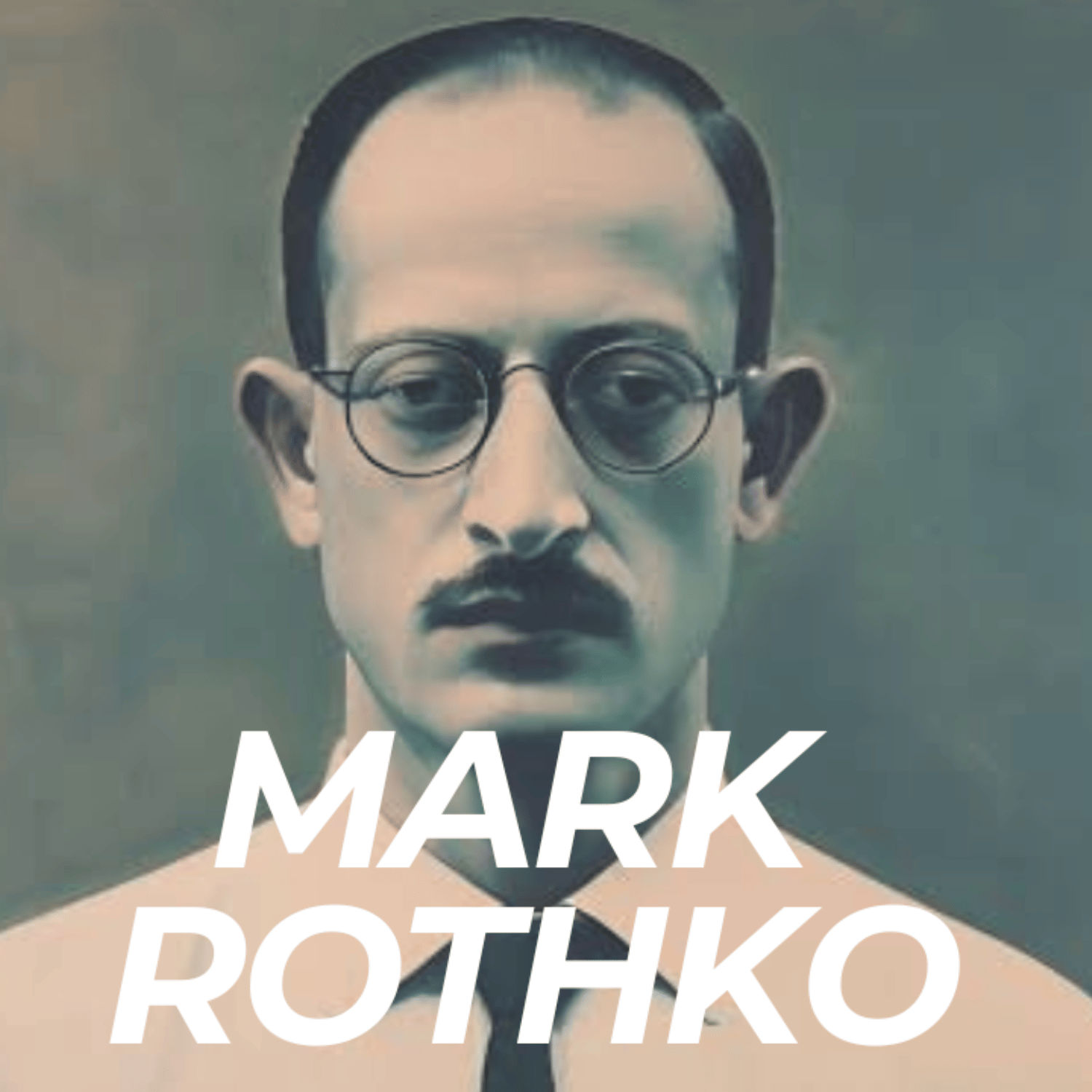
The Peasant Dance
The Peasant Dance is a masterful oil painting created around 1567 by Netherlandish Renaissance artist Pieter Bruegel the Elder. Now housed in the Kunsthistorisches Museum in Vienna, this vibrant panel illustrates a village festival, likely held on the feast day of St. George. Painted during the same period as The Peasant Wedding, the two works are considered the pinnacle of Bruegel's late style, notable for its monumental Italianate figures. Though seemingly joyful and festive, The Peasant Dance is rich in symbolic detail and moral undertones. It reveals human vices like gluttony, lust, anger, and vanity—represented by a peacock feather worn by a reveler. The scene shows villagers engrossed in dancing, music, and drinking, ignoring religious symbols like the Virgin Mary and the nearby church, suggesting a focus on worldly pleasures over spiritual values. The composition cleverly uses gestures and architecture to guide the viewer's eye through the crowded festival. Couples dance hand in hand, and musicians animate the scene with lively tunes. Bruegel’s figures, with their rugged expressions and exaggerated features, bring a raw, earthy realism to the painting. This video explores the layers of meaning, structure, and social commentary behind one of Bruegel’s most iconic works.
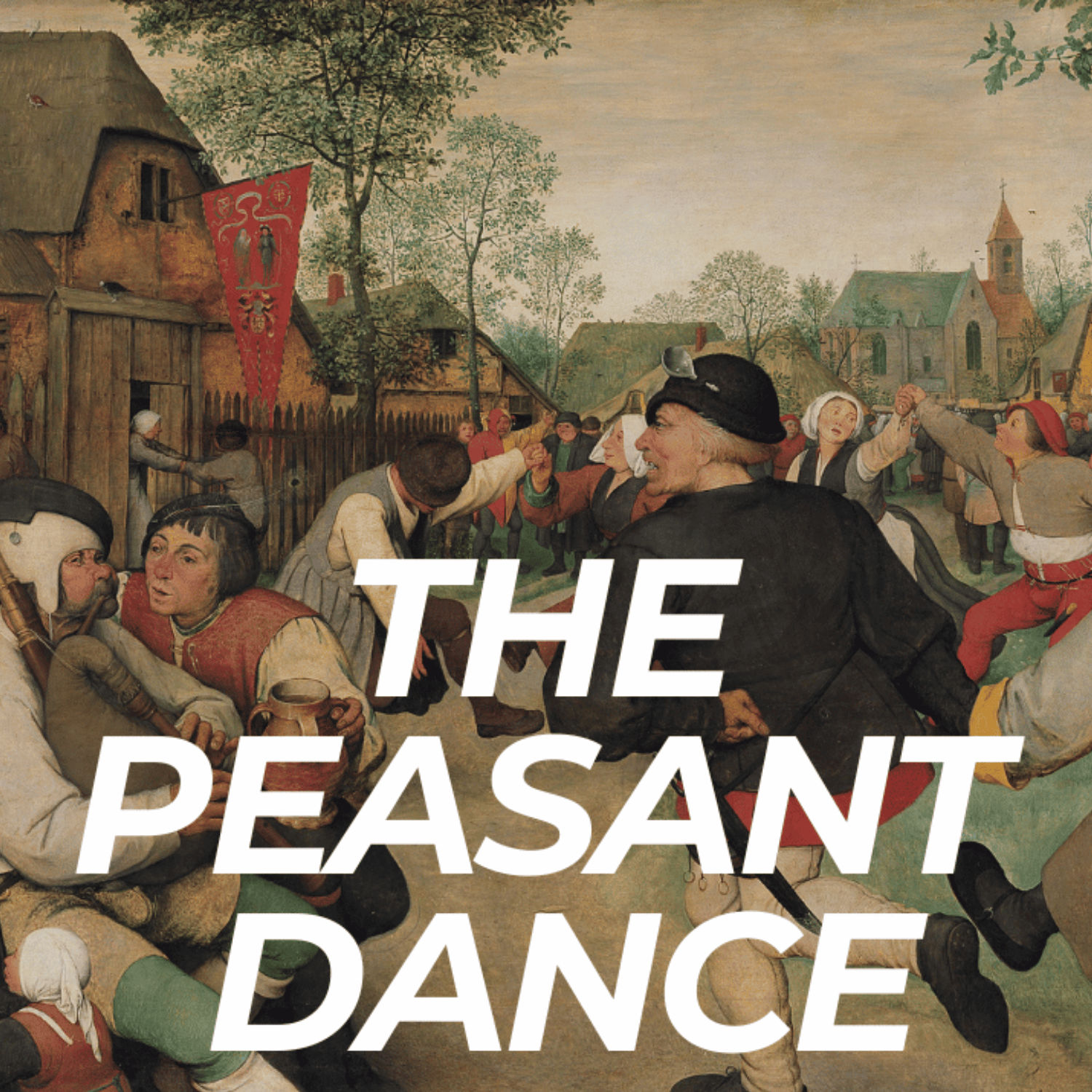
Campbell’s Soup Cans
Andy Warhol’s Campbell’s Soup Cans (1962) marked a turning point in modern art. Comprising 32 canvases, each depicting a different variety of Campbell’s Soup, this series helped define the pop art movement. Warhol, a former commercial illustrator, drew inspiration from consumer culture and mass production. The series premiered at the Ferus Gallery in Los Angeles and initially baffled critics and viewers with its commercial aesthetic. Despite early skepticism, the paintings gained attention, leading to Warhol’s rise as the leading figure in American pop art. Each canvas, hand-painted to resemble the product’s printed label, challenged traditional notions of artistic value, originality, and subject matter. Warhol’s flat, impersonal style removed emotion, highlighting the everyday object as art. Over time, the series became iconic, influencing both popular culture and the art market. Warhol revisited the theme in multiple variations—including screen prints, colorful editions, and torn-label versions. Today, Campbell’s Soup Cans is housed at the Museum of Modern Art in New York and remains a symbol of how Warhol redefined the boundaries of art and culture.

The Dream
Henri Rousseau’s The Dream (1910) is a mesmerizing fusion of fantasy, symbolism, and lush imagination. Measuring over 6 by 9 feet, this oil-on-canvas masterpiece was the final work completed by Rousseau before his death. The painting features Yadwigha, the artist’s Polish mistress from his youth, reclining nude on a divan amidst an exotic jungle brimming with lotus flowers, wild animals, and a mysterious flute-playing snake charmer. This surreal contrast between the domestic and the untamed reflects a dreamscape, blurring the boundaries of reality and imagination. Displayed at the 1910 Salon des Indépendants, The Dream initially met skepticism, but won acclaim from poet Guillaume Apollinaire for its undeniable beauty. Rousseau even wrote a poem to accompany the painting, suggesting it portrays a woman dreaming of jungle music while asleep in Paris. Drawing inspiration from classical reclining nudes and possibly from Zola’s novel Le Rêve, Rousseau blended personal memory, romantic longing, and imaginative vision. Today, The Dream is proudly housed in the Museum of Modern Art, New York, and is considered Rousseau’s crowning achievement in the jungle series.
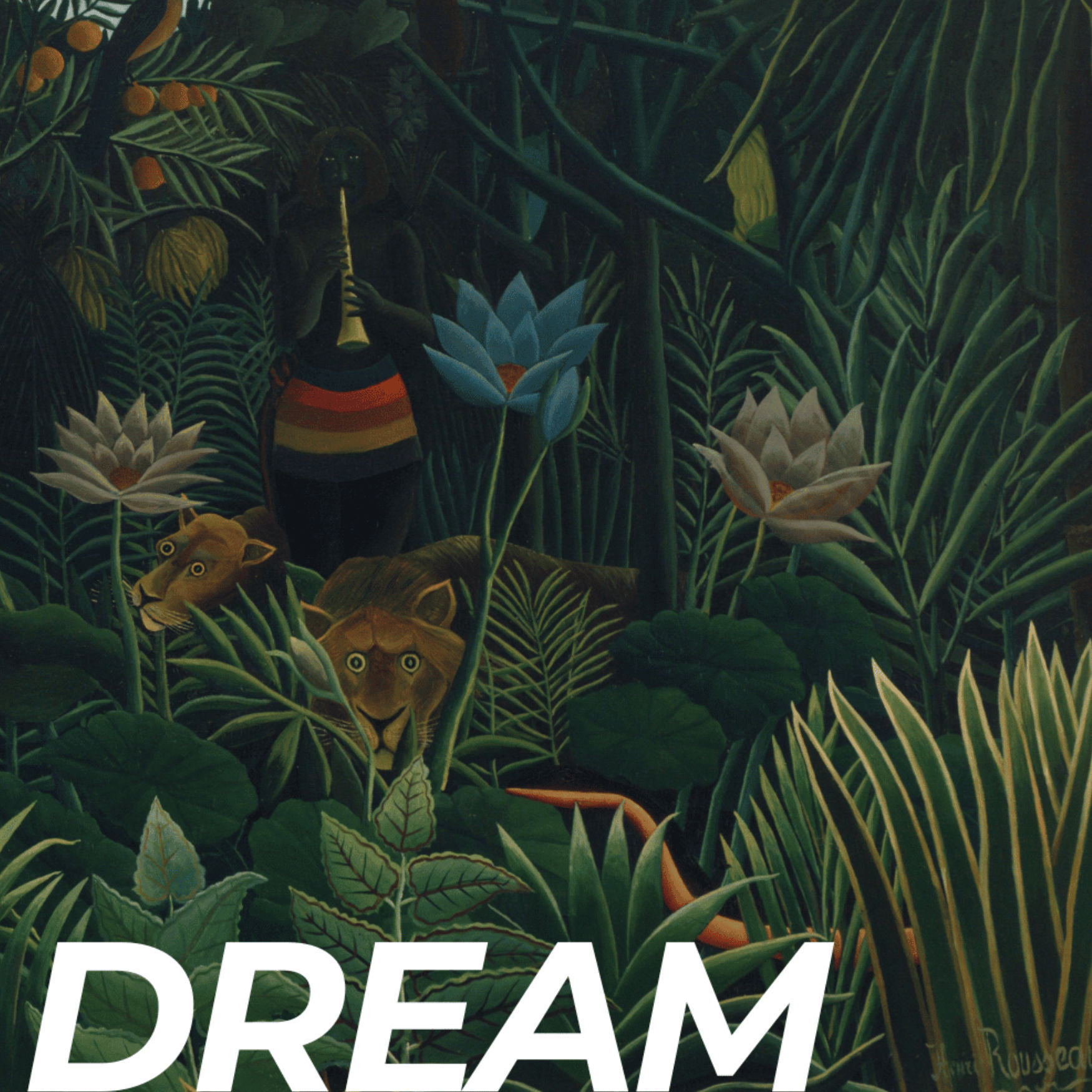
Christina's World
Painted in 1948 by American artist Andrew Wyeth, Christina’s World stands as one of the most iconic works of mid-20th-century American art. Executed in egg tempera on gessoed panel, the painting depicts a woman lying in a wide, open field, gazing toward a distant gray house. This mysterious and emotional image is rooted in reality—its subject, Anna Christina Olson, suffered from a degenerative muscular disorder that left her unable to walk. Refusing to use a wheelchair, she would crawl across the fields around her home in Cushing, Maine, where Wyeth spent his summers. Though Olson inspired the painting, Wyeth used his wife Betsy as the model for the torso. The house in the background, known as the Olson House, became a National Historic Landmark and remains a symbol of quiet endurance. Initially overlooked by critics, the painting was purchased by MoMA's founding director Alfred Barr and gradually became a beloved American treasure. Christina’s World has since permeated pop culture—from literature and music to television and film—cementing its status as a profound reflection of resilience, isolation, and the human spirit.
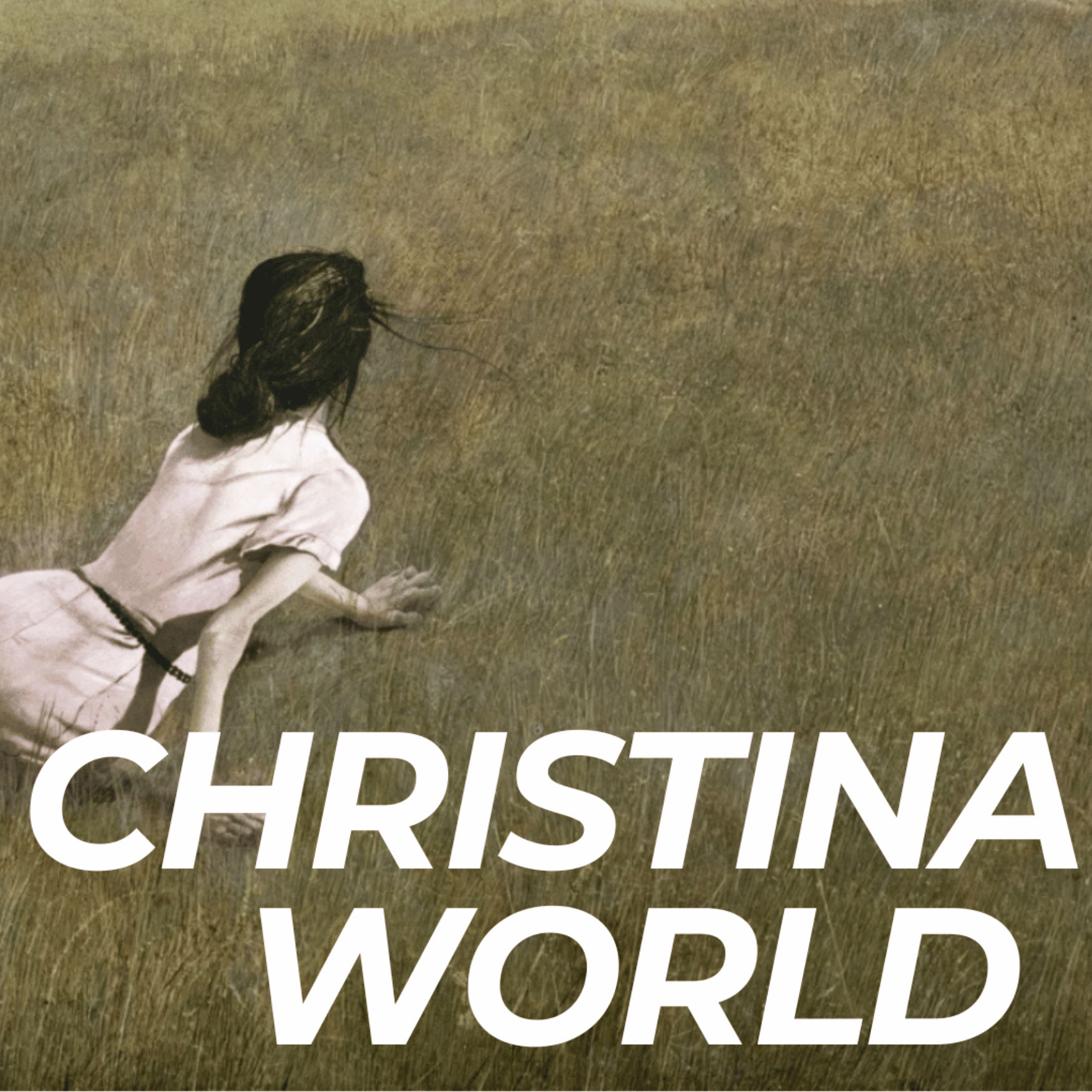
Girl before a Mirror
Created in 1932, Girl Before a Mirror is one of Pablo Picasso’s most celebrated and enigmatic works. Painted during a pivotal year in his life, the portrait features his 22-year-old mistress and muse, Marie-Thérèse Walter. This intimate depiction shows Walter gazing into a mirror, where her reflection appears older and more somber—a stark contrast to her youthful, vibrant self. Picasso masterfully blends Cubism and Surrealism, using bold lines, vivid colors, and abstract forms to explore themes of duality, transformation, and mortality. The painting reveals a deeply personal dimension of Picasso's life, created during his secret affair while still married to Olga Khokhlova. With elements reminiscent of stained-glass windows and echoes of artists like Gauguin and Matisse, this work reflects Picasso’s emotional and artistic evolution. Interpreted by art historians as a memento mori, it suggests an interplay of vanity, sensuality, and death. Held at the Museum of Modern Art in New York City, Girl Before a Mirror stands as a complex symbol of inner and outer identity, and a testament to Picasso’s innovative spirit.
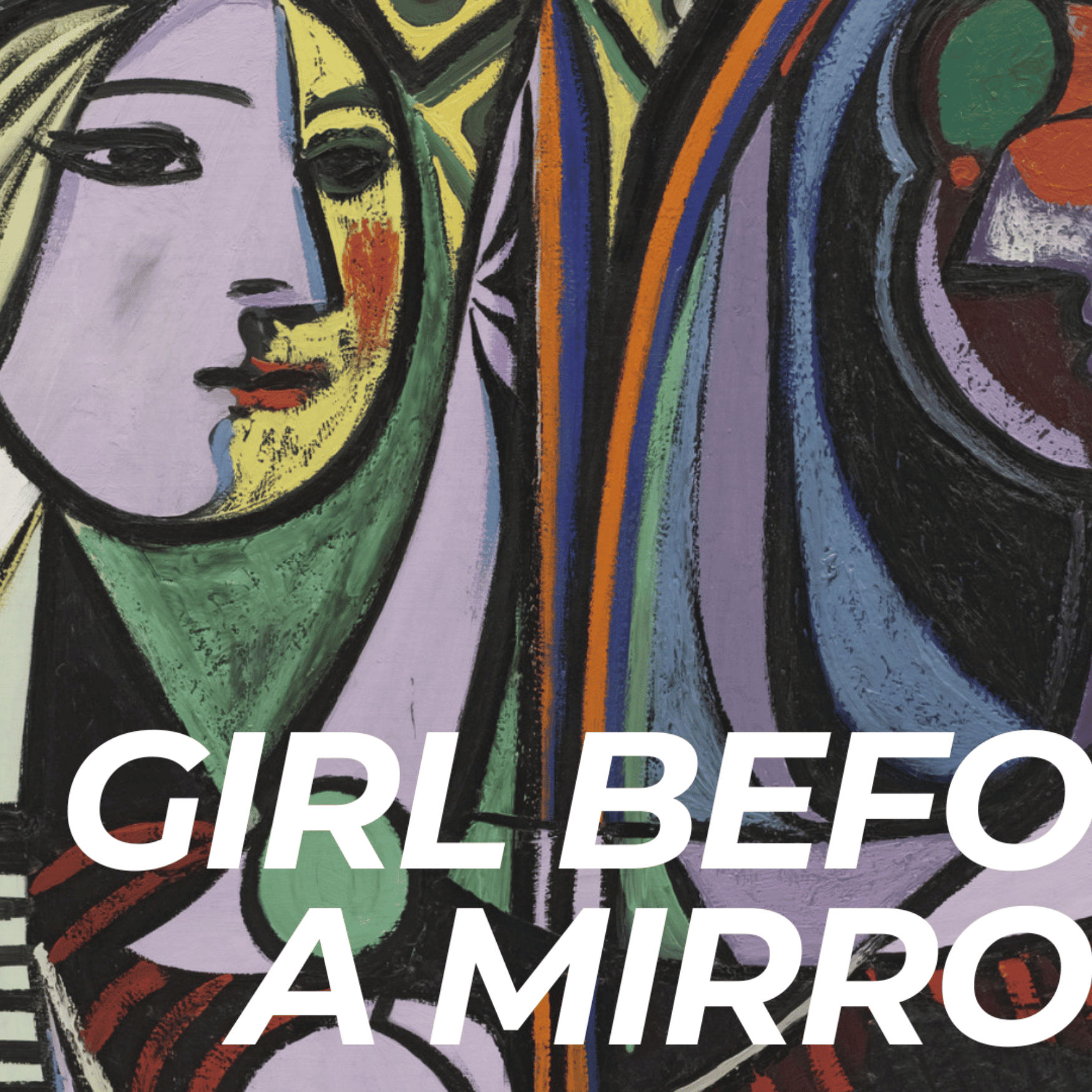
Edward Hopper
Edward Hopper was an American realist painter born in 1882 in Nyack, New York. He is best known for his evocative depictions of modern American life, often capturing moments of stillness, isolation, and quiet introspection. His paintings typically feature urban and rural scenes with strong contrasts of light and shadow, emphasizing mood over detail. One of his most famous works, Nighthawks, portrays people in a late-night diner, reflecting themes of loneliness and urban anonymity. Hopper's style is characterized by clear lines, simple forms, and a subdued color palette. Through his art, he conveyed a deep sense of atmosphere and emotion, making him one of the most significant American artists of the 20th century.
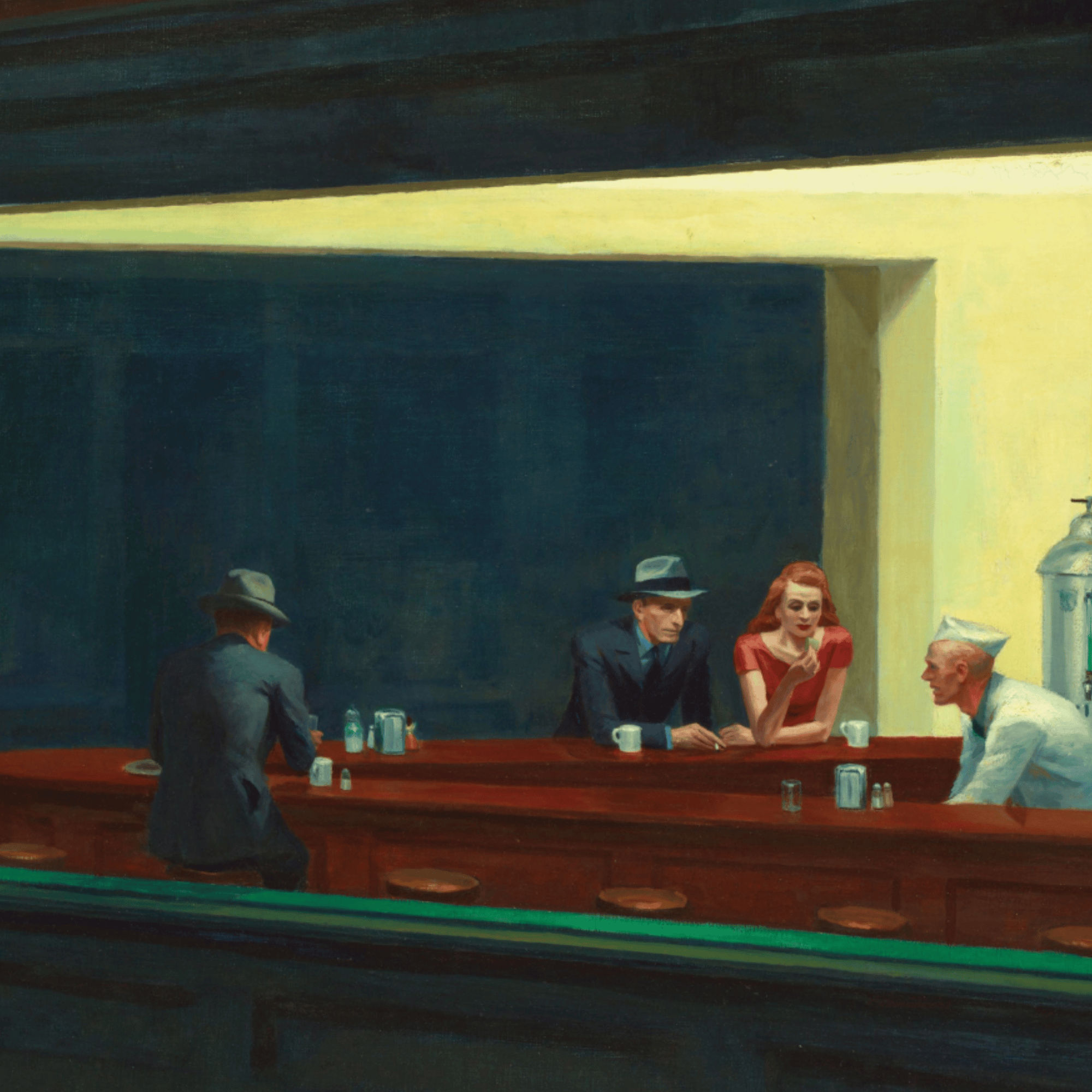
Bridget Louise Riley
Bridget Louise Riley is a British painter best known for her pioneering work in the Op Art movement. Born in 1931 in London, she became internationally recognized in the 1960s for her abstract, geometric paintings that create optical illusions and dynamic visual effects. Her early works were mainly in black and white, using precise patterns of lines and shapes to produce a sense of movement and vibration. Later, she began to explore color, using it in rhythmic and vibrant ways to enhance the visual impact of her compositions. Riley’s art is focused on the viewer’s experience, playing with perception and the mechanics of sight. Her work has been widely exhibited around the world, and she is regarded as one of the most influential artists of the 20th century.
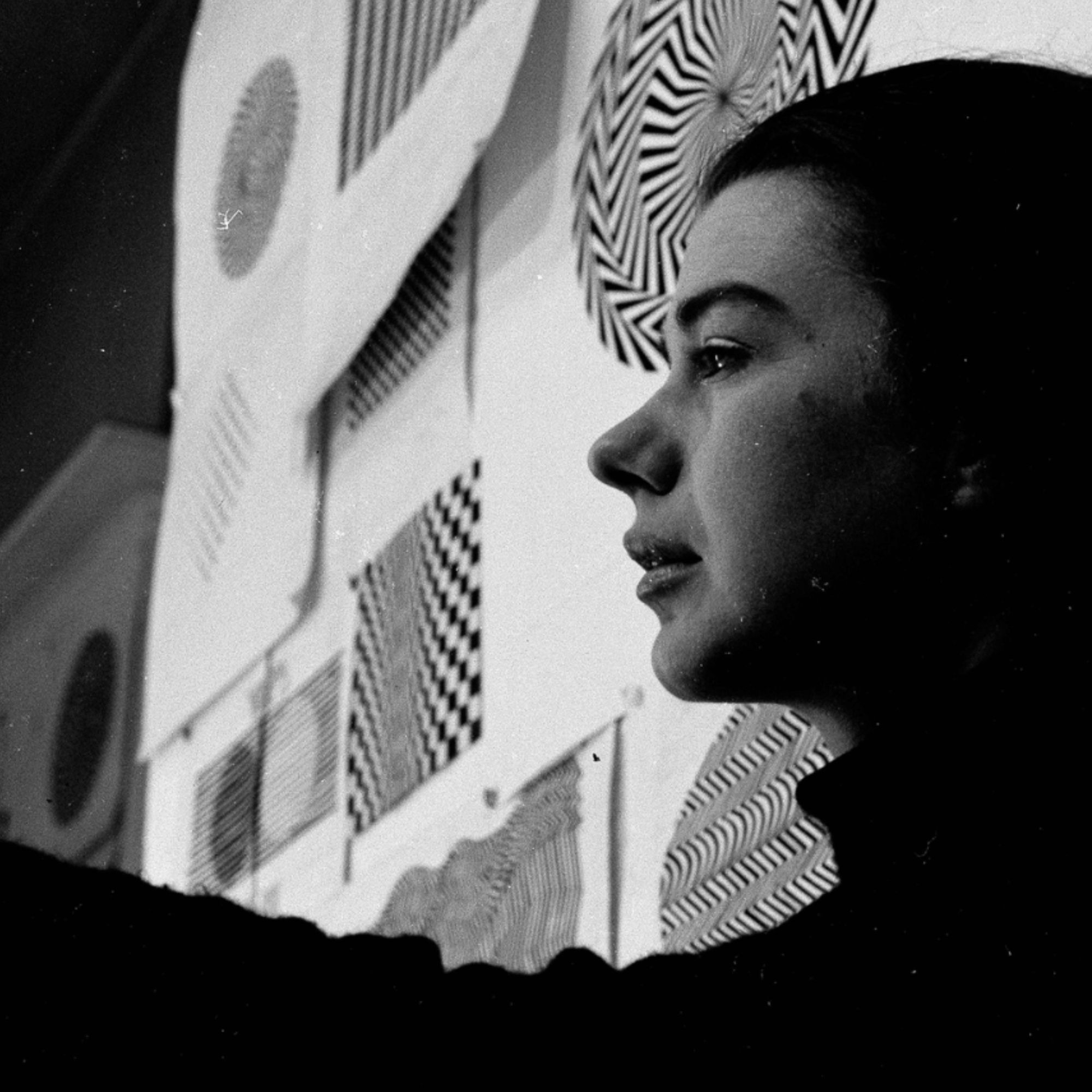
American Gothic
American Gothic It begins, as many great works do, with a glimpse—a fleeting impression, a frame seen not in a gallery, but in life. Grant Wood, American painter, regionalist, aesthete of the unpretentious, sits beside his friend John Sharp in the sweltering summer of 1930, winding their way through the town of Eldon, Iowa. They pass a house—small, white, wooden. But above its humble porch rises something strange: a tall, narrow Gothic window with a pointed arch, nestled beneath a steep gable. A flourish of medieval ecclesiastical grandeur, inexplicably perched in the middle of America’s rural belly. Wood, struck by the dissonance, sketches it hastily on an envelope. That window—sharp, upright, out of place—will soon become one of the most recognizable pictorial elements in 20th-century art. This house—known later as the Dibble House—was built in the early 1880s in the so-called Carpenter Gothic style: a rural American adaptation of Gothic Revival, made possible by jigsaws and pattern books. For Wood, it was neither quaint nor picturesque. It was, in his words, “a structural pretentiousness,” a kind of aspiration carved into clapboard. But he also saw in it a kind of defiant individuality—something earnest, a little absurd, and utterly American. What followed was not a plein air sketch of architecture, but a composition of profound narrative intent. Wood returned home to Cedar Rapids and began to paint—not just the house, but its imagined inhabitants. And so we arrive at American Gothic. The painting presents us with two figures standing upright and front-facing before the house. The man—elderly, sunken-cheeked, grim—is dressed in denim overalls under a black jacket. In his hand, he clutches a pitchfork, the tines rising like gothic spires. The woman beside him—his daughter, according to the artist—wears a colonial-patterned apron, her hair tightly pinned, her gaze slightly averted. Between them is tension, between them is lineage. Let us speak first of composition. The painting’s verticality is no accident. From the tines of the pitchfork, through the striped stitching of the man’s overalls, into the mullioned window behind, every element draws the eye upward. Even the faces—long, drawn, elongated—follow the same ascension. The house’s gables echo the pitchfork. The curtain above them echoes the folds in their clothing. And yet, all is contained within an almost claustrophobic frame, hemmed in by edge and order. The figures are not set in landscape, but locked in place—two sentinels before a domestic altar. The color palette is muted: earthen tones, whites, blacks, soft greens. There is no indulgence, no flamboyance. Even the vegetation—the mother-in-law's tongue and the beefsteak begonia—are chosen not for lushness but for their historical and symbolic relevance. Wood had used the same houseplants in an earlier portrait of his mother. They are emblems of resilience, of domestic endurance...

The Story Behind the Woman and the Ermine in da Vinci’s Art
Lady with an Ermine is a portrait painted by Leonardo da Vinci between 1489 and 1491, during his time at the Milanese court of Ludovico Sforza. The painting depicts Cecilia Gallerani, the young mistress of Ludovico, holding an ermine—a symbolic creature representing purity, moderation, and possibly referencing Ludovico himself. Executed in oil on walnut wood, it demonstrates Leonardo’s mastery in anatomy, movement, and psychological depth. The portrait is one of only four known female portraits by Leonardo, making it a rare and significant work. Originally painted with a bluish-grey background, it was later overpainted black in the 18th century. Despite minor restorations and misconceptions over the years, technical analysis confirms it remains in excellent condition. The ermine has multiple interpretations: a symbol of Cecilia’s chastity, a nod to her pregnancy, or a pun on her surname from the Greek word galéē. Leonardo’s composition—marked by contrapposto, delicate chiaroscuro, and lifelike detail—highlights both Cecilia’s intellect and beauty. Now housed in Kraków's Czartoryski Museum, the painting was brought to Poland in 1798 and survived war, looting, and exile.
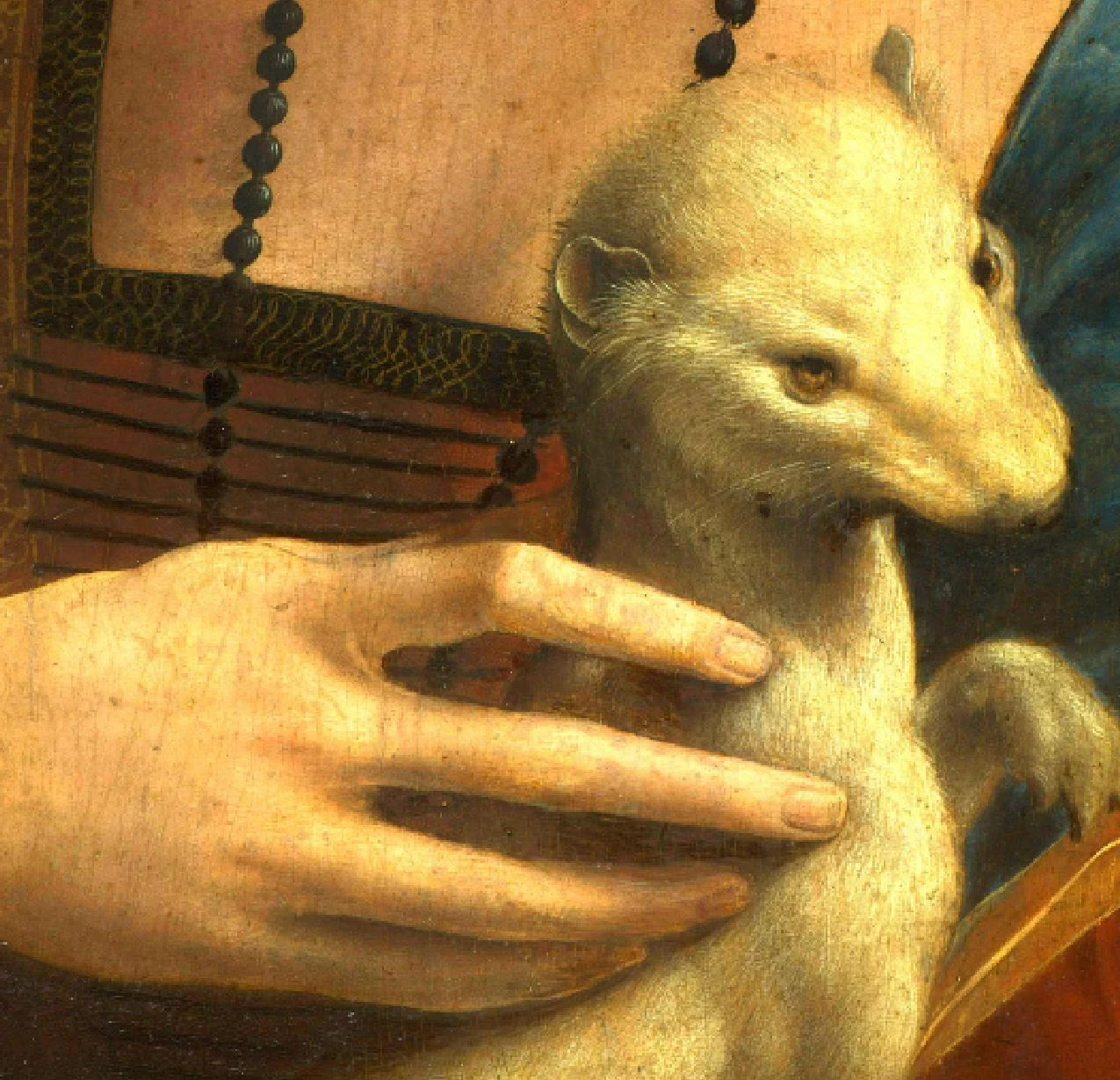
The Art of Helen Chadwick
Helen Chadwick (1953–1996) was a British artist known for her innovative and provocative works that challenged conventional notions of beauty, sexuality, and the human body. She was a leading figure in the British art scene during the 1980s and 1990s, renowned for her diverse artistic practice spanning photography, sculpture, installation, and mixed media. Chadwick's work often explored themes of the body, nature, and the relationship between culture and the environment. She employed a wide range of materials, from organic substances like chocolate and flowers to more unconventional mediums, to create visually stunning and conceptually rich artworks. Born in London, Chadwick studied at the Chelsea School of Art and the Royal College of Art. She emerged as a prominent artist in the 1980s, exhibiting widely in the UK and internationally. Her groundbreaking series such as "Piss Flowers" and "Carcass" challenged societal taboos and questioned the boundaries between the human and the natural world...

Catherine Opie
Catherine Opie (born 1961) is an American photographer renowned for her compelling portraits and documentation of American subcultures. Her work often explores themes of identity, community, and social issues. Opie's photographs range from intimate portraits to expansive landscapes, capturing the essence of diverse communities and individuals. Her unique visual style and documentary approach have earned her widespread acclaim in the contemporary art world. Born in Sandusky, Ohio, Opie studied at the San Francisco Art Institute and the California Institute of the Arts. She emerged as a prominent figure in the 1990s art scene in Los Angeles, where she currently resides and teaches at the University of California, Los Angeles (UCLA). Opie's work is characterized by its honesty and depth, delving into topics such as gender identity, sexuality, and the cultural landscape of America. She employs various photographic techniques, including portraiture, landscape photography, and studio setups, to explore these complex themes...

Barnett Newman
Barnett Newman was born in New York City in 1905. He studied philosophy at City College of New York and later attended the Art Students League. Newman's early works were influenced by European modernists, but he soon developed his unique style characterized by bold color fields and vertical "zips." He is best known for his series of paintings titled "Stations of the Cross" and "Onement" series. Newman's art emphasized the experience of the viewer, inviting contemplation and reflection on themes of existence and spirituality. Throughout his career, Newman remained committed to exploring the essence of painting and the relationship between color, form, and space.

Steven Meisel
Steven Meisel is an influential American fashion photographer recognized for his groundbreaking work in the fashion industry. Born in 1954, Meisel has established himself as one of the most sought-after photographers, renowned for his innovative approach and distinctive style. Meisel's career took off in the 1980s when he began collaborating with renowned fashion magazines such as Vogue and Harper's Bazaar. His work revolutionized the concept of beauty in fashion photography, pushing boundaries and challenging conventions. Throughout his career, Meisel has captured the essence of contemporary fashion, creating iconic images that have shaped the visual landscape of the industry. His photographs often blend elements of art, culture, and storytelling, reflecting his keen eye for composition and narrative. Based in New York City, Meisel's studio has been a hub for creativity and innovation, attracting top models, stylists, and designers from around the world. His ability to capture the zeitgeist of each era has earned him widespread acclaim and cemented his legacy as a visionary in fashion photography...
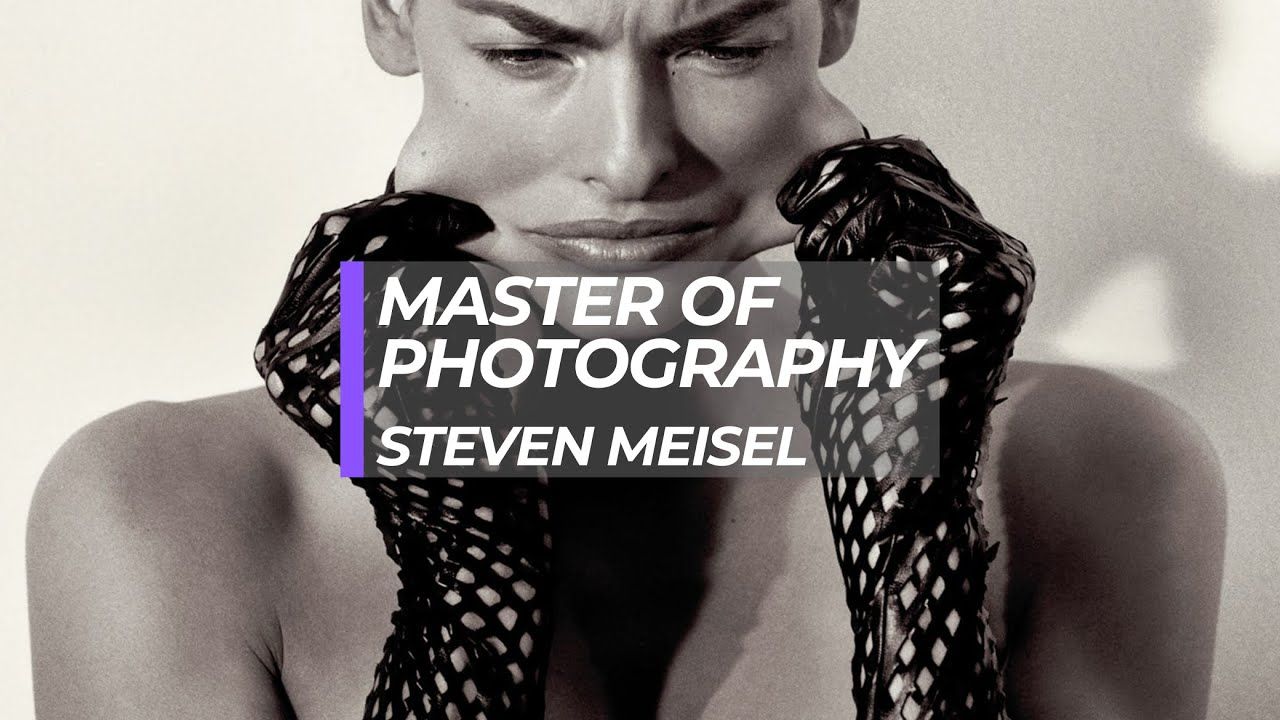
Berthe Morisot
Berthe Morisot (1841–1895) was a pioneering French Impressionist painter, celebrated for her remarkable contributions to the art world during the late 19th century. As one of the few female artists associated with the Impressionist movement, Morisot's works challenged societal norms and reshaped the landscape of modern art. Born in Bourges, France, Morisot received formal artistic training and began her career under the guidance of notable painters such as Camille Corot and Édouard Manet. She quickly gained recognition for her distinctive style and masterful depiction of light, color, and atmosphere. Morisot's paintings often depicted intimate scenes of everyday life, focusing on domestic settings, landscapes, and portraits of family members and friends. Her brushwork and use of vibrant colors exemplified the core tenets of Impressionism, emphasizing the fleeting effects of light and the immediacy of perception. Throughout her career, Morisot exhibited alongside prominent Impressionist artists and played a significant role in shaping the movement's artistic direction. Her works are celebrated for their sensitivity, spontaneity, and ability to capture the essence of modern life. Morisot's legacy continues to inspire generations of artists, earning her a lasting place in art history as a pioneering figure in the Impressionist movement....
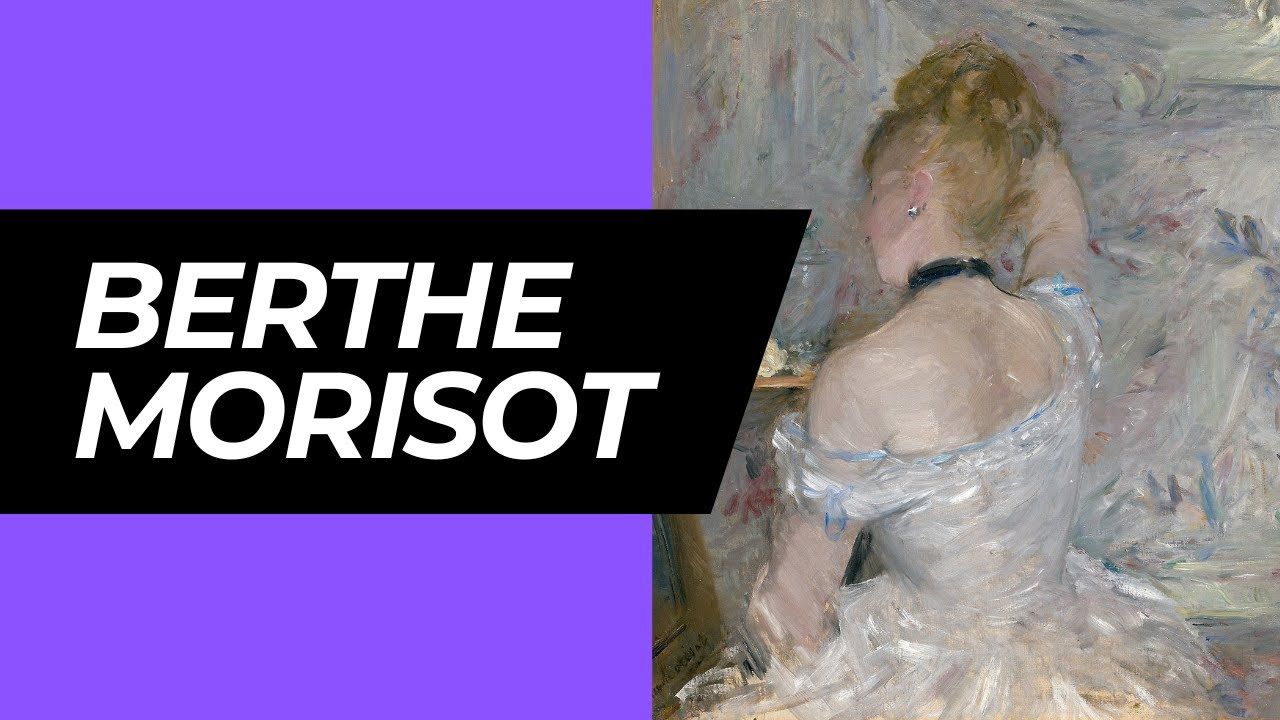
Peter Lindbergh
Peter Lindbergh (1944–2019) was a German fashion photographer renowned for his revolutionary approach to capturing the essence of beauty and style. Throughout his prolific career, Lindbergh became synonymous with a raw, unfiltered aesthetic that challenged conventional standards of beauty in the fashion industry. Born in Leszno, Poland, Lindbergh grew up in Duisburg, Germany, where he developed a keen interest in art and photography from a young age. His early influences included the works of renowned photographers such as Richard Avedon and Irving Penn. Lindbergh's breakthrough came in the 1980s when he began reshaping the world of fashion photography with his candid, black-and-white portraits that celebrated the natural beauty and individuality of his subjects. His iconic images often featured top models and celebrities in uncontrived settings, devoid of excessive retouching or artificial glamour. Throughout his career, Lindbergh collaborated with leading fashion magazines and brands, leaving an indelible mark on the industry with his timeless images. His work emphasized the importance of authenticity and emotional resonance, revolutionizing the way beauty and fashion were portrayed in photography. Lindbergh's influence extended beyond the realm of fashion, as he also ventured into filmmaking and art direction, further showcasing his versatile talents and innovative spirit. His legacy continues to inspire generations of photographers and artists around the world.

Agnes Denes
Agnes Denes stands as a pioneering figure whose multidisciplinary artworks defy traditional boundaries, traversing conceptual art, environmental interventions, and meticulous drawings. Her visionary creations intertwine intellect, philosophy, and environmental concerns, challenging conventional artistic norms. Join us on an exploration of the life and artistry of Agnes Denes, an artist whose oeuvre reflects a profound engagement with ideas and an innovative approach to artistic expression. Born in Budapest, Hungary, in 1931, Agnes Denes' early life was shaped by the tumultuous events of World War II and its aftermath. The impact of these turbulent times instilled in her a deep awareness of human resilience and the complex interplay between societal structures and individual experiences. Denes' upbringing was marked by intellectual curiosity and a thirst for knowledge. Her family encouraged her pursuit of education in both fine arts and philosophy, nurturing a foundation for her future artistic explorations. Her relocation to the United States in the late 1950s opened doors to new artistic horizons. Immersed in the vibrant cultural landscape of New York City, Denes engaged with avant-garde movements and philosophical dialogues, laying the groundwork for her distinctive artistic vision. Agnes Denes' artistic journey is a narrative of continual innovation and exploration that defies categorization. Her early artistic endeavors encompassed drawing, painting, and sculpture, showcasing technical skill and an innate creative impulse. However, her trajectory swiftly evolved, propelling her into the realm of conceptual art and groundbreaking environmental interventions. In the 1960s, Denes emerged as a key figure in the conceptual art movement. Her works during this period challenged the established notions of art by focusing on the conceptual depth of ideas over traditional artistic methods. She became known for her thought-provoking propositions that interrogated societal norms, the human condition, and environmental concerns. Denes' early conceptual pieces, such as "Rice/Tree/Burial" (1968), presented novel ways of considering the environment and humanity's interaction with it. This project, which involved planting a rice field in New York State, foreshadowed her later large-scale environmental works and established her as an artist deeply concerned with ecological themes...

Annie Leibovitz
Annie Leibovitz, born in 1949 in Waterbury, Connecticut, emerged as one of the most influential photographers of her generation, renowned for her iconic portraits and insightful visual storytelling. Leibovitz's fascination with photography began during her teenage years. She enrolled at the San Francisco Art Institute in the late 1960s, where she honed her skills and embraced the vibrant counterculture of the era. Her early influences were eclectic, drawing inspiration from the diverse artistic and cultural milieu of San Francisco, including the burgeoning rock music scene and the social upheavals of the time. Her career took a pivotal turn when she started working as a photographer for Rolling Stone magazine in 1970. This marked the beginning of her illustrious journey, capturing the essence of the 1970s counterculture and iconic figures in music, entertainment, and politics. Leibovitz's immersive approach to photography allowed her to develop a distinctive style characterized by intimate yet evocative portraits that went beyond mere celebrity snapshots. Her tenure at Rolling Stone provided Leibovitz with a platform to create images that transcended mere documentation, capturing the essence of her subjects with raw authenticity and emotional depth. Her ability to establish a rapport with her subjects, coupled with her innovative use of lighting and composition, set her apart and propelled her into the realm of renowned portrait photographers. Throughout her early career, Leibovitz's eclectic influences and experiences—immersion in counterculture, exposure to diverse artistic expressions, and her work with Rolling Stone—shaped her photographic style. Her ability to capture the essence of her subjects, whether rock stars or political figures, in a way that transcended the traditional boundaries of portraiture, laid the foundation for her groundbreaking contributions to photography. Annie Leibovitz's early works were shaped by a confluence of diverse influences that left a profound impact on her artistic development and contributed to the evolution of her distinctive style in photography. The San Francisco Counterculture: Leibovitz's formative years in San Francisco during the 1960s immersed her in a vibrant countercultural movement. The city's bohemian atmosphere, artistic experimentation, and social revolution profoundly influenced her perspective. This environment instilled in her a sense of openness, creativity, and a willingness to challenge conventions. Her exposure to this counterculture set the stage for her later approach to photography, encouraging unconventional compositions and an intimate connection with her subjects. Music and Rock Culture: Leibovitz's immersion in the music scene of the 1970s significantly shaped her early works. Her tenure at Rolling Stone magazine allowed her to capture iconic moments and personalities in rock music. Her portraits of musicians such as The Rolling Stones, John Lennon, and Bruce Springsteen not only portrayed the individuals but also conveyed the spirit and energy of the music scene. These images became iconic representations of the era and showcased Leibovitz's ability to infuse her portraits with the essence of the music culture she was immersed in. Photographic Mentors and Techniques: Early mentors like Ralph Gibson and Robert Frank influenced Leibovitz's technical approach to photography. She learned about composition, lighting, and the nuances of storytelling through images from these mentors. Their guidance helped her develop a keen eye for capturing candid and intimate moments, laying the groundwork for her signature style of candid yet artfully composed portraits. Literature and Visual Arts: Leibovitz's broad range of influences extended beyond photography. She drew inspiration from literature, art, and cinema, incorporating elements from these mediums into her visual storytelling. Her ability to imbue her images with narrative depth and visual symbolism reflects the ...

Antoni Gaudí
Antoni Gaudí, a visionary Catalan architect, was born in 1852 in Reus, Catalonia, Spain. His upbringing and early years laid the foundation for his groundbreaking architectural style and profound impact on the cityscape of Barcelona. Gaudí grew up in a family strongly rooted in craftsmanship, with his father working as a coppersmith. This environment exposed Gaudí to the world of artisanal work and inspired an appreciation for intricate details and skilled craftsmanship that would profoundly influence his architectural approach. His early education in architecture began at the Provincial School of Architecture in Barcelona, where he showcased exceptional talent and a unique creative vision. Gaudí's studies coincided with a period of political and cultural resurgence in Catalonia, fostering a sense of regional identity and a renewed interest in Catalan culture, language, and art. These cultural movements deeply influenced Gaudí's artistic sensibilities and his commitment to incorporating Catalan heritage into his architectural designs. During his formative years, Gaudí was profoundly influenced by various artistic and architectural styles. He drew inspiration from Gothic architecture, fascinated by the intricate ornamentation and verticality of Gothic structures. Additionally, he embraced the organic forms found in nature, drawing from natural elements such as trees, plants, and seashells. These influences would later manifest in his signature style characterized by organic shapes, intricate details, and innovative structural techniques. Gaudí's exposure to the works of other prominent architects and artists, including ...

Salvador Dalí
Salvador Dalí stands as an iconic figure whose artistic prowess transcended the realms of conventional thought. His distinctive style and enigmatic persona continue to mesmerize and intrigue art enthusiasts worldwide. Join us on an exploration of the life and legacy of Salvador Dalí, a visionary artist whose impact on the art world remains unparalleled. Dalí was born on May 11, 1904, in Figueres, Catalonia, Spain. His upbringing within a supportive and artistic environment fostered his early interest in creativity. His parents, recognizing his burgeoning talent, encouraged his artistic pursuits from an early age. Dalí's formal artistic education began at the Royal Academy of Fine Arts of San Fernando in Madrid. Despite his brief tenure, his unorthodox methods and rebellious spirit set him apart from his contemporaries. His encounters with avant-garde movements like Cubism and Dadaism during this period laid the foundation for his future artistic exploration. During his formative years, Dalí developed an affinity for Surrealism, a movement that profoundly influenced his artistic vision. The influence of Sigmund Freud's psychoanalytic theories and the Surrealist manifesto shaped his fascination with the subconscious mind, dreams, and the irrational aspects of human existence. Dalí’s early artistic endeavors were marked by his profound fascination with Impressionism and Cubism. While studying at the Royal Academy of Fine Arts of San Fernando in Madrid, he was exposed to various avant-garde movements, sparking his interest in experimenting with diverse styles and techniques. In the 1920s, Dalí's encounter with Surrealism transformed the trajectory of his artistry. His integration into the Surrealist movement, led by André Breton, inspired him to delve into the depths of the subconscious mind, dreams, and the irrational aspects of human existence. His iconic work "The Persistence of Memory" (1931), with its melting clocks and surreal imagery, exemplifies this shift in artistic expression and solidified his status as a leading Surrealist. Dalí's artistic evolution within Surrealism was characterized by his ability to render dream-like scenes with meticulous detail and precision. He developed his unique technique called "paranoiac-critical method," which allowed him to access and depict...

Adrian Piper
Adrian Margaret Smith Piper (born September 20, 1948) is an American conceptual artist and Kantian philosopher. Her work addresses how and why those involved in more than one discipline may experience professional ostracism, otherness, racial passing, and racism by using various traditional and non-traditional media to provoke self-analysis. She uses reflection on her own career as an example. Piper has been awarded various fellowships and medals and has been described as having "profoundly influenced the language and form of Conceptual art". In 2002, she founded the Adrian Piper Research Archive (APRA) in Berlin, Germany, the focus of a foundation that was established in 2009.
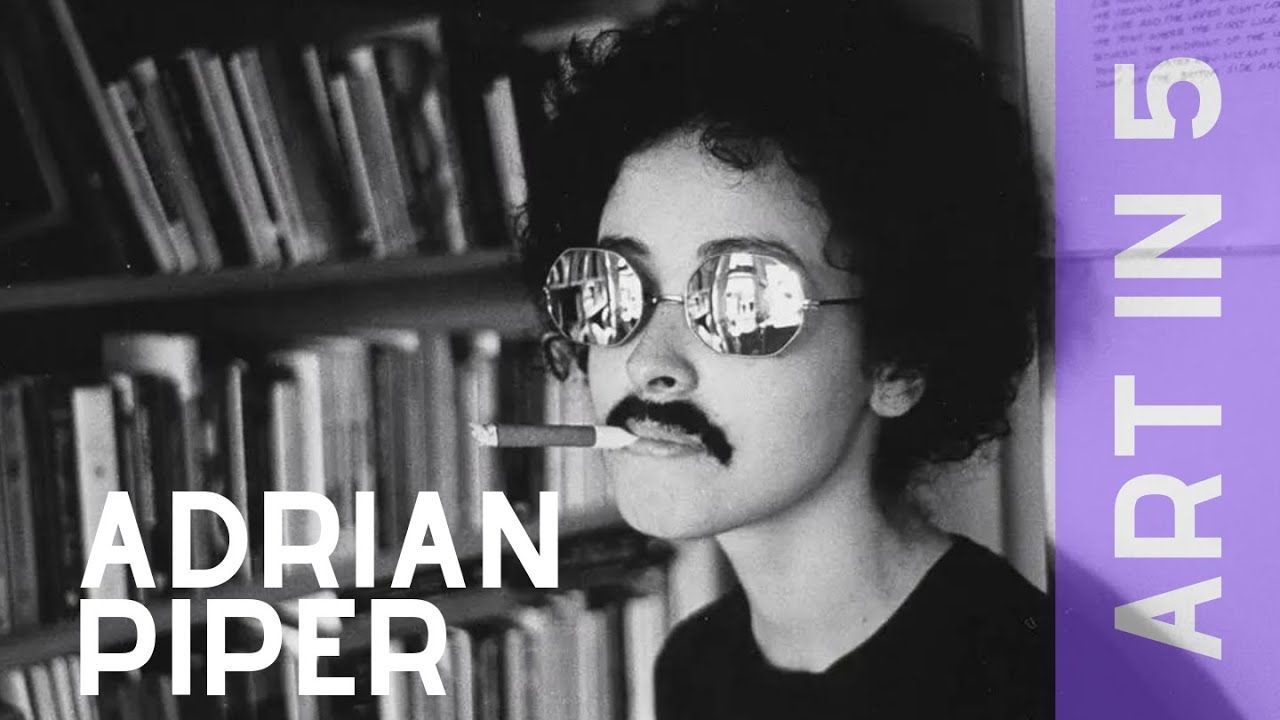
Junji Ito
Junji Ito, a renowned Japanese manga artist, has earned his place as a master of horror through his unique and chilling creations. Born on July 31, 1963, Ito's distinctive style and ability to evoke fear and unease have made him a prominent figure in the world of manga and horror fiction. Ito's artistic journey began with his debut work "Tomie" in the late 1980s, which introduced readers to his signature blend of supernatural horror and psychological tension. His ability to tap into primal fears and unsettling imagery quickly garnered attention and set him apart as a pioneer of horror manga. One of Ito's most celebrated works is "Uzumaki," a series that revolves around a town cursed by spirals. The story delves into the psychological unraveling of the town's inhabitants as they are consumed by the obsession and dread associated with spirals. Ito's meticulous attention to detail and his ability to transform everyday objects into sources of terror contribute to the eerie atmosphere that permeates his works. Ito's artistic mastery extends to his ability to evoke fear through both visuals and narrative. His use of grotesque imagery, surreal landscapes, and unnerving transformations contributes to a sense of visceral horror that lingers in the reader's mind. The psychological elements of his stories often explore the fragility of the human psyche and the boundary between reality and delusion. Another hallmark of Ito's work is his knack for blending the supernatural with mundane settings. His stories often unfold in familiar environments, amplifying the sense of dread by making the horror feel closer to home. This contrast between the everyday and the uncanny creates a sense of discomfort that heightens the impact of his narratives. Ito's impact on the horror genre extends beyond manga. His works have been adapted into various media, including animated adaptations and live-action films. His influence has also reached international audiences, where his stories have left a lasting impact on horror enthusiasts and creators alike. Junji Ito's legacy as a horror manga artist is undeniable. His ability to tap into the darkest corners of human fears and his mastery of visual storytelling have earned him a place as one of the genre's most celebrated and innovative creators. Through his chilling narratives and iconic illustrations, he continues to redefine the boundaries of horror fiction and invite readers into a world of unrelenting terror and fascination...

Robert Frank
Robert Frank, a trailblazing photographer and filmmaker, revolutionized documentary photography and visual storytelling, leaving an indelible mark on the art world. His life's narrative is one of resilience, artistic innovation, and a profound exploration of the human condition. Born on November 9, 1924, in Zürich, Switzerland, Robert Frank's early life unfolded amidst the backdrop of a tumultuous Europe between the two World Wars. His upbringing was marred by the rise of fascism, economic instability, and the looming specter of war. These formative experiences instilled in him a sense of restlessness and a desire for artistic expression. Frank's passion for photography emerged during his teenage years when he apprenticed with various photographers and printers in Switzerland. His artistic inclinations prompted him to seek opportunities beyond the confines of his home country. In 1947, at the age of 23, Frank embarked on a journey to the United States, setting sail on what would become a transformative voyage. Upon arriving in America, Frank initially worked as a fashion photographer, honing his technical skills while absorbing the diverse cultural tapestry of the country. However, his artistic vision transcended the confines of commercial photography. Immersed in the vibrant and dynamic landscape of post-war America, Frank was deeply moved by the social realities, disparities, and the nuances of everyday life. His seminal work, "The Americans," published in 1958, stands as a testament to his perceptive eye and groundbreaking approach to documentary photography. Traveling across the United States for two years, Frank captured a poignant visual narrative that unveiled the complexities and contradictions of American society. His candid and unfiltered images portrayed a raw, unvarnished truth—poverty, segregation, alienation, and the mundane aspects of daily existence. Frank's photographic style deviated from the established norms of the time. He eschewed formal compositions, opting instead for spontaneous and often blurry shots that captured the essence of fleeting moments. His use of grainy film, unconventional angles, and focus on marginalized communities challenged the prevailing conventions of photography, ushering in a new era of visual storytelling...

Richard Diebenkorn
Richard Diebenkorn, a luminary in the realm of American art, remains an artist of profound influence celebrated for his remarkable abstract and figurative works that encapsulated the essence of California landscapes and the human experience. His artistic odyssey unfolds as a narrative of exploration, evolution, and a deep-rooted connection to the surroundings that shaped his creative vision. Born on April 22, 1922, in Portland, Oregon, Diebenkorn’s formative years were colored by an environment ripe for artistic exploration. His family's relocation to San Francisco during his childhood opened the doors to a rich cultural tapestry, immersing him in the vibrant artistic milieu of the Bay Area. It was here, amidst the bustling artistic scene, that Diebenkorn's early artistic inclinations began to germinate. Enrolled in the California School of Fine Arts, later known as the San Francisco Art Institute, Diebenkorn was exposed to an eclectic blend of artistic movements. The city's diverse influences—ranging from the expressive gestures of abstract expressionism to the nuanced representations of figurative painting—nurtured his burgeoning talent and laid the foundation for his artistic trajectory. The Bay Area, with its varied landscapes and a fusion of urban vibrancy and natural beauty, became an integral muse for Diebenkorn. His surroundings, characterized by the play of light across the coastline, the expanse of the ocean, and the organic forms of the landscape, seeped into his consciousness and would later manifest vividly in his art. Diebenkorn’s artistic evolution was marked by an insatiable curiosity and a relentless pursuit of innovation. Transitioning seamlessly between periods of abstraction and representation, each artistic phase was a testament to his introspection and experimentation. His renowned “Ocean Park” series, renowned for its abstract depictions of the Californian landscape, stands as an enduring testament to his mastery of color, form, and spatial relationships. The artist’s profound connection to the Californian landscapes imbued his works with an emotive quality. Whether through abstract interpretations or figurative representations, Diebenkorn’s art eloquently echoed the essence of the West Coast—the interplay of light and shadow, the vast expanses of space, and the emotive depth of the surroundings. Beyond his artistic contributions, Diebenkorn’s legacy resonates in his influence as an esteemed educator. His teachings and insights have left an indelible impact on subsequent generations of artists, carrying forward his artistic ethos and multifaceted explorations in the world of art...
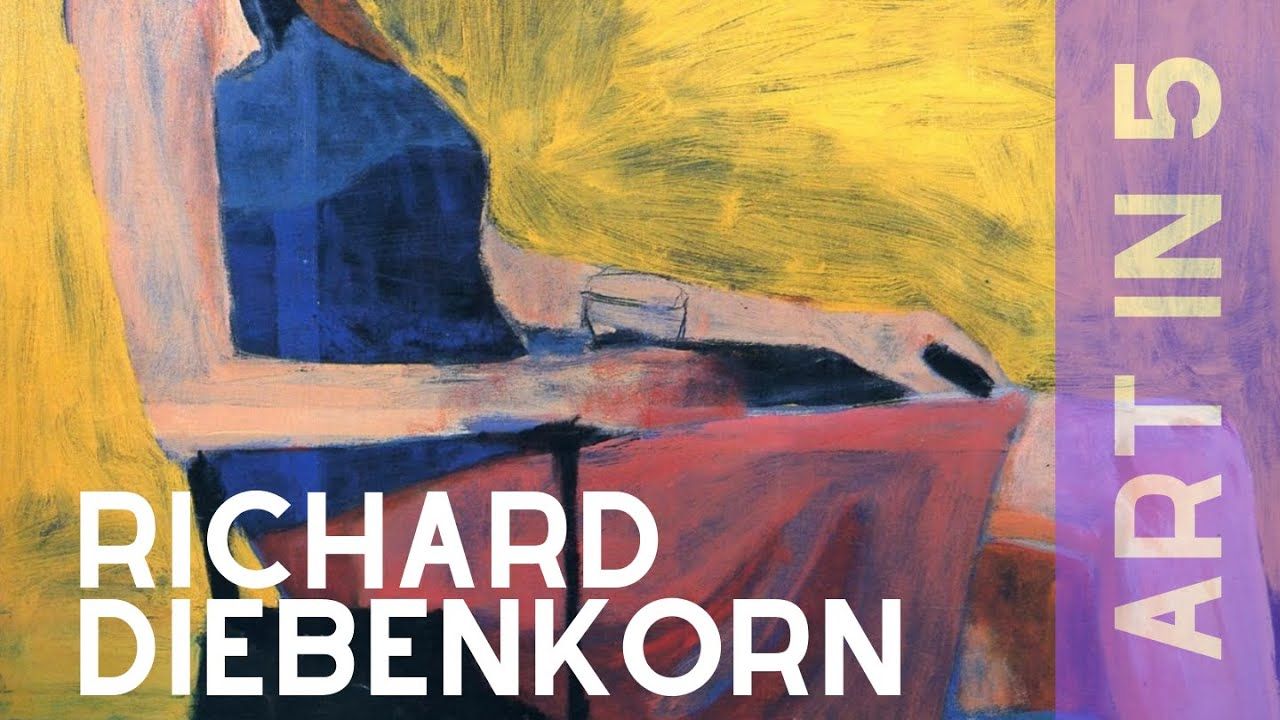
Wassily Kandinsky
Wassily Kandinsky, a luminary of the 20th-century art scene, stands as an icon whose pioneering work transcended the boundaries of traditional art. His name is synonymous with the birth of abstract art, a realm where colors, shapes, and emotions coalesced to redefine the very essence of artistic expression. Join us on an odyssey through the life and mind of this revolutionary artist, where his brushstrokes on canvas became gateways to a world of unbounded creativity and unfathomable depth. Born in Moscow in 1866, Kandinsky's early life unfolded against the backdrop of a rapidly changing world. The son of a successful tea merchant and a musician, his childhood was steeped in the vibrant culture of Russia. The hues of Moscow's bustling streets, the resonating melodies of classical compositions, and the rich tapestry of Russian folk art all became the palette from which Kandinsky would draw inspiration for his artistic journey. His youthful years were marked by an innate curiosity and a profound sensitivity to the visual and auditory stimuli surrounding him. This early fascination with colors, forms, and sounds would prove to be the seedbed for his future artistic endeavors. With an upbringing that fostered a deep appreciation for the arts, Kandinsky's path seemed destined to intertwine with the world of creativity. After initial studies in law and economics, Kandinsky embarked on a transformative journey by enrolling in art school. His academic pursuits took him to Munich and later Paris, where he imbibed the diverse artistic currents prevalent in Europe at the turn of the century. These formative years were crucial, laying the groundwork for Kandinsky's artistic vision to blossom and take flight beyond the confines of traditional artistic norms. The evolving socio-political landscape of Europe and the tumultuous times leading up to the First World War echoed within Kandinsky's artistic conscience. Amidst this turbulence, he sought refuge in art, finding solace and inspiration in the abstract realms of his imagination, ultimately birthing a new visual language that transcended the representational. Stay tuned as we unravel further chapters in Kandinsky's remarkable journey, tracing the evolution of his artistry and the profound impact he made on the world of modern art...
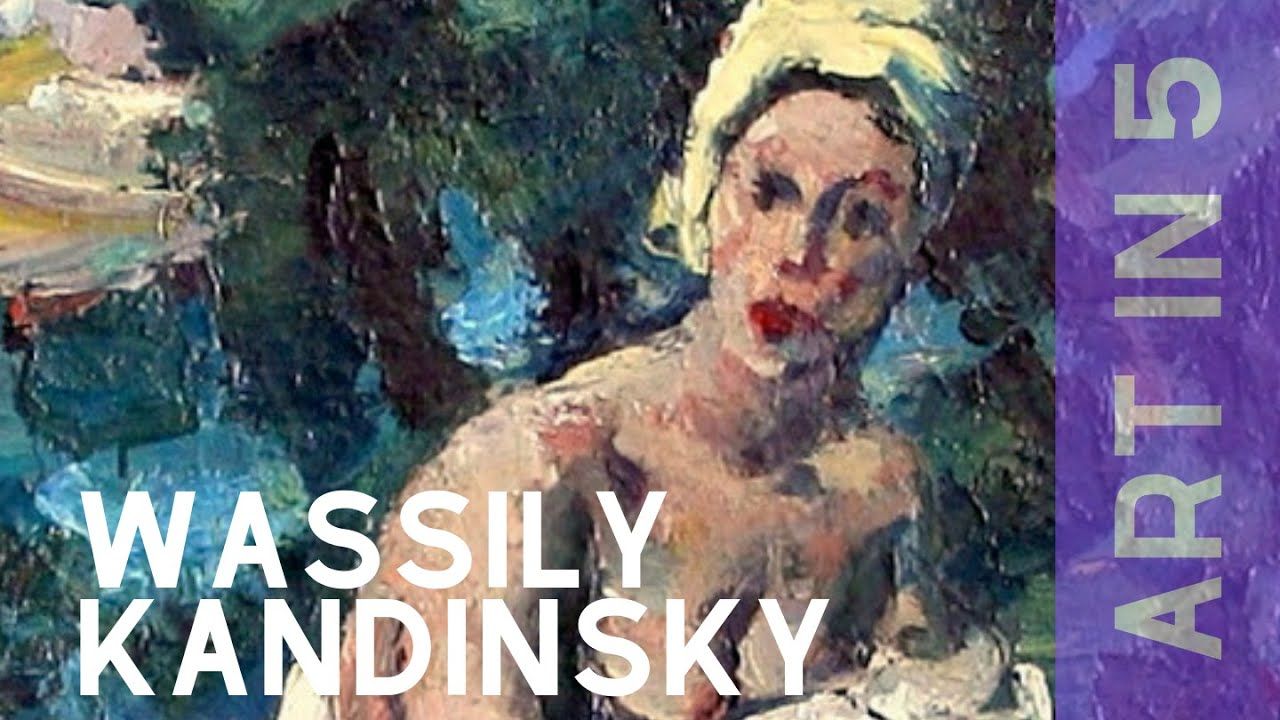
Missing Masterpieces - Marmottan Monet Theft
On October 27, 1985, in broad daylight, a group of five masked gunmen, armed with pistols and openly threatening both security personnel and visitors, brazenly infiltrated the Musée Marmottan Monet premises. This audacious act resulted in the theft of nine precious paintings from the museum's esteemed collection. Among these invaluable artworks was "Impression, Sunrise" (Impression, soleil levant) by Claude Monet, a masterpiece that lent its name to the entire Impressionism movement. Alongside this iconic work, the thieves also targeted several other priceless pieces: "Camille Monet and Cousin on the Beach at Trouville," "Portrait of Jean Monet," "Portrait of Poly," "Fisherman of Belle-Isle," and "Field of Tulips in Holland," all by Monet. Additionally, the stolen haul included "Bather Sitting on a Rock" and "Portrait of Monet" by Pierre-Auguste Renoir, "Young Woman at the Ball" by Berthe Morisot, and "Portrait of Monet" by Seiichi Naruse. The collective value of these stolen paintings was estimated at a staggering $12 million. Subsequently, a tip-off led to a significant breakthrough in the case, resulting in the arrest of Shuinichi Fujikuma, a yakuza gangster, in Japan. Fujikuma had previously served time in a French prison due to his involvement in heroin trafficking and had been handed a five-year sentence. During his incarceration, Fujikuma had come into contact with Philippe Jamin and Youssef Khimoun, both of whom were connected to an underground art syndicate. It was this trio—Fujikuma, Jamin, and Khimoun—that masterminded the elaborate plan to execute the Marmottan Museum heist. Following Fujikuma's arrest, a pivotal discovery was made at his residence. Among the seized items was a meticulously annotated catalog featuring all the stolen paintings from the museum. This crucial find not only reinforced the connection between Fujikuma and the art theft but also helped pinpoint the location of the missing masterpieces. Further investigation led to the unearthing of two additional stolen artworks, both created by Jean-Baptiste-Camille Corot. These paintings, pilfered in 1984 from a museum in France, played a pivotal role in unraveling the broader network of art theft...
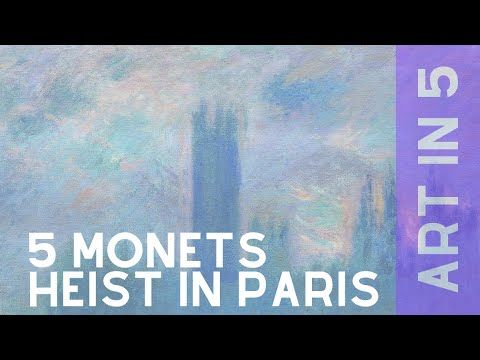
Isabella Stewart Gardner Museum Theft
In the realm of art crime, the Isabella Stewart Gardner Museum theft stands as one of the most audacious and perplexing cases in history. This daring heist took place on March 18, 1990, in the heart of Boston, and it continues to baffle investigators and captivate the imagination of art enthusiasts worldwide. The stolen works, valued at around $500 million, remain missing to this day, leaving behind a void in the cultural landscape that echoes the masterpieces' former glory. The Isabella Stewart Gardner Museum, an exquisite Venetian-style palace meticulously curated by its namesake founder, housed a treasure trove of priceless artworks. In the early hours of that fateful morning, two men disguised as police officers gained entry to the museum, claiming they were responding to a disturbance call. Once inside, they overpowered the security guards, handcuffed them, and systematically set about their audacious plan to steal a selection of irreplaceable masterpieces. The stolen artworks included paintings by some of history's most revered artists, among them Johannes Vermeer, Rembrandt van Rijn, Édouard Manet, and Edgar Degas. These priceless pieces were unceremoniously cut from their frames, leaving behind the haunting voids that serve as reminders of their absence. Among the stolen works were Vermeer's "The Concert," considered one of the most valuable paintings in the world, and Rembrandt's "Christ in the Storm on the Sea of Galilee." The audacity and precision of the heist suggest that the perpetrators possessed inside knowledge of the museum's security systems and layout. The stolen artworks were meticulously chosen, indicating an in-depth understanding of art history and the market. However, despite the apparent sophistication of the operation, the thieves left a trail of evidence and clues that, to this day, have not led to the recovery of the stolen masterpieces. The Isabella Stewart Gardner Museum theft remains an open wound in the art world. Despite substantial efforts by law enforcement agencies, the FBI, and the museum itself, the stolen works have eluded recovery. The museum has offered a reward of $10 million for information leading to the safe return of the artworks, a testament to the pieces' immense cultural value. However, potential leads and sightings have yielded no substantial breakthroughs. The impact of this theft extends beyond the museum's walls. The void l...
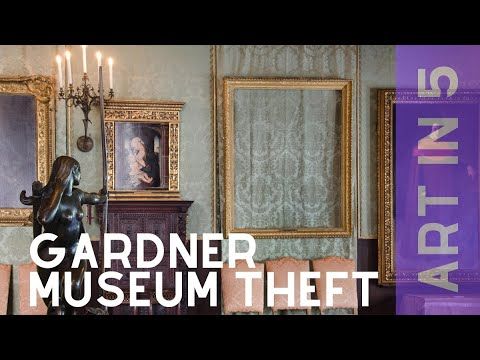
The Montreal art heist
In the annals of art crime, the 1972 Montreal Museum of Fine Arts robbery stands as a remarkable and audacious event that captured the attention of the world. This meticulously planned heist unfolded on a cold September night and left the museum and the art world in shock. The stolen artworks included masterpieces by renowned artists, and the daring nature of the crime has since etched it into the history books of art theft. On September 4, 1972, a group of professional thieves orchestrated a sophisticated robbery that targeted the Montreal Museum of Fine Arts in Canada. The thieves infiltrated the museum during the evening hours, taking advantage of the Labor Day holiday and the reduced security presence. Under the cover of darkness, they entered the museum, expertly disabling alarm systems and overcoming the limited security measures in place at the time. The stolen artworks included pieces by some of the most celebrated artists in history, including Vincent van Gogh, Rembrandt, and Vermeer. Among the stolen treasures were "Landscape with Cottages" by Rembrandt, "Poppy Flowers" by van Gogh, and "The Astronomer" by Vermeer. These works represented a significant portion of the museum's collection and held immeasurable cultural and financial value. The thieves exhibited a high level of knowledge about the museum's layout and the value of the artworks they were targeting. They moved with precision, swiftly removing the paintings from their frames and bypassing security measures that had been considered robust at the time. Their efficiency suggested that this was not a crime of opportunity, but a meticulously planned operation that had been executed with skill and coordination. After successfully making off with their ill-gotten gains, the thieves vanished into the night, leaving behind a stunned museum staff and a city in shock. The magnitude of the theft sent shockwaves through the art world, as these masterpieces were not only priceless in terms of their artistic value but were also an integral part of the cultural heritage of Canada. The aftermath of the robbery was marked by international intrigue, as law enforcement agencies and art institutions worldwide embarked on a quest to recover the stolen works. The artworks, which had seemingly vanished into thin air, sparked numerous theories and speculations about their whereabouts. It was a global mystery that captivated the imagination of art enthusiasts and investigators alike...
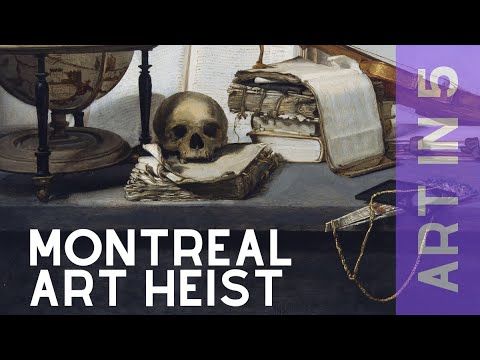
The Mona Lisa Robbery
On August 21, 1911, the painting by the 31-year-old Italian craftsman Vincenzo Peruggia was stolen, who was working at the Louvre at that time. He had hidden himself overnight in a closet within the museum, detached the painting from its frame, and on the following day, presumably wrapped in his smock, smuggled it out of the museum. Although a left thumbprint was secured on the protective glass case of the painting, it was simply forgotten to match this clue with the anthropometric card of the perpetrator and occasional criminal available with the police. Initially, the poet Guillaume Apollinaire and the painter Pablo Picasso came under suspicion of having stolen the Mona Lisa. On August 30, 1911, Géry Pieret, who had at times lived with Apollinaire, had confessed to a Parisian newspaper as a thief of sculptures stolen from the museum's storage and sold to "a painter." He returned one of the sculptures to the newspaper. A few days later, Picasso brought two more of these sculptures, which he had purchased from Pieret through Apollinaire, to the newspaper after being promised anonymity. When the newspaper reported on September 6, 1911, the police, who had meanwhile determined Pieret's connection to Apollinaire, arrested the poet. During questioning, he also implicated Picasso to exonerate himself. Picasso was subsequently questioned on September 9, 1911, although not arrested. Although Pieret had no knowledge of the theft of the Mona Lisa, he also announced that another thief would soon return the Mona Lisa. However, the court could ultimately not prove Apollinaire's or Picasso's complicity in the theft of the sculptures, let alone the Mona Lisa, and the artists were acquitted. Further investigations by the police led nowhere, and the theft remained unsolved for more than two years. For the Louvre, it meant a huge scandal. The government dismissed the museum director, and for three weeks, the story dominated the headlines. Many citizens visited the Louvre to see the empty space on the wall, while street vendors outside the Louvre sold postcards and reproductions of the Mona Lisa. To fill the empty space, Raphael's painting "Baldassare Castiglione," a work strongly influenced by the Mona Lisa, was hung in its place. In March 1912, the Louvre acquired Camille Corot's "Woman with a Pearl," the most famous modern homage to Leonardo's Mona Lisa. In 1913, the Mona Lisa was no longer listed in the Louvre's catalog. Peruggia had hidden the Mona Lisa a few meters away from the Louvre in his apartment, in a hole in the wall. Ultimately, however, he wanted to bring it "home" to Italy. Therefore, on December 12, 1913, he tried to sell the painting to the art dealer Alfredo Geri in Florence. Geri received a letter signed "Leonardo," in w...

Tetsuya Nomura
Tetsuya Nomura, a prominent Japanese video game designer, is renowned for his distinctive artistic style, imaginative storytelling, and contributions to some of the most iconic video game franchises. Born on October 8, 1970, Nomura's work has left an enduring impact on the world of gaming and entertainment. Nomura gained prominence as a character designer and artist, best known for his work on the "Final Fantasy" series by Square Enix. His unique character designs often feature intricate details, elaborate costumes, and a blend of fantasy and futuristic elements. His contributions to the series have helped shape its visual identity and its ability to create memorable and relatable characters. One of Nomura's most significant roles is his work on the "Kingdom Hearts" series, which blends characters from Disney properties with those from the "Final Fantasy" universe. As both a character designer and director, Nomura's influence is felt deeply in the franchise's artistic direction and narrative complexity. The series' success is a testament to his ability to merge distinct worlds and create a cohesive and emotionally resonant experience. Nomura's artistic style is characterized by its attention to detail, intricate designs, and an affinity for combining fantasy and reality. His characters often exhibit a range of emotions, and his designs capture their personalities and journeys. Nomura's involvement extends beyond character design, as he has directed and contributed to various aspects of game development, including storytelling and world-building. His willingness to experiment with storytelling is evident in his directorial role for "Final Fantasy VII: Advent Children," an animated film that continues the story of the iconic video game. Nomura's ability to translate the essence of the game's world and characters to a new medium demonstrated his creative flexibility and commitment to expanding the narratives he helped create...

Range Murata
Range Murata, a celebrated Japanese artist and designer, has made a significant impact on the world of illustration, character design, and science fiction art. Born on October 2, 1968, Murata's unique artistic style, intricate attention to detail, and ability to capture futuristic and fantastical worlds have earned him a dedicated following and a respected place in the art community. Murata's artistic journey began in the realm of commercial art, where he honed his skills as an illustrator and designer. He gained prominence through his involvement in various projects, including video games, manga, and anime. His early career included work on "Blue Submarine No. 6," where his character designs and concept art contributed to the distinctive visual identity of the series. One of Murata's most defining qualities is his intricate and mechanical approach to design. His illustrations often feature elaborate machinery, intricate patterns, and futuristic technology. This attention to detail creates a sense of realism and tangibility within his imagined worlds, even as he explores fantastical or science fiction themes. Murata's work is characterized by a unique blend of beauty and melancholy. His characters often possess a certain vulnerability, even in the midst of advanced technology or otherworldly environments. This combination of emotion and technology adds depth to his creations and invites viewers to engage on both an aesthetic and emotional level. His involvement in the art book series "Robot" further showcases his talent and vision. In these books, Murata and other artists explore the concept of robots from various perspectives, resulting in a collection of stunning and thought-provoking images that delve into the intersections of technology, humanity, and identity. Beyond his commercial work, Murata's personal art reflects his interests in fashion, design, and the exploration of new visual possibilities. His art often blurs the lines between reality and the imaginary, inviting viewers to step into worlds that are both alluring and slightly unsettling...

Hayao Miyazaki
Hayao Miyazaki, a legendary Japanese filmmaker, animator, and co-founder of Studio Ghibli, has left an indelible mark on the world of animation and cinema. Born on January 5, 1941, Miyazaki's imaginative storytelling, intricate worlds, and commitment to artistic excellence have made him a beloved and influential figure in global entertainment. Miyazaki's artistic journey began in the world of manga and animation, where he honed his skills and developed a unique visual style. His directorial debut came in 1979 with "Lupin III: The Castle of Cagliostro," which showcased his ability to infuse action and adventure with depth and emotion. However, it was with Studio Ghibli that Miyazaki's vision truly flourished. One of Miyazaki's most celebrated works is "My Neighbor Totoro" (1988), a heartwarming tale that captures the innocence and wonder of childhood. This film, like many of his works, features themes of environmentalism, the connection between humans and nature, and the importance of imagination. Miyazaki's fascination with flight and aeronautics is evident in several of his films, particularly in "Nausicaä of the Valley of the Wind" (1984) and "Porco Rosso" (1992). The former explores the delicate balance between humanity and nature, while the latter combines adventure with themes of identity and the consequences of war. His masterpiece "Spirited Away" (2001) garnered international acclaim and introduced audiences worldwide to his unique brand of storytelling. The film's richly layered narrative, stunning visuals, and themes of coming of age and self-discovery established Miyazaki as a master storyteller who could captivate audiences of all ages. Miyazaki's films often feature strong, resourceful female protagonists who defy traditional gender roles and showcase resilience and courage. This commitment to diverse and empowering characters has contributed to his films' universal appeal. Retirement has been a recurring theme in Miyazaki's career, but he continues to return to filmmaking to create new works. His dedication to his craft is evident in his meticulous attention to detail, hand-drawn animation, and the thematic depth that permeates each of his films...

Yoko Ono
Yoko Ono, a groundbreaking Japanese-American artist, musician, and activist, has made an indelible mark on the world of contemporary art and culture. Born on February 18, 1933, in Tokyo, Japan, Ono's multifaceted work spans across various mediums and is characterized by its avant-garde spirit, conceptual depth, and profound engagement with social and political issues. Ono's artistic journey began with her studies in philosophy and poetry, which laid the foundation for her innovative and boundary-pushing creations. Early in her career, she became a central figure in the Fluxus movement, a radical and experimental art movement that emphasized the importance of artistic process and challenged traditional notions of art and audience. One of Ono's most iconic works is her exploration of conceptual and participatory art. "Cut Piece" (1964), a performance piece, invited the audience to cut away pieces of her clothing until she was left completely exposed. This powerful work delved into themes of vulnerability, power dynamics, and the relationship between the artist and the audience. Through this piece, Ono challenged notions of objectification and invited viewers to reflect on their roles as active participants in the artistic process. Ono's collaboration with John Lennon, her partner and husband, further expanded her artistic reach. Together, they used their fame as a platform to advocate for peace and social change. Their "Bed-Ins for Peace" protests in 1969, during which they occupied hotel rooms to promote peace during the Vietnam War, exemplified their commitment to using art and public attention to address pressing global issues. As a musician, Ono's avant-garde approach and unique vocal style have left a lasting impact. Her album "Plastic Ono Band" (1970) and subsequent works challenged conventional music structures and experimented with sound, often incorporating elements of spoken word and conceptual ideas. Ono's musical exploration mirrored her broader artistic philosophy, blurring the lines between art forms and pushing boundaries. Throughout her career, Ono's commitment to activism and social justice has remained steadfast. Her "Imagine Peace" campaign, which began in 2007, continues to advocate for global peace and unity. The installation "Imagine Peace Tower" in Reykjavik, Iceland, is a testament to her enduring dedication to these ideals...
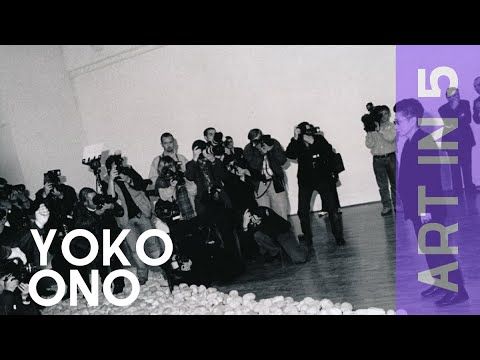
Mithu Sen
Mithu Sen, a prominent contemporary Indian artist, has made a profound impact on the art world with her thought-provoking and multidisciplinary creations. Born in West Bengal, India, her work delves into themes of identity, gender, intimacy, and human relationships. Through her diverse range of mediums, including painting, sculpture, installation, and performance, Sen's art invites viewers to engage with complex narratives and challenge societal norms. Sen's artistic journey began with her studies at the Government College of Art and Craft in Kolkata. Early in her career, she gained recognition for her boundary-pushing artworks that addressed themes of sexuality, desire, and the female experience. Her use of vivid colors, intricate details, and unflinching subject matter set her apart as an artist willing to confront taboos and engage in conversations that were often considered uncomfortable. One of Sen's iconic series is "Cock" (2004), which consists of a collection of mixed-media sculptures depicting roosters. These sculptures, adorned with intricate patterns and vibrant colors, serve as metaphors for male desire and assertiveness. Through this series, Sen challenges traditional notions of masculinity while celebrating the complexity and vulnerability of human relationships. Another significant aspect of Sen's art is her exploration of intimacy and the body. Her series "Border Unseen" (2006) incorporates textiles, stitching, and embroidery, revealing a personal narrative that explores the boundaries between self and other. These works offer a glimpse into the artist's inner world while addressing universal themes of vulnerability and connection. Sen's use of diverse mediums extends to her performances, where she often engages with her audience to create immersive experiences. Her performances explore the dynamics of human relationships, often involving intimate interactions that blur the line between artist and viewer. Through her performances, Sen creates spaces for dialogue and self-reflection, challenging conventional notions of spectatorship. In addition to her artistic practice, Sen is a prolific writer an..

Michael Heizers
Michael Heizer, an influential American artist, is renowned for his groundbreaking contributions to the fields of sculpture, land art, and conceptual art. Born on November 4, 1944, Heizer's monumental and often site-specific works have redefined the boundaries of artistic expression and our relationship with the natural world. Heizer's artistic journey is closely associated with the Land Art movement, which emerged in the 1960s and sought to integrate art with the landscape. His approach goes beyond traditional sculptural practices, as he uses the earth itself as a medium. His massive earthworks and sculptures are often created by sculpting and reshaping the landscape, creating a symbiotic relationship between art and environment. One of Heizer's most renowned works is "Double Negative" (1969-1970), a monumental land art piece located in the Nevada desert. Consisting of two massive trenches carved into the earth, the work explores the interplay between positive and negative space, nature and human intervention. "Double Negative" exemplifies Heizer's ability to transform the landscape into a canvas and engage viewers with the vastness and beauty of the natural world. Heizer's approach to sculpture and art-making is deeply conceptual. His works often prompt contemplation about space, time, scale, and the human impact on the environment. By creating interventions in nature, he challenges conventional ideas about permanence and impermanence in art and the fleeting nature of human existence. In addition to his land art, Heizer's "City" project is another monumental endeavor. Conceived in the 1970s, "City" is an ongoing work that involves the construction of a massive sculptural complex in the Nevada desert. The project combines architecture, sculpture, and environment, creating a surreal and immersive experience that questions the boundaries between reality and artifice. Heizer's work has also embraced the use of natural materials like rocks, stones, and earth to create sculptures that resonate with the primordial and the elemental. His sculptures often evoke a sense of timelessness and connection to the earth's geological history. Michael Heizer's legacy is deeply rooted in his ability to challenge preconceptions about art and space. His pioneering contributions to Land Art and his conceptual approach to sculpture have expanded the possibilities of artistic expression. His monumental and immersive creations invite viewe...

Hieronymus Bosch
Hieronymus Bosch, a Dutch painter of the late Middle Ages, is celebrated for his intricate and imaginative artworks that bridge the gap between the earthly and the fantastical. Born around 1450, Bosch's paintings are known for their surreal and often nightmarish depictions, offering viewers a glimpse into the hidden depths of human imagination and the complexities of the human condition. Bosch's art is closely associated with the Northern Renaissance, a period characterized by its exploration of spirituality, symbolism, and the merging of the natural and supernatural realms. His works often depict scenes that blend reality and fantasy, creating dreamlike landscapes populated by a diverse array of creatures, both grotesque and sublime. One of Bosch's most famous paintings, "The Garden of Earthly Delights," is a triptych that explores the journey from innocence to sin and the consequences that follow. The central panel is a mesmerizing depiction of an otherworldly garden filled with strange and alluring creatures engaged in various activities. The left panel portrays the creation of the world, while the right panel illustrates a terrifying hell populated by tormented souls. This painting encapsulates Bosch's ability to intertwine symbolism, allegory, and a rich visual vocabulary to convey complex moral and religious themes. Bosch's fascination with the supernatural and the unseen is further evident in works like "The Last Judgment," where intricate details fill every inch of the canvas, inviting viewers to explore the depths of both heaven and hell. His mastery of composition, combined with his vivid imagination, creates an overwhelming sense of visual complexity that pulls viewers into his world. Bosch's art is often open to interpretation, with his symbolism and allegory sparking a range of analyses. His depictions of hybrid creatures, bizarre landscapes, and intricate narratives have led to numerous interpretations that delve into religious, moral, and psychological dimensions. His ability to evoke both wonder and unease makes his art a testament to the power of visual storytelling...
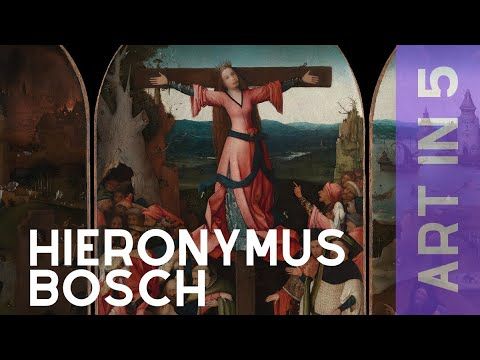
Neo Rauch
Neo Rauch, a prominent German painter, has made a significant impact on the art world with his unique blend of figurative and surreal elements in a style often referred to as "New Leipzig School." Born on April 18, 1960, Rauch's works are celebrated for their enigmatic narratives, dreamlike landscapes, and the sense of tension and ambiguity that they evoke. Rauch's artistic journey began during a period of political and social change in East Germany. His early exposure to Socialist Realism and the figurative art of the region had a lasting impact on his artistic development. After the fall of the Berlin Wall, he emerged as a leading figure in the "New Leipzig School," a group of artists who explored contemporary themes using traditional techniques. One of Rauch's distinctive qualities is his ability to blend seemingly disparate elements into cohesive compositions. His paintings often feature fragmented narratives, combining figures, objects, and settings that create a sense of visual and conceptual complexity. These juxtapositions invite viewers to interpret and engage with the layers of meaning within his art. Rauch's dreamlike landscapes and interiors are populated by enigmatic characters and scenarios that blur the lines between reality and imagination. His paintings often evoke a sense of nostalgia while also challenging conventional notions of time and space. This temporal ambiguity adds to the dreamy and mysterious quality of his works. While Rauch's art is characterized by its figurative nature, his approach to representation is far from straightforward. His figures often possess a dreamlike quality, with distorted proportions and sometimes unrealistic poses that contribute to the overall sense of dissonance and unease. This blending of the familiar and the uncanny creates a tension that is central to his visual language. Rauch's use of color and texture also contributes to the atmosphere of his paintings. His palette ranges from muted and earthy tones to vibrant bursts of color, enhancing the emotional impact of his works. His meticulous attention to detail and the intricate layering of paint add to the complexity and depth of his compositions. Neo Rauch's art invites viewers to explore the intersection of reality and imagination, nostalgia and innovation. His ability to create enigmatic narratives that challenge perceptions and embrace ambiguity has earned him international recognition and a place as a contemporary master of figurative painting. Through his evocative works, Rauch continues to captivate audiences and offer a unique perspective on the complexities of the human experience....
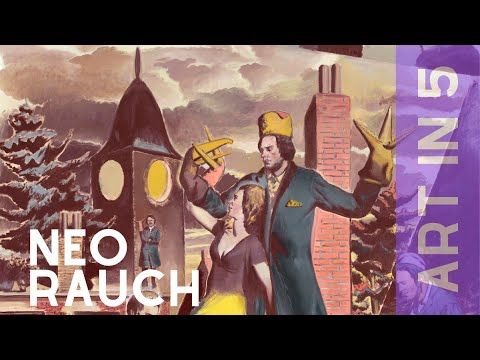
Exploring Kiki Smiths Art
Kiki Smith, born on January 18, 1954, stands as a multifaceted and influential figure in American artistry. Her extensive repertoire traverses the domains of the human body, spirituality, feminism, and the interrelation among all life forms, etching an enduring imprint on the contemporary art scene. Through her distinctive vision and commitment to navigating intricate themes, Smith's art reverberates profoundly with audiences, stirring both emotional and intellectual connections. Her artistic odyssey sprouted within a creatively enriched environment – her father, the acclaimed sculptor Tony Smith, fostered her imaginative prowess with early exposure to the art realm. Characterized by a diverse palette, Smith's oeuvre embraces a multidisciplinary spectrum, embracing sculpture, printmaking, drawing, installations, and beyond. At the core of Smith's artistry lies an exploration of the human physique. Often crafted in bronze or diverse materials, her sculptures delve into the physicality, vulnerability, and metamorphic essence of human form. Notable pieces like "Tidal" (1998), capturing a figure ensconced in a fetal posture, poignantly encapsulate the elegance and fragility of existence. Through her introspective portrayal of the body, Smith challenges societal conventions, provoking nuanced reflections on identity and gender norms. Spirituality and mythical allegory weave seamlessly into Smith's creations. Her fascination with folklore, fairy tales, and religious iconography manifests vividly in works like "Virgin Mary" (1992), a bronze sculpture reimagining conventional Christian imagery. These reinterpretations underscore her fervor for scrutinizing established narratives, beckoning viewers to engage with these themes from fresh, thought-provoking perspectives. Feminist art stands as another pillar of Smith's repertoire, boldly addressing women's bodies, roles, and autonomy. Her exploration of feminine experiences echoes in pieces like "Untitled (Black Girl)" (1992), a print that candidly confronts issues of race and gender with urgency and empathy....
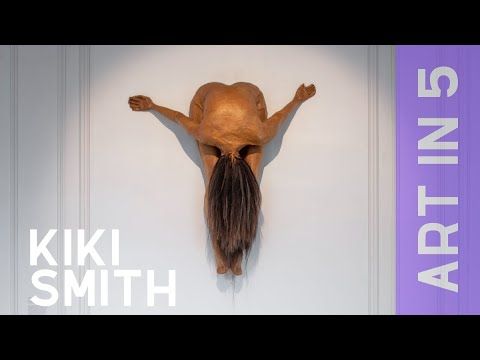
The Mystique of Henry Dargers Art
Henry Darger, an enigmatic American artist, is renowned for his intricate and imaginative body of work that exists at the intersection of art and outsider art. Born on April 12, 1892, Darger's life and creations have captivated the art world with their complexity, originality, and the mystery that surrounds his private existence. Darger's artistic journey remained hidden for most of his life. He lived a reclusive and isolated existence, working as a janitor and rarely sharing his art with the outside world. It wasn't until his landlord discovered his voluminous body of work after his death in 1973 that Darger's unique artistic universe was revealed. At the heart of Darger's art is his magnum opus, "The Story of the Vivian Girls, in What is Known as the Realms of the Unreal, of the Glandeco-Angelinnian War Storm, Caused by the Child Slave Rebellion." This massive manuscript consists of thousands of pages of text and illustrations, featuring a complex narrative involving young heroines, angelic creatures, and epic battles. Darger's artworks and writings often blur the lines between reality and fantasy, incorporating themes of innocence, struggle, and spirituality. Darger's visual style is characterized by his use of watercolor, pencil, and collage techniques. His illustrations are often filled with intricate details, lush landscapes, and a combination of innocence and darkness. His subjects range from idyllic scenes of young girls at play to more violent depictions of battles and warfare. This contrast creates a unique tension that adds to the complexity of his art. The question of whether Darger's creations were autobiographical, a form of therapy, or purely fantastical remains a subject of debate among art historians and scholars. His personal background, which included a challenging childhood and a stint in an institution, certainly contributed to the depth and complexity of his work. Yet, the enigma surrounding his intentions adds to the allure of his art. Darger's legacy as an outsider artist is significant. His art challenges traditional artistic norms and definitions, blurring the boundaries between artistic intention an...
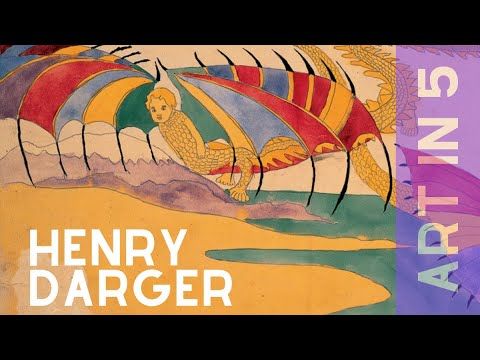
Grant Wood
Grant Wood, an influential American painter, is best known for his distinctive style and iconic portrayals of rural American life. Born on February 13, 1891, in Iowa, Wood's art is closely associated with the American Regionalist movement, which sought to capture the essence of the nation's heartland and its people during a time of social and economic change. Wood's artistic journey began with his studies in the United States and Europe, where he was exposed to various artistic influences. However, it was his return to his native Midwest that deeply shaped his style and subject matter. His most famous painting, "American Gothic" (1930), is a testament to this regional focus. The work depicts a stern-looking farmer and his daughter in front of a Gothic-style house, becoming an enduring symbol of American identity and the values associated with rural life. Wood's art often evoked a sense of nostalgia and idealization of rural America. His paintings, characterized by meticulous attention to detail, celebrated the simple beauty of everyday scenes. Works like "Daughters of Revolution" (1932) and "Parson Weems' Fable" (1939) showcase his ability to blend realism with a touch of irony and symbolism, reflecting his commentary on societal values and historical narratives. While Wood's art was rooted in regionalism, his subjects often carried broader implications. He frequently explored themes of identity, tradition, and cultural heritage. Through his portrayals of everyday people, he highlighted their individuality and the collective experience of rural America during a time of great social change. Wood's style, often referred to as "American Gothic Revival," combined elements of European Renaissance art with a distinctly American flavor. His meticulous craftsmanship, attention to detail, and incorporation of regional architectural elements set him apart as an artist who synthesized various influences to create a unique visual language. Beyond painting, Wood's influence extended to his role as a teacher and advocate for the arts. He played a significant role in fostering a sense of pride and appreciation for American art during a time when European influences were dominant. His contributions helped shape a distinctive American artistic identity. Grant Wood's legacy as an American Regionalist and a chronicler of rural life is enduring. His ability to capture the essence of a changing nation while celebrating its traditions and values ...
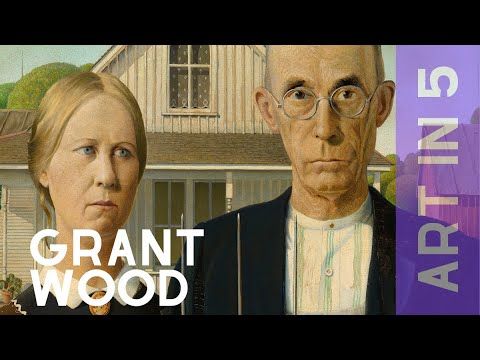
Gerhard Richter
Gerhard Richter, a German artist born on February 9, 1932, has become one of the most influential and versatile figures in contemporary art. His prolific body of work spans across various styles, genres, and mediums, showcasing his ability to navigate between abstraction, photorealism, and conceptual art while continually pushing the boundaries of artistic expression. Richter's artistic journey began in East Germany, where he initially trained in Socialist Realism before fleeing to West Germany. This exposure to different artistic ideologies greatly influenced his approach. One of his early breakthroughs was his series of photorealistic paintings based on photographs. These works, often depicting mundane or banal subjects, raised questions about representation, reality, and the role of images in modern society. However, Richter's versatility is perhaps best exemplified by his exploration of abstraction. His "Abstract Paintings" series challenged traditional notions of composition and representation. Through his use of squeegees and other unconventional tools, Richter created textured and layered canvases that oscillate between chaos and order, inviting viewers to engage with the emotional and aesthetic nuances of each piece. In contrast to his abstract works, Richter's "October 18, 1977" series is deeply conceptual. This series, based on photographs related to the Baader-Meinhof group, reflects on the nature of memory, history, and the representation of political violence. The blurred, monochromatic paintings call into question the reliability of images and the complexities of remembering and forgetting. Richter's artistic practice is marked by his continual exploration of dichotomies – between representation and abstraction, chance and intention, and the subjective and objective. His "Cage" paintings, for instance, are characterized by their ordered grids of colors, a nod to the influence of composer John Cage. These works reveal the tension between structure and randomness, as Richter allowed chance to dictate the distribution of colors. His commitment to experimentation extends beyond painting. Richter has also delved into sculpture, photography, and installation art. His "Atlas" project, a vast collection of photographs, sketches, and cutouts, serves as a visual diary of his artistic process and influences, offering insights into his creative evolution. Gerhard Richter's legacy as a multidimensional artist is secure. His ability to navigate diverse styles and mediums while maintaining a distinct voice is a testament to his exceptional talent and unceasing curiosity. His art challenges viewers to engage with complex concepts, confront contradictions, and explore the ever-shifting nature of perception and reality. As a visionary artist, Richter continues to inspire generations of creators to embrace experimentation, ambiguity, and the limitless possibilities of artistic expression...
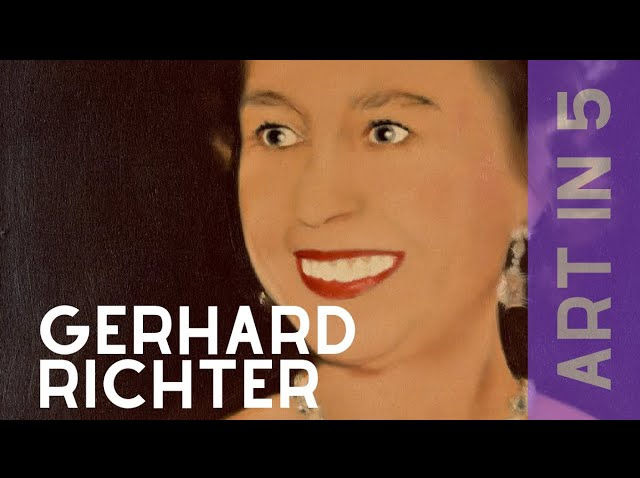
The Gotha Art Heist
On the night of December 14, 1979, a group of unidentified individuals executed a daring art heist at Friedenstein Castle, resulting in the theft of five valuable paintings. The stolen artworks included: "Portrait of an Unknown Gentleman with a Hat" by Frans Hals "Country Road with Farm Cart and Cows" attributed to Jan Brueghel the Elder "Self-Portrait with Sunflower" by Anthonis van Dyck (Copy; the original is privately owned by the Duke of Westminster) "Old Man" by Ferdinand Bol (Copy after Rembrandt) "Saint Catherine" by Hans Holbein the Elder The stolen paintings were displayed in various rooms of the museum located within Friedenstein Castle. They were taken along with their corresponding frames, leaving only black and white photographs as evidence of their existence. Prior to the theft, a color photograph had been taken of "Self-Portrait with Sunflower," but it was only rediscovered in the late 2000s during research by the television magazine "ttt – titel, thesen, temperamente." At the time, the value of the stolen paintings was estimated to be around five million East German Marks. The museum's installed alarm system was not yet operational at the time of the break-in. The theft was believed to have been carried out around 2 a.m., as indicated by temperature drop data recorded by a climate recorder. The circumstances of the theft, which suggested a deliberate selection of the stolen artworks, pointed to the possibility of an organized heist. The manufacturing process of a found climbing iron and the alloy of the steel used in it indicated, according to the investigations at that time, that the climbing irons were not produced in East Germany. Potential suspects at the time included the high-wire artists known as the Geschwister Weisheit, who were based in Gotha, as well as museum staff, the Sachsen-Coburg and Gotha royal family, and after the fall of the Berlin Wall, SED economic functionary Alexander Schalck. The statute of limitations for the claim of return expired in December 2009, prompting the city of Gotha and the museum to hope for new leads regarding the whereabouts of the stolen paintings. The current value of the artworks is estimated to be around 50 million euros. In December 2019, it was revealed th...
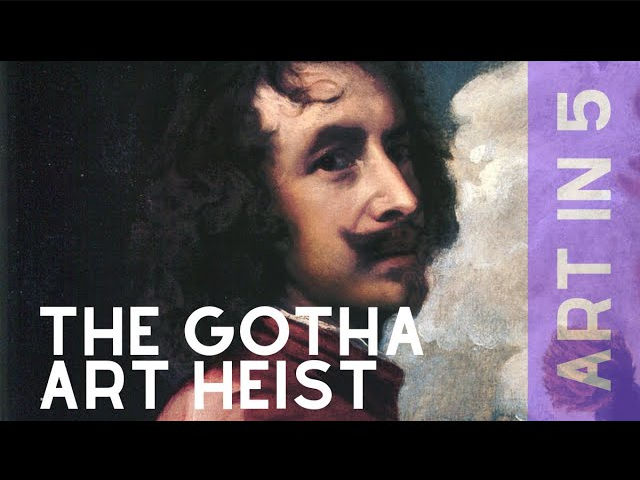
Nancy Spero
Nancy Spero, a visionary American artist, made significant contributions to the feminist art movement and is celebrated for her powerful and provocative works that address themes of gender, violence, and social justice. Born on August 24, 1926, Spero's art reflects her unwavering commitment to challenging social norms and amplifying marginalized voices through her distinctive artistic language. Spero's artistic journey began in the 1950s, when the art world was dominated by male voices. As a response to this male-centric environment, Spero became a trailblazer in the feminist art movement, co-founding the "AIR" (A.I.R. Gallery) – the first women's cooperative art gallery in the United States. This initiative provided a platform for women artists to showcase their work and challenge the existing power dynamics in the art world. One of Spero's most iconic and enduring works is her series of "War Paintings," created during the Vietnam War era. These works, often created on long scrolls of paper, address the horrors of war, violence, and their impact on women. Spero utilized a visual language that blended symbols, text, and figures to create narratives that are both poignant and disturbing. Through her art, she shed light on the often overlooked human toll of conflict and militarism. Spero's exploration of gender and female identity is evident in her use of ancient mythologies and historical narratives. Her "Artemis" series, for exa...
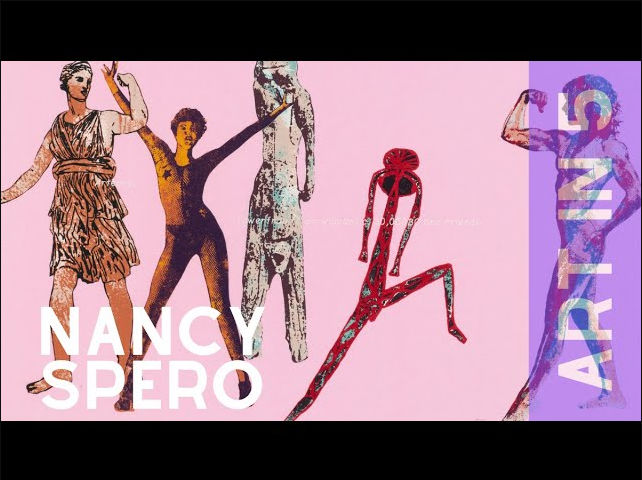
Edna Clarke Hall
Edna Clarke Hall, a talented British artist and poet, left an enduring legacy through her evocative printmaking and poignant poetry. Born on September 15, 1879, her unique ability to capture intimate moments, emotions, and the human experience resonates through her works, enriching the worlds of visual arts and literature. Clarke Hall's artistic journey began with her education at the Slade School of Fine Art in London, where she developed her skills in drawing and painting. However, it was in the realm of printmaking that she truly found her voice. Her mastery of techniques such as etching and woodcut allowed her to create intricate and emotionally resonant artworks that explored themes of human connection, love, and vulnerability. One of Clarke Hall's notable accomplishments was her involvement with the Grosvenor School of Modern Art, where she worked alongside fellow artists like Claude Flight. Her participation in the linocut revival movement demonstrated her adaptability and willingness to experiment with different forms of printmaking. The linocuts she created during this period showcased her ability to capture dynamic compositions and fleeting emotions in a bold and vibrant manner. Clarke Hall's art often focused on the lives of women, portraying their daily activities, relationships, and inner thoughts. Her keen observation and empathy enabled her to depict moments of tenderness and shared experiences. Works like "Interior" (1930) exude a sense of intimacy, inviting viewers to contemplate the emotions and connections within the depicted scene. Beyond her printmaking, Clarke Hall was also a gifted poet. Her literary works carried the same sensitivity and depth as her visual art. Her poems often centered on themes of nature, love, and introspection. Her ability to evoke emotions through both visual and written mediums showcased her multidimensional talents and her capacity to communicate the complexity of the human condition. Throughout her career, Edna Clarke Hall's art and poetry remained intertwined, each enriching the other. Her unique perspective on the world, characterized by an attention to detail and a celebration of everyday moments, resonated with audiences then and continues to do so today. Her legacy endures as a testament to her ability to capture the beauty and depth of life through the interplay of visual and written expression. Edna Clarke Hall's contributions to printmaking and poetry have secured her a place among the notable artists of her time. Her legacy serves as an inspiration for contemporary artists seeking to bridge the gap between different forms of creative expression, ultimately inviting viewers and readers to connect with the emotional nuances of the human experience.
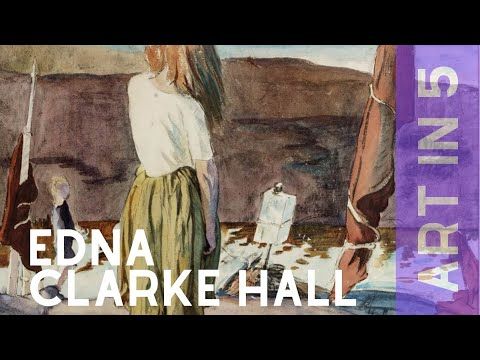
Giacomo Balla
Giacomo Balla, an Italian painter and key figure in the Futurist movement, is celebrated for his vibrant and dynamic artworks that capture the essence of modernity and movement. Born on July 18, 1871, in Turin, Italy, Balla's innovative approach to art played a pivotal role in shaping the aesthetic and philosophical ideals of the early 20th century. Balla's journey into the art world was marked by experimentation and a passion for capturing motion. His interest in depicting movement was influenced by the advent of photography and chronophotography, which sought to freeze moments in time. This fascination with movement led him to embrace the principles of Futurism, an artistic movement that celebrated speed, technology, and the dynamism of modern life. One of Balla's most iconic works, "Dynamism of a Dog on a Leash" (1912), exemplifies his fascination with motion and energy. In this painting, the leash of a dog is portrayed as a series of intersecting lines, conveying a sense of rapid movement and the bustling energy of the urban environment. The fractured forms and dynamic composition reflect the Futurist belief in capturing the inherent dynamism of the modern world. Balla's exploration of movement extended beyond traditional painting. He was also interested in applying his artistic ideas to other mediums, including fashion and design. He collaborated with other Futurist artists on creating innovative clothing and objects that embraced the principles of dynamism and modernity. The intersection of art and science was another aspect of Balla's work. He was intrigued by the concept of color theory and the psychological effects of color combinations. This interest manifested in his series of abstract works known as "Abstract Speed + Sound" (1913-1914), where he explored the visual representation of sound and movement through abstract forms and vibrant colors. Balla's contributions to the Futurist movement extended beyond his own art. He was an active participant in the intellectual discussions of the time, advocating for the transformative power of art in shaping society. His manifesto "Futurist Reconstruction of the Universe" (1915) outlined the movement's philosophy and ideals. Giacomo Balla's legacy is defined by his ability to capture the spirit of his era and translate it onto canvas. His innovative use of form, color, and composition in capturing motion and modernity has left an indelible mark on art history. His dynamic artworks serve as visual reflections of the rapid changes occurring during the early 20th century and continue to...
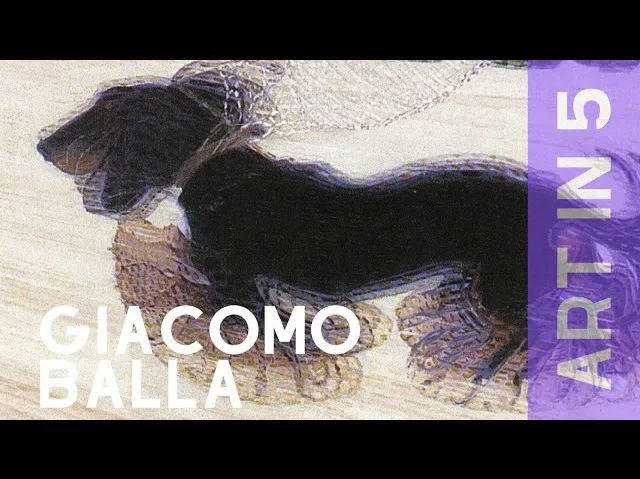
Mary Beale
Mary Beale, a pioneering English artist, emerged as a leading portrait painter during the Restoration era, leaving a lasting legacy in the annals of art history. Born in late March 1633, Beale defied the gender norms of her time to become one of the most accomplished and respected portraitists of the 17th century. Beale's artistic journey began as an apprentice to her father, who was a successful painter. This early exposure to art laid the foundation for her future career. Her skillful brushwork and keen attention to detail quickly gained attention, and she soon became known for her ability to capture the likeness and character of her subjects. At a time when women were rarely admitted to artistic academies, Beale's determination and talent allowed her to carve a niche for herself. She gained a reputation for her portraits that were marked by their naturalism, grace, and sensitivity. Her work was characterized by a focus on her subjects' individuality rather than adhering to the formal conventions of the time. One of Beale's most notable achievements was her appointment as the portraitist to the court of King Charles II and his queen, Catherine of Braganza. Her portraits of the royal family and members of the court were celebrated for their realism and the psychological depth they conveyed. Her portraiture often revealed her subjects in informal, relaxed poses, which was a departure from the stiff formality that characterized many portraits of the time. Beale's talent extended beyond her artistry. She maintained a studio where she not only produced her own paintings but also instructed other aspiring artists, including her husband, Charles Beale. Her influence extended to her written works as well, as she penned a manuscript titled "Discourse on Friendship" that provided insights into her artistic philosophy and thoughts on portraiture. Despite her success, Beale's legacy was somewhat overshadowed by the male-dominated art world of her time. It was only in later centuries that her contributions began to be fully recognized and appreciated. Today, she is celebrated as a trailblazer for women in the arts, paving the way for future generations of female artists. Mary Beale's impact as a portrait painter and a woman who defied societal norms is undeniable. Her ability to capture the essence of her subjects, her dedication to her craft, and her resilience in a male-dominated field have cemented her place in art history. Her legacy serves as a testament to the power of artistic talent and determination in overcoming barriers and making an enduring mark on the world of art.
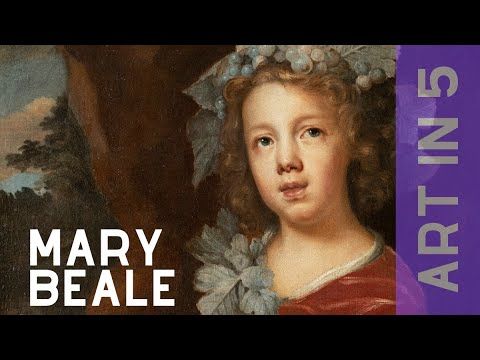
Willem de Kooning
Willem de Kooning (1904–1997) stands as a towering figure in the realm of 20th-century art, celebrated for his pivotal role in shaping the Abstract Expressionist movement. Born on April 24, 1904, in Rotterdam, Netherlands, de Kooning's journey from humble beginnings to becoming a pioneering artist showcases his immense talent, artistic evolution, and profound influence on the art world. De Kooning's early life was marked by a passion for art. His move to the United States in 1926 marked the beginning of a new chapter that would shape the trajectory of modern art history. A key player in the emergence of Abstract Expressionism, de Kooning's work defied conventions, melding figuration and abstraction, and imbuing his pieces with raw emotional intensity. At the heart of de Kooning's artistic exploration was his unique approach to abstraction. His "Woman" series, produced in the 1950s, is a testament to his mastery of form and his ability to convey complex emotions through paint. In "Woman I" (1950-1952), de Kooning presents a distorted and fragmented female figure that exudes both vulnerability and power. His bold brushstrokes and dynamic compositions rendered the figures in a state of constant transformation, embodying the human experience in its multifaceted nature. De Kooning's innovative approach extended beyond his "Woman" series. His embrace of color, texture, and gesture in paintings like "Excavation" (1950) captured the essence of Abstract Expressionism. Layers of paint, often scraped and reworked, formed intricate tapestries of visual language. This technique allowed de Kooning to communicate his emotions and thoughts on canvas, creating a dialogue between the artist and the viewer. One of de Kooning's defining traits was his willingness to challenge artistic norms. His foray into sculpture, most notably with works like "Clamdigger" (1972), demonstrated his versatility and ability to translate his unique vision into three-dimensional form. This multidisciplinary approach showcased his relentless curiosity and his ability to push the boundaries of his own artistic language. The impact of de Kooning's work was profound, shaping not only the trajectory of Abstract Expressionism but also influencing subsequent generations of artists. His exploration of the relationship between abstraction and representation laid the groundwork for the diverse artistic landscape of the latter half of the 20th century. His work also prompted broader discussions about the role of emotion, gesture, and the artist's hand in the creation of art. As his career progressed, de Kooning's style continued to evolve, reflecting his personal experiences and the changing artistic landscape. His later works, often characterized by a more controlled approach, demonstrated a mastery over his craft while retaining the emotional depth that defined his earlier pieces. Willem de Kooning's legacy endures as a testament to his innovative spirit, his mastery of materials, and his ability to encapsulate the complexities of the human experience. His contributions to Abstract Expressionism and his profound impact on modern art solidify his position as a visionary artist whose influence continues to resonate with artists and art enthusiasts around the world.
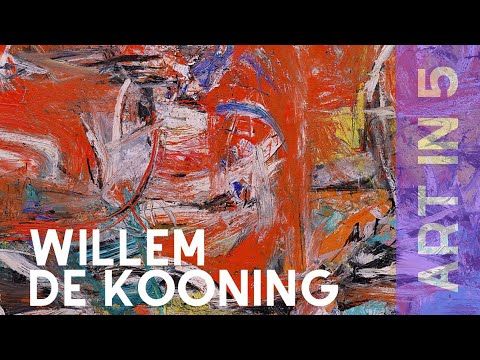
Pat Steir
Pat Steir, a visionary American painter born on April 6, 1938, has left an indelible mark on the world of contemporary art through her unique approach to abstraction and her exploration of the intersections between nature, spirituality, and the creative process. Steir's works are characterized by their poetic and flowing qualities, inviting viewers to engage with the emotions and sensations she evokes through her distinctive artistic language. Steir's early artistic endeavors were influenced by Abstract Expressionism and Color Field painting, which laid the foundation for her own distinctive style. Her breakthrough moment came in the 1980s when she embarked on her celebrated "Waterfall" series. These works, exemplified by pieces like "Knot" (1987), feature delicate drips and splatters of paint that cascade down the canvas, evoking the visual and sensory experience of a waterfall. Through these paintings, Steir captures the essence of movement and fluidity, while also tapping into the tranquility and energy of the natural world. At the heart of Steir's art is her exploration of the relationship between chance and intention. While her drips and pours of paint may seem spontaneous, they are, in fact, carefully orchestrated. Steir's method involves pouring thinned paint onto the canvas and allowing gravity to guide its flow. This collaboration with the forces of nature lends her works an element of unpredictability, blurring the line between artistic control and the organic processes of creation. Steir's engagement with Eastern philosophy and spirituality is another significant aspect of her art. Her works often evoke the aesthetics of traditional Chinese ink painting, with their emphasis on spontaneity, emptiness, and the balance of opposing forces. "The Morning After" (2000), for instance, captures the essence of yin and yang through its interplay of dark and light, chaos and serenity. A testament to Steir's versatility, her art transcends the confines of traditional painting. She has also experimented with printmaking, producing stunning monotypes that reflect her interest in process and experimentation. Her collaborations with master printers have yielded intricate works that mirror the same sense of spontaneity and emotional depth found in her paintings. Throughout her career, Steir's work has evolved while ...
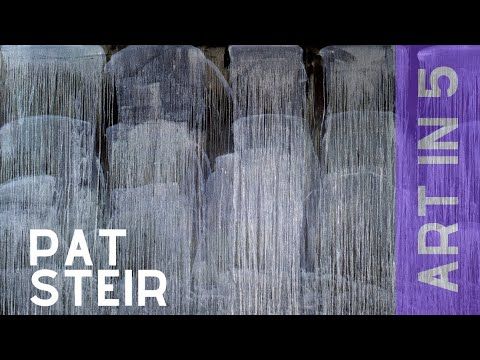
Roy Lichtenstein
Roy Lichtenstein, an influential American artist of the 20th century, is celebrated for his distinctive contributions to the pop art movement. Born in New York City on October 27, 1923, Lichtenstein's artistic journey encompassed various phases, from his early explorations of traditional art styles to his iconic adaptation of comic book aesthetics. His innovative approach to art, marked by bold imagery and a sharp critique of consumer culture, solidified his position as a pioneer of pop art. Lichtenstein's early life and education laid the groundwork for his artistic evolution. He studied at the Art Students League in New York and later pursued a Master of Fine Arts degree at Ohio State University. His early works reflected the influence of movements like Cubism and Expressionism, showcasing his technical skill and experimentation with different styles. However, it was his encounter with the burgeoning pop culture of the 1960s that would propel him into the limelight. The emergence of pop art in the 1960s provided Lichtenstein with a fresh avenue for his creative expression. He turned to the world of comic books, advertisements, and everyday objects as inspiration for his art. His unique interpretation of these familiar images involved meticulous hand-painting that simulated the mechanical printing techniques of comics, including the use of Ben-Day dots and primary colors. This replication of mass-produced imagery questioned notions of originality, highlighting the repetitive and superficial nature of popular culture. Among Lichtenstein's most iconic works is "Whaam!" (1963), a diptych painting that captures the intensity of aerial combat, sourced from a comic book panel. Through this monumental artwork, Lichtenstein transformed a transient moment into a timeless symbol of both heroism and tragedy. The meticulous detail of the plane and the fiery explosion, juxtaposed with the deliberate mechanical style, evokes a complex emotional response from the viewer. Lichtenstein's artistic exploration extended beyond comics to encompass a diverse array of subjects. He reimagined famous works of art by artists such as Picasso and Monet, effectively merging high art with popular culture. His series "Brushstrokes" (1965), which rendered painterly gestures in a stylized manner, demonstrated his ability to blur the line between representation and abstraction. These works showcased Lichtenstein's ability to engage with art history while maintaining his signature style. Beyond his visual art, Lichtenstein's work held a deep conceptual significance. By appropriating and recontextualizing mass-produced images, he addressed the commercialization of art and the shallowness of contemporary visual culture. His art questioned the boundaries between high and low art forms, prompting viewers to reconsider their preconceived notions of artistic value. Roy Lichtenstein's influence continues to reverberate in the art world and beyond. His legacy can be seen in the works of subsequent generations of artists who draw inspiration from popular culture, as well as in the incorporation of pop art aesthetics into advertising and design. Lichtenstein's art remains a testament to his keen observation of the world around him and his ability to transform the mundane into the extraordinary. Through his innovative approach to art, he bridged the gap between fine art and popular culture, leaving an indelible mark on the trajectory of contemporary art history...
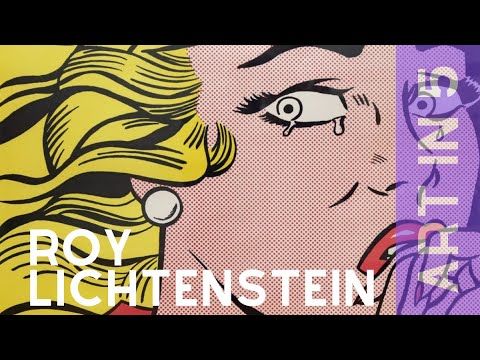
Gertrude Abercrombie
Gertrude Abercrombie, a remarkable American artist, left an indelible mark on the art world with her enigmatic and surreal paintings. Born on February 17, 1909, Abercrombie's unique blend of dreamlike imagery, personal symbolism, and emotional depth established her as a significant figure in mid-20th century art, despite often operating on the fringes of the mainstream art scene. Abercrombie's artistic journey began in Chicago, where she studied at the School of the Art Institute of Chicago. Her early works already displayed the elements that would become her signature style – mysterious narratives, rich symbolism, and a haunting atmosphere that drew viewers into her surreal world. Her paintings often featured self-portraits, which she used as vessels to explore her inner thoughts and emotions. One of Abercrombie's recurring motifs was the portrayal of herself as a lone figure in enigmatic, introspective scenes. These compositions, exemplified by works like "Self-Portrait" (1945), convey a sense of solitude and mystery while inviting viewers to delve into the artist's psyche. Abercrombie's introspection was paired with a fascination for the magical and the fantastical, often featuring moonlit landscapes, arcane objects, and dreamlike scenarios. Her use of symbolism further enriched her works. Cats, owls, and crescent moons frequently appeared, each carrying its own narrative weight and inviting interpretation. Abercrombie's paintings became visual poems, with her personal vocabulary resonating in each stroke of the brush. These symbols not only invited viewers to engage with her narratives but also created a sense of connection between her inner world and the external realm. Despite her prominence within avant-garde circles, Abercrombie never sought widespread fame. She remained a fixture of Chicago's bohemian scene, hosting intimate gatherings at her home that attracted artists, writers, and musicians. These soirées, often filled with jazz music and intellectual conversation, became an extension of her artistic expression, blurring the boundaries between her art and her life. Abercrombie's legacy as an influential artist endures. Her ability to transport viewers into a realm of introspection and enchantment, her personal symbolism, and her unique fusion of the surreal and the personal continue to captivate audiences. Her art serves as a testament to the power of visual expression in exploring the depths of the human experience and inviting viewers to embark on their own journeys of interpretation and discovery. Gertrude Abercrombie's impact on the art world is a testament to her ability to create a unique and timeless language that communicates across time and space. Her contributions to surrealism and her dedication to her personal vision have secured her a place among the vanguard of artists who pushed the boundaries of artistic expression and left a lasting imprint on the creative landscape...
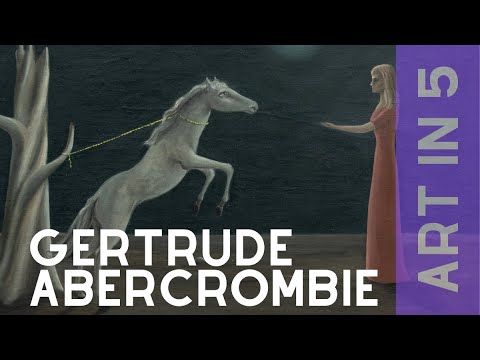
Niki de Saint Phalle
Niki de Saint Phalle, born Catherine Marie-Agnes Fal de Saint Phalle on October 29, 1930, in Neuilly-sur-Seine, France, was a French-American artist known for her vibrant and monumental sculptures, immersive installations, and provocative artworks. Saint Phalle's artistic journey was marked by her bold and fearless exploration of themes such as feminism, societal norms, and personal expression. Saint Phalle's early life was filled with challenges and struggles. As a young woman, she faced personal traumas and emotional turmoil, which later influenced her artistic style and subject matter. She began her artistic career as a painter, creating works characterized by bright colors, swirling patterns, and expressive brushstrokes. However, it was her transition to sculpture that brought her international recognition and acclaim. One of Saint Phalle's most iconic bodies of work is her Nana series. These sculptures depicted voluptuous and exaggerated female figures, celebrating the power and beauty of womanhood. The Nanas challenged traditional notions of femininity and embraced a more inclusive and empowering vision of women. They were often depicted in vibrant colors, adorned with bold patterns, and displayed in confident and joyful poses. Saint Phalle's sculptures often incorporated a variety of materials, including fiberglass, polyester, and metal. She experimented with different techniques and forms, creating dynamic and multi-dimensional artworks. Her sculptures were notable for their monumental size and immersive nature, inviting viewers to walk around and interact with the artwork. In addition to her sculptures, Saint Phalle also created ambitious and immersive installations. One of her most famous works is the Tarot Garden, located in Tuscany, Italy. This sprawling outdoor sculpture park features larger-than-life sculptures inspired by the mystical symbols of the tarot cards. The Tarot Garden is a testament to Saint Phalle's ability to create immersive and magical environments that transport viewers into a world of fantasy and imagination. Throughout her career, Saint Phalle remained committed to using art as a means of social and political commentary. She tackled issues such as gender inequality, violence against women, and societal constraints through her provocative and confrontational artworks. Her installations often incorporated themes of liberation, freedom, and breaking societal boundaries...
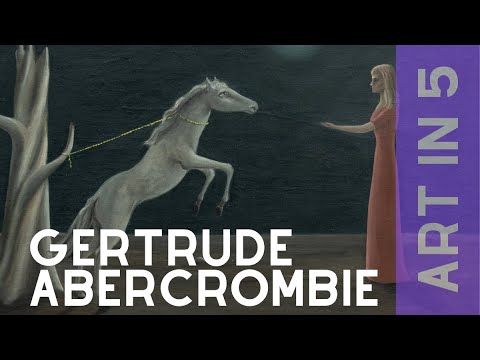
Auguste Rodin
Auguste Rodin, born François-Auguste-René Rodin on November 12, 1840, in Paris, France, was a highly influential sculptor who revolutionized the art world with his innovative approach and expressive style. Known for his ability to capture raw human emotion and explore the depths of the human experience, Rodin's works are celebrated for their realism, dramatic intensity, and exquisite craftsmanship. Rodin's artistic journey began with a passion for drawing, which eventually led him to pursue a career in sculpture. He initially trained at the Petite École, a school for decorative arts, before gaining admission to the prestigious École des Beaux-Arts in Paris. However, Rodin's unorthodox artistic style and refusal to conform to traditional norms caused him to face rejection and criticism from the academic establishment. Despite these setbacks, Rodin persisted in his artistic pursuits and embarked on a path of experimentation and innovation. He rejected the idealized forms of classical sculpture and instead sought to capture the complexity and imperfections of the human form. Rodin believed that true art should reflect the genuine nature of humanity, with all its flaws, struggles, and passions. Rodin's most famous work, "The Thinker," created between 1880 and 1902, has become an iconic symbol of contemplation and introspection. The sculpture depicts a muscular, nude male figure seated on a rock, deep in thought. It represents the universal human condition of reflection and the power of the human mind. "The Thinker" has been widely reproduced and is considered one of the most recognized sculptures in the world. Another notable masterpiece by Rodin is "The Kiss," completed in 1889. This sculpture portrays a passionate embrace between a man and a woman, capturing the intensity and sensuality of love. "The Kiss" explores themes of desire, longing, and the complexities of human relationships, showcasing Rodin's ability to convey emotion through his art. Rodin's sculptural technique was characterized by his use of texture and his ability to manipulate light and shadow to create depth and movement. He employed a method known as "modeling," in which he worked directly with clay or plaster, allowing his hands to shape and mold the material with great sensitivity and precision. This approach gave his sculptures a sense of spontaneity and vitality....
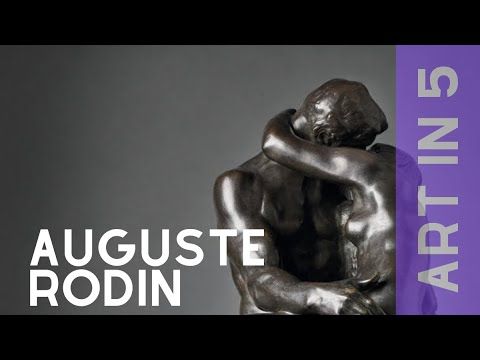
Kara Maria
Kara Maria, born in 1967, is a contemporary visual artist known for her vibrant and expressive paintings that address themes of social and political commentary, environmental concerns, and the human experience. Her work often combines elements of abstraction, figuration, and symbolism to create visually striking compositions that provoke thought and engage viewers. Maria's art is characterized by its bold use of color and energetic brushwork. Her paintings often feature a mix of organic and geometric forms, creating dynamic compositions that convey a sense of movement and vitality. She employs a variety of techniques, including layering, drips, and gestural marks, to add texture and depth to her work. One recurring theme in Maria's art is the exploration of the relationship between humans and nature. Her paintings often depict animals, plants, and landscapes, drawing attention to the interconnectedness and fragility of our environment. Through her vibrant and stylized representations, she invites viewers to reflect on their own connection to the natural world and the impact of human actions on the planet. Another significant aspect of Maria's work is her exploration of social and political issues. She uses her art as a platform for commentary on topics such as gender, identity, inequality, and cultural diversity. Her paintings often feature symbolic imagery and juxtapositions, inviting viewers to consider the complexities of these subjects and engage in critical reflection. Maria's art is deeply rooted in her personal experiences and observations of the world around her. Her work is influenced by her upbringing in a multicultural environment and her travels to different countries, which have exposed her to diverse perspectives and cultural narratives. Through her art, she seeks to challenge preconceived notions, spark dialogue, and promote empathy and understanding. Kara Maria's vibrant and thought-provoking paintings have been exhibited in numerous galleries and museums internationally, earning her recognition and acclaim within the contemporary art world. Her art continues to captivate audiences with its visual richness, compelling narratives, and passionate engagement with social and environmental issues...
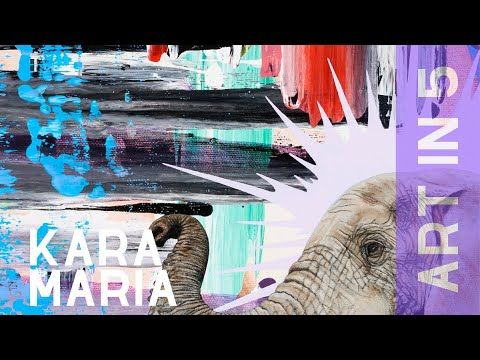
Joaquín Sorolla
Joaquín Sorolla, born on February 27, 1863, in Valencia, Spain, was a prominent Spanish painter known for his vibrant and luminous works, particularly his depictions of landscapes, seascapes, and portraits. Sorolla is celebrated for his ability to capture the essence of light and color, creating scenes that exude a sense of life and vitality. From a young age, Sorolla demonstrated a natural talent for art. He received his initial artistic training at the School of Fine Arts in Valencia before furthering his studies in Madrid and Rome. Influenced by the works of the Spanish masters and the Impressionist movement, Sorolla developed his unique style, characterized by loose brushwork, bold colors, and a keen observation of light and shadow. Sorolla's preferred subjects were scenes of everyday life, often depicting people engaged in outdoor activities. His beach scenes, in particular, are highly regarded and showcase his ability to capture the play of sunlight on water and the joyful atmosphere of leisurely moments. Sorolla's skillful use of light and color brings his paintings to life, infusing them with a sense of energy and movement. One of Sorolla's most significant accomplishments was his ability to portray the human figure with remarkable realism and sensitivity. His portraits are known for their exquisite attention to detail and their ability to convey the personalities and emotions of his subjects. Sorolla had a particular talent for capturing the subtleties of facial expressions and the play of light on skin, which added depth and authenticity to his portraits. Throughout his career, Sorolla achieved international acclaim and success. His works were exhibited in major cities across Europe and the United States, earning him numerous awards and honors. In 1909, he received a grand prize at the Exposition Universelle in Paris, solidifying his reputation as one of Spain's most accomplished painters. Sorolla's commitment to his craft extended beyond his artistic pursuits. He was a dedicated advocate for social causes and often used his art to shed light on important iss...
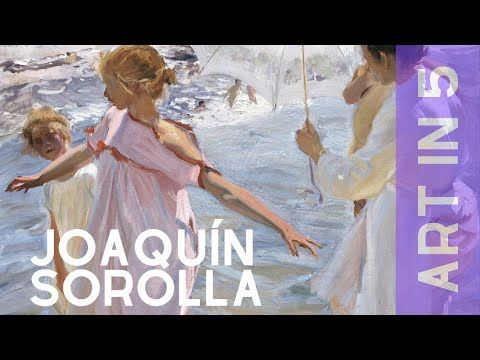
The Life and Art of Akira Toriyama
Akira Toriyama, born on April 5, 1955, in Nagoya, Japan, is a highly influential manga artist and character designer. He is best known as the creator of the iconic manga series "Dragon Ball" and its various adaptations, including the immensely popular anime series and films. Toriyama's journey in the world of manga began in the 1970s when he started working as a professional artist and illustrator. He gained recognition for his unique art style, which features expressive characters with distinctive facial features and a blend of comedic and action-oriented storytelling. In 1984, Toriyama introduced "Dragon Ball" to the world, a manga series that would go on to become a global phenomenon. The story follows the adventures of Son Goku, a young martial artist with incredible strength and an insatiable appetite for growth. With a mix of martial arts, fantasy, and science fiction elements, "Dragon Ball" captivated audiences with its thrilling battles, humorous moments, and engaging characters. Toriyama's art style is characterized by clean lines, dynamic action poses, and expressive facial expressions. His ability to convey intense energy and movement through his illustrations adds a sense of excitement to the story. Toriyama's talent for creating memorable characters is evident in the diverse cast of "Dragon Ball," each with their own unique personalities and designs that have become iconic in the world of manga and anime. Beyond his artistry, Toriyama's storytelling skills have played a significant role in the success of "Dragon Ball." He expertly weaves together elements of adventure, humor, and drama, creating a captivating narrative that keeps readers and viewers hooked. The series explores themes of friendship, determination, and the power of self-improvement, resonating with audiences of all ages...

Exploring Art and Life The Journey of Alice Aycock
Alice Aycock is an American sculptor and installation artist known for her large-scale public artworks that explore themes of architecture, science, and the natural world. Born in Harrisburg, Pennsylvania, in 1946, Aycock has become a prominent figure in contemporary art, renowned for her innovative and thought-provoking creations. Aycock's artistic journey began at Douglass College, where she studied under influential artists such as Robert Morris and Robert Watts. It was during this time that she became captivated by the possibilities of sculpture and installation art. She went on to earn her MFA from Hunter College in New York City, where she honed her skills and developed her unique artistic vision. Aycock's early works often incorporated architectural elements, exploring the relationship between space, structure, and the human experience. She drew inspiration from diverse sources, including science fiction, literature, and historical events. Her sculptures and installations were characterized by their intricate and dynamic forms, blending organic and mechanical elements to create a sense of movement and energy. Throughout her career, Aycock has created numerous public art installations that have become iconic landmarks in cities around the world. These monumental sculptures often integrate with their surroundings, engaging with the architectural and cultural context of the site. Aycock's works invite viewers to interact with the artwork and contemplate the relationship between the built environment and human existence. One of Aycock's notable public artworks is the "East River Roundabout" (1995), located in New York City. This large-scale installation consists of a series of steel columns and beams that evoke the sensation of a whirlwind or tornado. The artwork references the historical significance of the site as a former shipping hub while also symbolizing the energy and dynamism of the city. Another significant work by Aycock is "Star Sifter" (2007), located in Terminal 1 of the Seattle-Tacoma International Airport. This installation features a suspended sculpture made of stainless steel and aluminum that resembles a celestial constellation. The artwork creates a sense of wonder and exploration, inviting viewers to contemplate their place in the universe. Aycock's artistic practice extends beyond public installations. She has also created smaller-scale sculptures, drawings, and mixed-media works that explore similar themes of space, movement, and transformation. Her multidisciplinary approach allows her to experiment with different materials and techniques, constantly pushing the boundaries of her artistic practice. Alice Aycock's contributions to contemporary a...

female artist Judy Chicago
Judy Chicago, born Judy Cohen on July 20, 1939, in Chicago, Illinois, is an American artist, feminist, and educator whose work has made a significant impact on the art world and feminist discourse. Chicago is best known for her pioneering role in the feminist art movement of the 1970s, her iconic installation "The Dinner Party," and her ongoing commitment to promoting women's voices and experiences through art. Chicago's artistic journey began in the 1960s, during a time when women artists faced significant barriers and marginalization in the art world. Fueled by her passion for social justice and gender equality, Chicago emerged as a leading figure in the feminist art movement. She challenged the male-dominated art establishment and sought to reclaim women's experiences and narratives within the realm of art. One of Chicago's most renowned works is "The Dinner Party," a monumental installation that took over five years to complete and was unveiled in 1979. This groundbreaking artwork consists of a large triangular table with place settings for 39 historical and mythological women, including figures such as Virginia Woolf, Frida Kahlo, and Sojourner Truth. Each place setting features a unique, intricately designed ceramic plate and an embroidered runner that celebrates the achievements and contributions of the woman it represents. "The Dinner Party" is not only a visually stunning artwork but also a powerful statement about the erasure of women's history and the need for women's voices to be recognized and celebrated. It has been exhibited in numerous locations around the world and has become an iconic symbol of feminist art. Chicago's artistic practice extends beyond "The Dinner Party." She has explored a wide range of mediums, including painting, sculpture, ceramics, and performance art. Her works often incorporate vibrant colors, symbolic imagery, and text, creating visually striking and thought-prov...

Shaping Dreams The Artistic Journey of Jeff Koons
Jeff Koons is an American artist widely recognized for his provocative and controversial works that blur the boundaries between art and popular culture. Born in York, Pennsylvania, in 1955, Koons has become one of the most influential and commercially successful artists of his generation. Koons' artistic career began in the late 1970s when he moved to New York City and worked as a commodities broker on Wall Street. However, his passion for art led him to pursue a career as a full-time artist. Influenced by pop art and conceptual art movements, Koons started creating works that challenged traditional notions of aesthetics and consumerism. One of Koons' notable bodies of work is his "Banality" series, which he created in the late 1980s. These sculptures, made of porcelain and painted wood, depict everyday objects and figures, such as Michael Jackson, porcelain puppies, and pink panthers. The series explores themes of kitsch, mass culture, and the commodification of art, raising questions about taste, value, and the role of art in society. Another iconic series by Koons is the "Balloon Dog" series, which consists of large-scale stainless steel sculptures that resemble inflated balloon animals. These sculptures reflect Koons' fascination with childhood nostalgia, innocence, and the ephemeral nature of life. The shiny, reflective surfaces of the sculptures capture the viewer's attention and evoke a sense of wonder and playfulness. Koons is also known for his controversial collaboration with the fashion brand Louis Vuitton, where he created a line of handbags featuring famous artworks, including Leonardo da Vinci's "Mona Lisa" and Vincent van Gogh's "Wheatfield with Cypresses." This collaboration further solidified Koons' reputation as an artist who blurs the boundaries between art and commercialism, raising questions about the relationship between art, commerce, and the art market. Throughout his career, Koons has faced both praise and criticism for his work. His sculptures often require meticulous craftsmanship and the collaboration of skilled artisans to achieve their polished and flawless appearance. This approach challenges traditional notions of authorship in art and raises questions about the role of the artist in the production of artworks. Koons' artworks have been exhibited in major museums and galleries around the world, including the Museum of Modern...
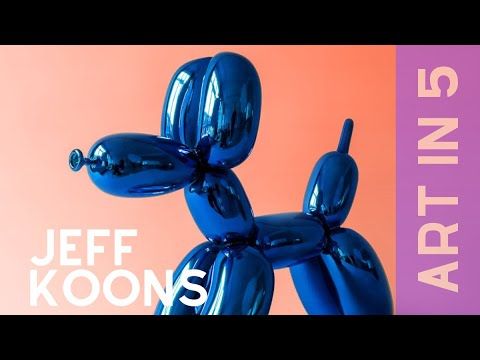
The Hidden World of Henry Moore
Henry Moore, born on July 30, 1898, in Castleford, Yorkshire, England, was a renowned British sculptor whose innovative and monumental works transformed the field of modern sculpture. Moore's artistic vision and distinctive style combined organic forms with abstract elements, creating sculptures that embraced the natural world while pushing the boundaries of traditional sculpture. Moore's early artistic development was influenced by his experiences in the Yorkshire countryside, where he developed a deep appreciation for natural forms and landscapes. He studied at the Leeds School of Art and later at the Royal College of Art in London, where he honed his skills and explored various sculptural techniques. One of Moore's most recognizable themes was the human figure. He was fascinated by the human form and its relationship with the surrounding space. Moore's sculptures often depicted reclining figures, abstracted and simplified to emphasize their essential qualities. His figures exuded a sense of harmony, grace, and monumentality, while also conveying a profound connection to the earth and the passage of time. Moore's sculptures were primarily created using traditional materials such as stone, wood, and bronze. He had a deep understanding of these materials, and his mastery allowed him to manipulate and shape them with great skill. His works showcased a balance between solidity and void, with many sculptures featuring hollowed-out spaces or pierced forms, creating a sense of lightness and openness within the overall composition. One of Moore's most celebrated sculptures is "Reclining Figure," a recurring theme in his oeuvre. This series of sculptures explored the relationship between the figure and its environment, often blurring the boundaries between the human form and the natural world. "Reclining Figure" sculptures were characterized by their smooth, curvilinear shapes, inviting viewers to interact with the sculpture from multiple angles and perspectives. Moore's artistic contributions extended beyond individual sculptures. He also created large-scale public works, often placed in outdoor settings. These monumental sculptures, such as "Draped Reclining Figure" and "Three Piece Sculpture: Vertebrae," became iconic landmarks, transforming public spaces and engaging viewers on a grand scale. Moore's sculptures challenged the traditional notion of sculpture as an object to be observed from a distance, inviting viewers to explore and experience the artwork physically...
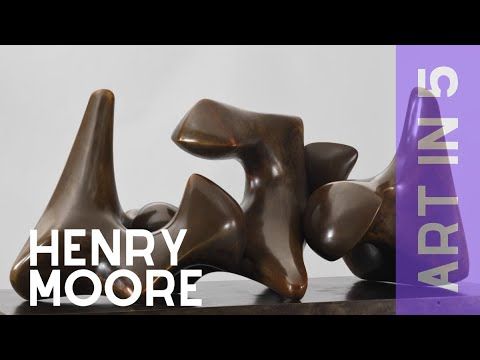
Art Unveiled The World of Eva Hesse
Eva Hesse, born on January 11, 1936, in Hamburg, Germany, was a pioneering artist whose innovative sculptures and installations made a lasting impact on the art world. Hesse's work, characterized by its organic forms, unconventional materials, and exploration of process and materiality, played a crucial role in the development of post-minimalism and feminist art. Hesse's artistic journey began in the 1960s, a time of significant artistic experimentation and cultural change. After fleeing Nazi Germany as a child and later immigrating to the United States, Hesse studied at the Yale School of Art, where she developed her unique artistic voice. She initially worked with painting, but it was her transition to sculpture that would define her career. Hesse's sculptures were groundbreaking in their use of unconventional materials such as latex, fiberglass, and various industrial materials. She pushed the boundaries of traditional sculpture, embracing imperfection, fragility, and ephemeral qualities in her work. Hesse's sculptures often featured repetitive and organic forms, evoking a sense of movement and vulnerability. Her exploration of materials and process, along with her willingness to embrace imperfections and chance, challenged the traditional notions of art and expanded the possibilities of sculpture. One of Hesse's most significant bodies of work is her series of latex and fiberglass sculptures created in the mid-1960s. These works, characterized by their translucent and tactile qualities, blur the boundaries between sculpture and painting, object and environment. Hesse's "Hang-Up" series, for example, consists of suspended, biomorphic forms that seem to float in space, inviting viewers to engage with the physicality and sensory experience of the work. Hesse's artistic practice was deeply influenced by her personal experiences, including her struggles with illness and the societal expectations placed on women artists at the time. Her work can be seen as an exploration of identity, materiality, and the human condition. By using unconventional materials and embracing vulnerability and imperfection, Hesse challenged the male-dominated art world and contributed to the feminist art movement. Tragically, Hesse's life and career were cut short when she passed away at the age of 34 in 1970. However, her impact on the art world continues to be felt to this day. Her innovative approach to sculpture, her willingness to push artistic boundaries, and her exploration of materials and process have influenced generations of artists. Hesse's work has been exhibited internationally and is held in prestigious collections around the world...
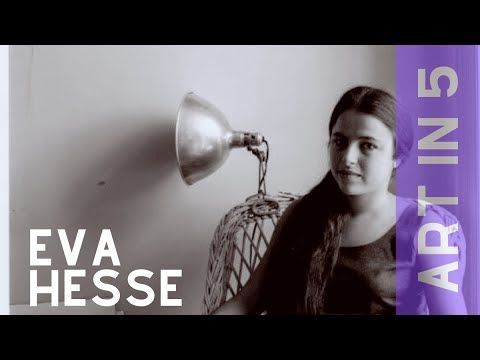
Uncovering Joan Mirós Hidden Artistic Secrets
Joan Miró, born on April 20, 1893, in Barcelona, Spain, was a renowned Catalan painter, sculptor, and ceramicist. He is celebrated as one of the greatest surrealist artists of the 20th century, known for his innovative and imaginative approach to art. Miró's artistic journey began in Barcelona, where he studied at the School of Industrial and Fine Arts. Initially influenced by Fauvism and Cubism, Miró soon developed his unique style, which blended abstraction, surrealism, and a childlike sense of wonder. His works often feature vibrant colors, organic shapes, and whimsical forms that evoke a sense of playfulness and fantasy. Throughout his career, Miró explored various mediums, including painting, sculpture, ceramics, and printmaking. He believed in the power of art to communicate directly to the viewer's emotions and subconscious. His art often incorporated symbolic and dreamlike elements, with recurring motifs such as stars, birds, moons, and human figures. One of Miró's most iconic series is his "Constellations," created between 1939 and 1941 during the tumultuous years of World War II. These works are characterized by a combination of abstract forms and symbols that convey a sense of cosmic energy and optimism in the face of adversity. Miró's "Constellations" demonstrate his ability to balance the personal and the universal, creating art that is both visually captivating and emotionally resonant. Another notable aspect of Miró's artistic practice is his interest in experimenting with unconventional materials and techniques. He incorporated elements such as sand, tar, and other non-traditional media into his paintings, adding texture and depth to his compositions. Miró's willingness to push the boundaries of traditional art-making processes exemplifies his innovative spirit and desire to constantly challenge artistic norms. Miró's impact extended beyond the canvas, as he also collaborated with other artists, poets, and writers. He worked with surrealist poets such as André Breton and Paul Éluard, illustrating their books and participating in the surrealist movement's collective projects. Miró's collaborations with poets allowed him to further explore the relationship between image and text, resulting in visually striking and intellectually stimulating works. In addition to his paintings and sculptures, Miró also left a lasting legacy in the realm of public art. His monumental sculptures can be found in various cities around the world, including Barcelona, Chicago, and Paris. These sculptures, often characterized by bold shapes and primary colors, invite viewers to interact with the artwork in a larger, more public setting. Miró's contributions to the art world were widely recognized and celebrated. He received numerous awards and honors throughout his lifetime, including the Guggenheim International Award in 1958 and the Gold Medal of Fine Arts from the Spanish government in 1980. His works continue to be exhibited in prestigious museums and galleries worldwide, captivating audiences with their playful and enigmatic nature. Joan Miró's art transcends boundaries, inviting viewers to enter a world of imagination and freedom. His ability to blend abstraction, surrealism, and symbolism created a visual language that spoke directly to the emotions and subconscious. Miró's legacy as a pioneering artist lies in his unwavering...
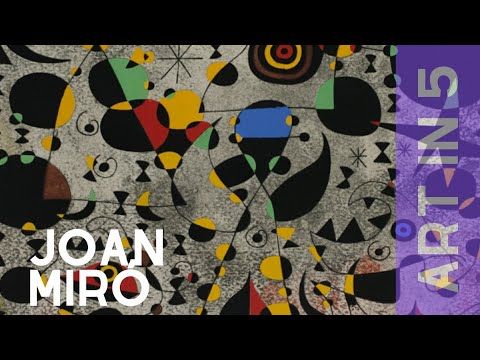
Anne Truitt
Anne Truit Anne Truitt, born in 1921 and passing away in 2004, was an American artist known for her minimalist sculptures and abstract paintings. Truitt's work explores the relationship between color, form, and space, and is characterized by its clean lines, geometric shapes, and subtle use of color. Truitt began her artistic career as a painter and later transitioned to sculpture. Her early paintings were often monochromatic, featuring large, solid-color fields that created a sense of calm and contemplation. As she delved into sculpture, Truitt continued to emphasize simplicity and precision, using wooden forms that she carefully painted with multiple layers of acrylic paint. One of Truitt's most notable series is the "Early" series, which consists of vertical wooden sculptures that stand at human scale. These sculptures, often referred to as "columns," are meticulously crafted and painted in vibrant, yet restrained, colors. Truitt believed that the verticality of her sculptures evoked a sense of the human presence and created a dialogue between the viewer and the artwork. Throughout her career, Truitt's work underwent a gradual evolution. While her early sculptures were characterized by their smooth and polished surfaces, her later works featured more textured and weathered finishes. This shift reflected her exploration of the passage of time and the imperfections that come with it. Truitt's artistic practice was deeply influenced by her personal experiences and reflections. She often drew inspiration from her own memories, emotions, and observations of the natural world. Her work also reflects her interest in spirituality and the transcendental, as she sought to create art that resonated with a sense of inner harmony and contemplation. Anne Truitt's contributions to the art world have been widely recognized and celebrated. Her minimalist sculptures and paintings have been exhibited in major galleries and museums around the world, and her unique approach to form and color continues to inspire and influence contemporary artists. Truitt's dedication to simplicity, precision, and the exploration of personal expression has left a lasting impact on the field of abstract art...
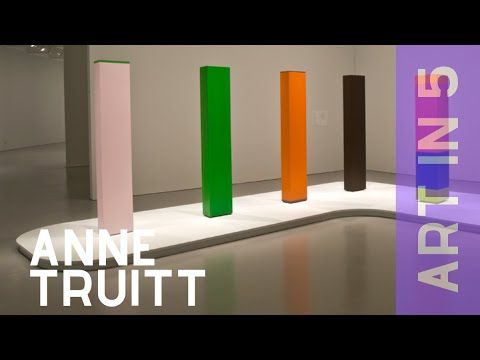
Mauritz de Haas
Alongside Mauritz Frederik Hendrik de Haas, his name has been spelled in various ways. Mauritz de Haas was the youngest of five children born to Jan and Marie Petronella de Haas. His siblings included Jan, a ship engineer in the Dutch Navy, Jacques, a violinist and composer, William F., a landscape painter, as well as Marie Petronella and Mauritz. Showing an early interest in seafaring, he received painting lessons from Louis Meijer, a renowned marine painter, after his father's early demise. De Haas pursued his artistic education at the Academy of Fine Arts in Rotterdam and later at the Academy of Fine Arts in The Hague, studying under Johannes Bosboom. He spent a year in London, studying contemporary English watercolor painting. De Haas focused primarily on marine painting from an early stage. He found inspiration for his paintings during numerous travels along the coast and aboard ships, including journeys to the English Channel, the North Coast of England and Scotland, as well as the French Atlantic coast and the island of Jersey. In 1858, he also embarked on a voyage with the British frigate Evertsen to the American East Coast. In 1856, Dutch Queen Sophie of Württemberg acquired de Haas' painting "Dutch fishing Boats", and a year later, he was appointed as a painter of the Dutch Navy. In 1859, he married the young Englishwoman Catharine A. Millar, with whom he had three children – Marie Petronella, Willemina F., and Mauritz Frederick Hendrick Junior, who also became a painter. Encouraged by the American Chargé d'Affaires in The Hague, August Belmont, de Haas relocated to the United States to New York City in 1859, where he remained until his death. After the move, he rented a studio in New York and quickly established himself as a prominent painter, receiving significant commissions. During the Civil War, he painted several ship scenes commissioned by Admiral David Glasgow Farragut. In 1862, he was elected as an associate member of the National Academy Museum and School, and in 1867, as a full member. He exhibited his watercolors annually at the Academy and was one of the founders of the A...

Flea Market to Fortune - Albrecht Dürer
In 2016, a man from Concord, Massachusetts, made an unexpected and extraordinary discovery during a routine visit to a garage sale in his neighborhood. Among the everyday items on sale, his attention was caught by a small, seemingly simple drawing of a Madonna and Child. It was priced at only $30, and though the artwork had an old and somewhat weathered look, the man bought it without realizing its full significance. Little did he know, he had stumbled upon a lost artwork by Albrecht Dürer, one of the most renowned artists of the German Renaissance. The drawing initially appeared unremarkable, and it was only later, when the buyer decided to investigate further, that its true value began to unfold. The man took the drawing to an art expert, Clifford Schorer, a consultant with Agnews Gallery in London and a collector of old master drawings. Upon first glance, Schorer wasn’t convinced that the piece was significant. However, as he examined the drawing more carefully, particularly its remarkable detail and execution, he began to suspect that it might be much more than an ordinary reproduction or an unknown sketch. Schorer embarked on a more thorough investigation. One of the key clues was the presence of Dürer’s distinct monogram on the artwork—an "AD" signature. This was the mark used by Dürer, who is celebrated as one of the most important figures of the Northern Renaissance, known for his detailed engravings, woodcuts, and intricate drawings. His works, including his religious and allegorical scenes, have had a profound influence on the world of art for centuries. Dürer was a master draftsman, and his monogram has been highly sought after by collectors and art historians alike. As Schorer dug deeper into the provenance and artistic style of the piece, he realized that this drawing might be one of Dürer’s long-lost works. The drawing appeared to date back to the early 16th century, around the time Dürer was active. Through extensive research and comparison with Dürer’s other known works, it became clear that the style of shading, the precision of the lines, and the composition were all hallmarks of the artist’s hand. To verify its authenticity, Schorer and other experts consulted Dürer scholars, conducted tests on the materials, and traced the artwork’s history as best they could. The results were conclusive: this was indeed an original drawing by Albrecht Dürer. Not only was it authentic, but it was also previously unknown to the art world, meaning it had been missing from Dürer’s catalog for centuries. Once authenticated, the drawing’s value skyrocketed. It was estimated to be worth around $10 million, an astonishing leap from the $30 it was initially sold for. The discovery of a previously unknown Dürer work is incredibly rare, and such finds are considered monumental in the world of art. It was a thrilling revelation, not only for the lucky buyer but also for art historians, collectors, and institutions around the world. This garage sale find is now regarded as one of the greatest art discoveries of recent times, adding to the mystique surrounding Dürer’s legacy. It is a reminder of how priceless treasures can sometimes emerge in the most unexpected places, hidden in plain sight among everyday objects. The drawing is now in the process of being formally cataloged and studied, and its ultimate fate—whether it will be sold, displayed in a museum, or kept in a private collection—remains to be seen. What’s certain is that this serendipitous find has added a valuable piece to the history of Renaissance art and reaffirmed Dürer’s brilliance as one of the greatest masters in European art history. The drawing in question, believed to be an early Madonna and Child, represents a familiar theme in Dürer's oeuvre, where religious and allegorical figures were often central. In this particular composition, Dürer's mastery is evident in the intricate detailing of the figures, even in a preparatory sketch form. The Madonna’s delicate post
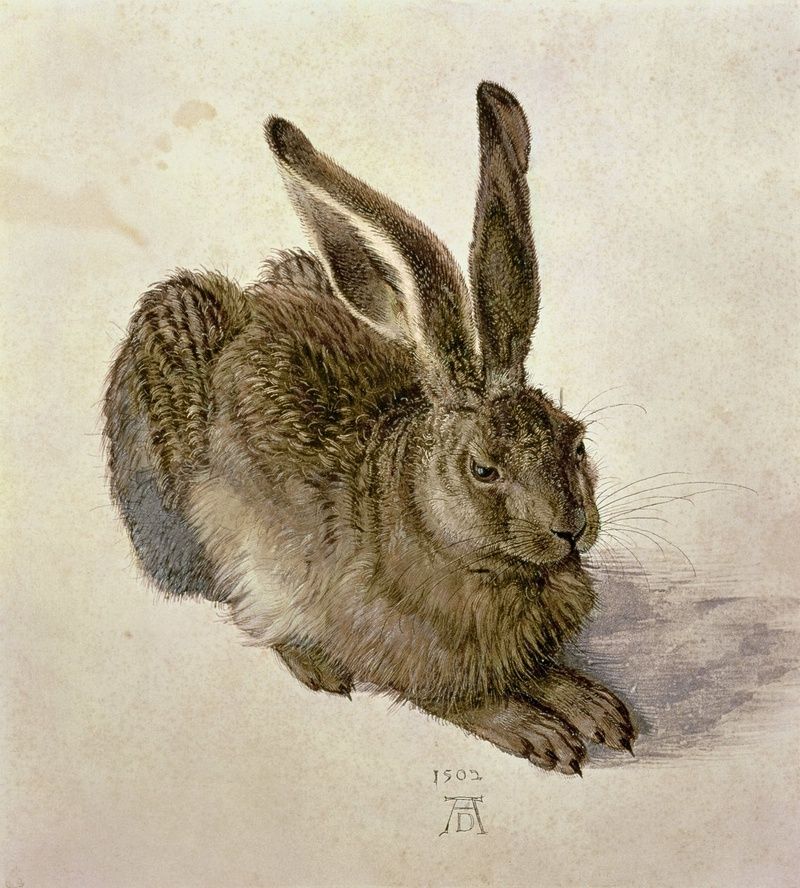
Flea Market to Millions- Jackson Pollock
In 1992, Teri Horton, a retired truck driver from California, unwittingly stumbled upon what could be one of the most remarkable art discoveries of the 20th century. Horton was out shopping at a local thrift store in San Bernardino, California, searching for something amusing to gift a friend. She noticed a large, chaotic abstract painting, splattered with vibrant colors. It wasn’t exactly her taste, but for just $5, she figured it would make a quirky gift. Little did she know, this modest purchase could hold immense value. After bringing the painting home, her friend found it too large to hang, and Horton ended up trying to sell it at a garage sale. That’s when the story took a sharp turn. A passing art teacher noticed the painting and suggested that it looked remarkably similar to the style of Jackson Pollock, one of the most influential American painters of the 20th century. Pollock was famous for his drip painting technique, where paint was poured, splattered, and drizzled in seemingly random patterns, creating a dynamic sense of movement on the canvas. His abstract expressionist works are now considered invaluable. Horton, however, had never heard of Pollock. Unconvinced at first, she began a long and challenging journey to authenticate the painting. The art world, known for its skepticism and rigorous standards of proof, was not quick to accept the work. Several art experts dismissed the painting, largely because it lacked Pollock’s signature, which was seen as crucial to confirming its authenticity. Nonetheless, Horton pressed on, refusing to sell the painting when offered hundreds of thousands of dollars early in her investigation. Horton’s persistence led her to enlist the help of a forensic expert, Peter Paul Biro, known for his work in analyzing the physical evidence in paintings. Biro’s breakthrough came when he discovered a fingerprint on the back of the canvas. After comparing it with fingerprints found on paint cans and other objects from Jackson Pollock’s studio, Biro confirmed a match, providing a critical piece of evidence in favor of the painting’s authenticity. Additionally, the materials used in the painting, such as the type of paint and canvas, matched those used by Pollock in the early 1950s. Despite this discovery, the art world remained divided. Some experts refused to acknowledge the painting as an authentic Pollock due to the lack of provenance—a clear and documented history of the painting’s ownership. Pollock’s works were well documented and accounted for, making it difficult to prove that this painting was indeed part of his output. As a result, some questioned whether a fingerprint alone was enough to authenticate the work. Nevertheless, as Horton’s story gained international attention, the painting's estimated value soared to $15 million. Offers to buy the painting rolled in, but Horton, emboldened by her discovery and the controversy surrounding it, refused to sell for anything less than what she believed it was worth. She held firm, rejecting multi-million dollar offers while awaiting full recognition from the art world. Horton’s experience was later chronicled in documentaries and news stories, capturing the public’s fascination with the idea that a $5 thrift store find could potentially be worth millions. The tale of Teri Horton and her Jackson Pollock painting raises broader questions about the nature of art, value, and authentication. While the painting has never been conclusively authenticated to the satisfaction of the entire art community, the evidence supporting its legitimacy is strong enough to leave the door open for future reevaluation. Horton’s story remains one of the most captivating and controversial art discoveries, demonstrating that treasures can indeed be hiding in plain sight, waiting to be uncovered in the most unlikely places. Pollock, a leading figure in the Abstract Expressionist movement, is best known for his drip paintings, where he would famously splatter, pour,
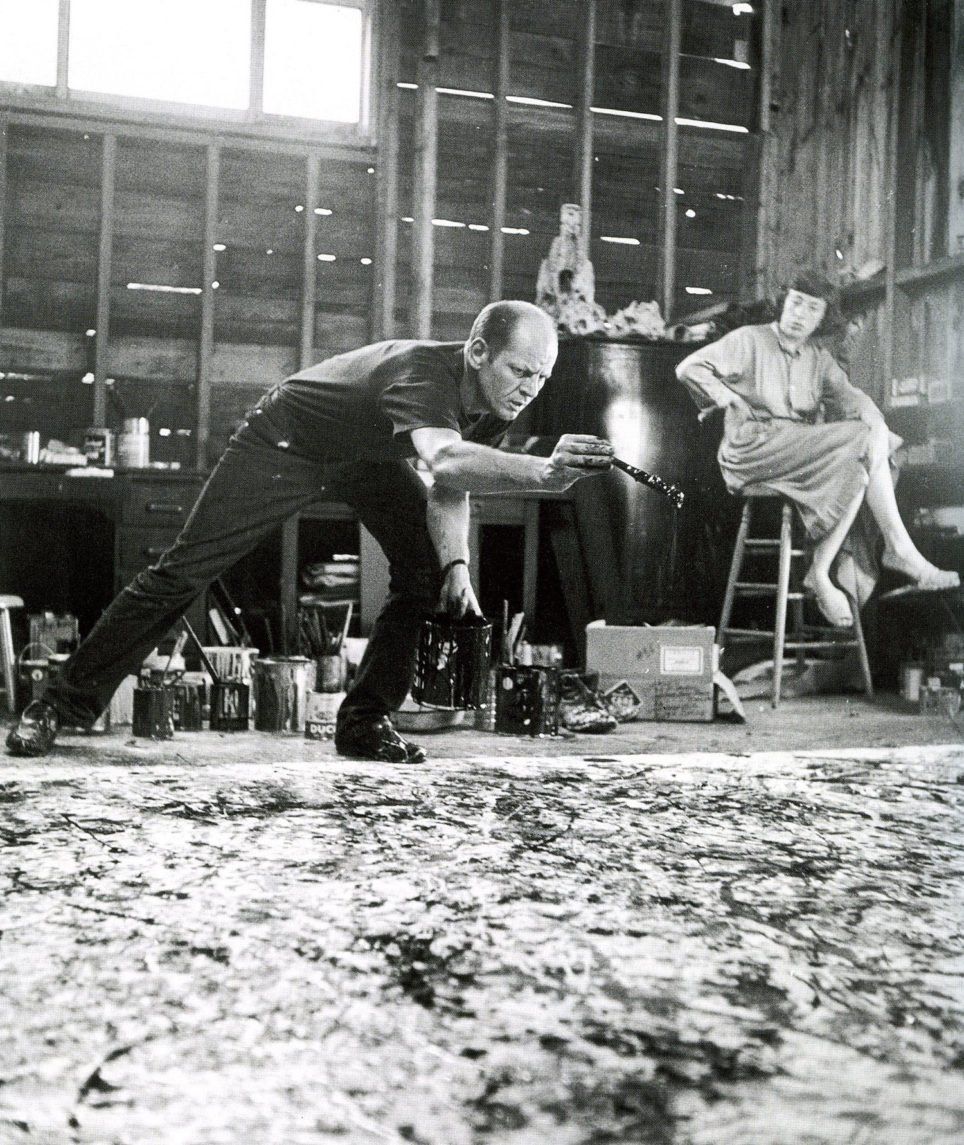
Christ Mocked
The discovery of "Christ Mocked" by the Italian Renaissance master Cimabue is one of the most extraordinary art finds in recent history. In 2019, a French woman in Compiègne, a small town in northern France, bought what she believed to be a simple religious icon for about €30 at a local flea market. She hung it in her kitchen, unaware of its true significance. The painting, measuring just 25 cm by 20 cm (about 10 inches by 8 inches), had been sitting above her stovetop for years, slightly soiled but intact. It wasn't until a local auctioneer suggested the woman have the painting appraised that its true identity began to unravel. Experts were stunned when they realized that the work was an original Cimabue—a 13th-century Italian painter whose works are considered incredibly rare. Cimabue, also known as Cenni di Pepo, was one of the first artists to break away from the rigid Byzantine style, laying the groundwork for the Renaissance. The painting is part of a polyptych, a multi-panel altarpiece, created by Cimabue around 1280, depicting scenes from the Passion of Christ. Other known panels from this series are in famous museums such as the Frick Collection in New York and the National Gallery in London. "Christ Mocked," in particular, portrays the moment when Jesus was ridiculed by soldiers before his crucifixion. Art historians and restoration experts confirmed the painting's authenticity using advanced techniques, including infrared reflectography, to match it to Cimabue's known works. Given its age and importance in art history, the piece generated huge interest. In October 2019, the painting was put up for auction by Actéon Auction House in Senlis, France. Initially, it was expected to fetch around €4 to €6 million, but the bidding war skyrocketed the price. It ultimately sold for a staggering €24 million ($26.6 million), shattering records for pre-Renaissance art. This find not only stunned the art world but also made the anonymous French woman an overnight millionaire, all from a humble flea market purchase! The sale highlighted how incredibly valuable lost or forgotten masterpieces can sometimes resurface in the most unexpected places. The rediscovery of "Christ Mocked", a small but monumental work by Cimabue (Cenni di Pepo), has become one of the most remarkable art finds of the 21st century. As a piece that exemplifies the transition from Byzantine rigidity to the naturalism of the early Renaissance, its significance reaches far beyond the staggering auction price it achieved. The painting captures a pivotal moment in the evolution of Western art, marking the shift towards emotional expression, depth, and realism. Cimabue, active in the late 13th century, is widely recognized as one of the most influential artists of his time. His work laid the groundwork for the innovations of Giotto, his pupil, who would take naturalism even further. Cimabue’s rejection of the stylized, almost formulaic Byzantine aesthetic—characterized by flat planes and idealized figures—marked a key moment in European art. His paintings demonstrate an early attempt to introduce natural light, depth, and emotion to religious subjects. "Christ Mocked" is part of a larger polyptych series that once depicted various scenes from Christ’s Passion. Measuring only 25 cm by 20 cm, the painting’s intimate size belies its dramatic emotional intensity. The scene shows Christ being humiliated and ridiculed by soldiers in the hours leading up to his crucifixion. His serene and suffering face contrasts sharply with the hostile, contorted expressions of the soldiers surrounding him. One of the most striking elements of this painting is the humanity Cimabue injects into his figures. While earlier Byzantine art emphasized the divine nature of Christ through idealized, remote figures, Cimabue's Christ is deeply human, imbued with a palpable sense of pain and resignation. The soldiers are equally vivid—grimacing, gesturing, and mocking in a way that suggests the arti
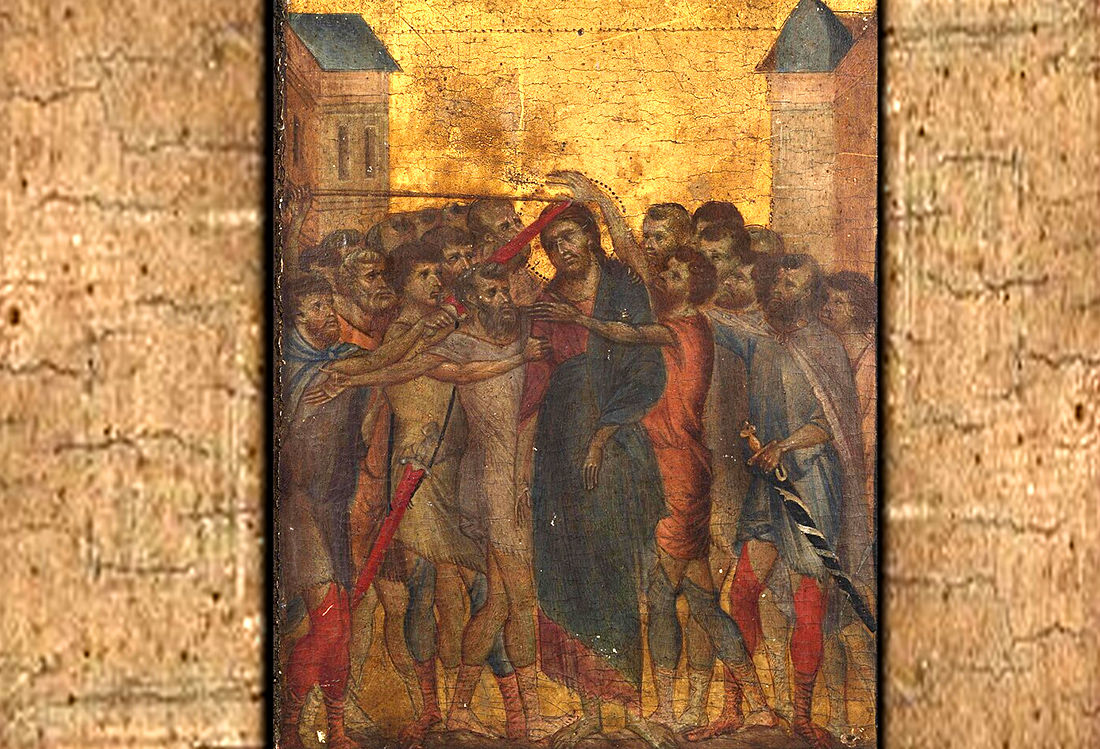
Most Expensive Artworks by Century
In this exploration, we focus on the highest auction prices achieved by artworks from each century, uncovering which artists—from the 14th century to the present—have reached the pinnacle of market value for their masterpieces. Art reflects the evolution of society, with each century showcasing influential creators whose works resonate with collectors. We aim to identify the most valuable pieces that have emerged throughout history, illustrating the dynamic relationship between art and its worth in the auction market. 14th Century: Wang Meng – Moving to Zhichuan (1350/70) sold for $62.1 million in June 2011. Wang Meng’s "Moving to Zhichuan" is a stunning example of Chinese landscape painting from the Yuan dynasty. The artwork features a serene, mountainous landscape adorned with lush, rolling hills, towering trees, and tranquil waters. The composition is intricate, showcasing Wang Meng's masterful brushwork and his ability to create depth and perspective. In the foreground, figures can be seen traversing a winding path, which suggests a journey through this picturesque environment. The painting captures the harmony between nature and human activity, reflecting Daoist principles of balance and unity with the natural world. Wang Meng employs a rich color palette, with shades of green and blue dominating the scene, complemented by soft earth tones. His use of light and shadow adds a sense of dimensionality, drawing the viewer into the idyllic setting. Overall, "Moving to Zhichuan" exemplifies the elegance and sophistication of Yuan dynasty painting, making it a significant work in Chinese art history. 15th Century: Leonardo da Vinci (attributed) – Salvator Mundi (circa 1500) sold for $450.3 million in November 2017. Leonardo da Vinci's "Salvator Mundi" is a captivating portrayal of Christ as the Savior of the World. The painting depicts Jesus Christ in a Renaissance style, with his right hand raised in a gesture of blessing while holding a crystal orb in his left hand, symbolizing the cosmos and his authority over the world. The figure is set against a dark, subtly detailed background that enhances the luminosity of Christ’s face and robes. Leonardo’s masterful use of chiaroscuro creates depth and three-dimensionality, drawing attention to the serene yet commanding expression of Christ. His hair is rendered with delicate, flowing brushstrokes, while his garments exhibit intricate folds, showcasing da Vinci's exceptional skill in capturing texture and light. "Salvator Mundi" is notable not only for its artistic qualities but also for its complex history, having undergone restoration and debate over its attribution. It has become one of the most famous paintings in the world, particularly after its record-breaking sale at auction, further solidifying its significance in art history. 16th Century: Titian – Diana and Actaeon (1556/59) sold for $71.3 million in February 2009. Titian's "Diana and Actaeon" depicts a moment from Ovid's "Metamorphoses," showcasing the tragic encounter between the goddess Diana and the hunter Actaeon. In this stunning composition, Diana, the goddess of the hunt, is portrayed in a lush forest, caught in a moment of surprise as she bathes with her nymphs. Actaeon, inadvertently stumbling upon the scene, is depicted in the background, his expression a mix of awe and dread. The painting beautifully captures the tension between innocence and consequence, as Actaeon's gaze disrupts the tranquility of Diana's sacred space. Titian's masterful use of color and light enhances the emotional depth of the scene, with rich greens and earthy tones setting a serene yet dramatic atmosphere. The figures are rendered with exquisite detail, from the soft textures of the nymphs' skin to the shimmering water of the pool. This work exemplifies the Venetian Renaissance's emphasis on sensuality and the human form, making "Diana and Actaeon" a quintessential piece of art history. 17th Century: Rubens – The Massacre of the Innocent
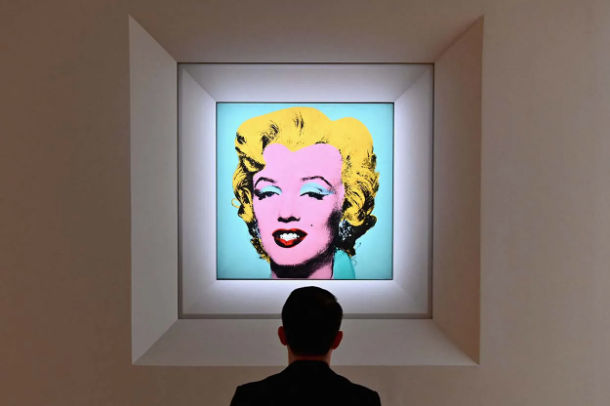
From Poverty to Priceless - Van Gogh
Vincent van Gogh, a name synonymous with passionate colors and expressive brushstrokes, lived a life marked by extreme poverty. While creating his iconic paintings, he struggled to make ends meet. His art, barely recognized in his time, brought him little financial reward. Van Gogh was an artist far ahead of his time. His works, now celebrated as masterpieces, were dismissed as eccentric and unsalable during his lifetime. He painted out of passion, but this passion brought him little bread. To survive, he relied on the financial support of his brother Theo. In Van Gogh's time, one could have purchased a small pile of coal with the money that his paintings, now worth millions, would have fetched. That was just enough to fuel a stove for a few days. Or, one could have afforded a few loaves of bread and some cheese - enough to survive for a few days. A painting celebrated as a masterpiece today was often worth no more than a few days' worth of food. There are, however, a few exceptions. Van Gogh did sell a few of his works during his lifetime, albeit at very modest prices. He managed to sell one of his paintings for 400 francs - a sum that provided him with a small financial relief at the time, but is negligible compared to today's record prices. One could argue that Van Gogh could have taken a simple job as a dishwasher or factory worker during his lifetime. While these jobs would not have made him a fortune, they would have at least provided a regular income. Perhaps he could have led a slightly more comfortable life. But Van Gogh was an artist through and through. Painting was his passion, his life. He could never have imagined giving up his art. Today, over a century after his death, the perception of Van Gogh's art has changed radically. His works fetch astronomical sums at auctions. Vincent van Gogh's "Wheatfield with a Ploughing Peasant," painted in 1889, is one of the artist's most iconic works. This masterpiece was sold at Christie's New York in November 2017 for a staggering $81.313 million to an undisclosed buyer, acquired from the original owners, Nancy Lee and Perry R. Bass. This iconic work is a prime example of Van Gogh's later, expressive, and colorful phase. The vast expanse of the wheat field, disrupted by the laborious work of the peasant, conveys a sense of endless expanse and the connection between humanity and nature. The vigorous brushstrokes and vibrant colors lend the painting an almost tangible energy. Van Gogh's interest in ordinary people and their work is clearly reflected in this piece...
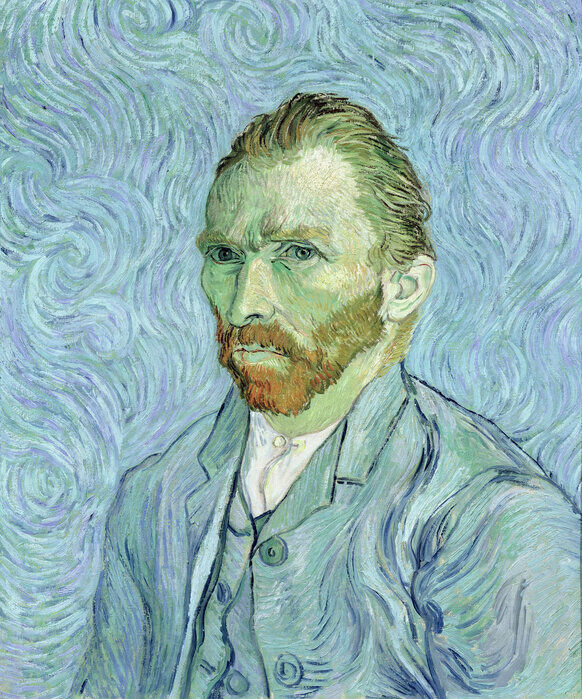
Vala Moro
Welcome to this episode of our podcast, where we will explore the intriguing and multifaceted world of Vala Moro, a contemporary artist whose work captivates and challenges audiences. Through her innovative use of materials and immersive installations, Moro delves into themes of identity, memory, and cultural heritage. In this episode, we will discuss her artistic journey, the influences that shape her work, and the emotional resonance of her art. Join us as we uncover the unique perspectives and creative expressions that define Vala Moro's contributions to contemporary art, inviting listeners to engage with the complexities and narratives woven into her creations. Stay tuned for an enlightening exploration of Vala Moro!
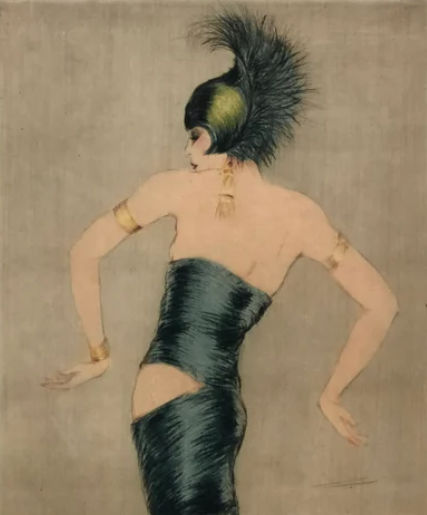
Tamara de Lempicka
Welcome to this episode of our podcast, where we will explore the life and work of Tamara de Lempicka, a celebrated Polish painter and a leading figure of the Art Deco movement. Born in 1898 in Warsaw, de Lempicka's distinctive style and glamorous subjects made her one of the most recognized artists of the early 20th century. In this episode, we’ll delve into de Lempicka’s life, tracing her journey from her privileged upbringing to her studies in Paris, where she became immersed in the vibrant art scene of the 1920s. Her work is characterized by bold colors, geometric shapes, and a modern sensibility that captures the essence of the Jazz Age. De Lempicka’s portraits often depict fashionable women and affluent figures, exuding confidence and sophistication. We will discuss the cultural and historical context of the Art Deco period, a time of great social change and artistic innovation that influenced de Lempicka's work. Her paintings, such as "Autoportrait (Tamara in a Green Bugatti)" and "The Blue Guitar," reflect her fascination with modernity, elegance, and the dynamic spirit of her time. Join us as we highlight some of de Lempicka’s most significant works, examining her unique approach to composition and color. We’ll also explore her legacy, discussing how she continues to inspire artists and fashion designers today, as well as her role as a prominent female artist in a male-dominated art world. Stay tuned for an engaging exploration of the life and art of Tamara de Lempicka!

Simon Gate
Welcome to this episode of our podcast, where we will explore the innovative work of Simon Gate, a pioneering Swedish glass designer and artist. Born in 1883 in Stockholm, Gate is best known for his exquisite glassware and his significant contributions to the Swedish design movement during the early to mid-20th century. In this episode, we’ll delve into Gate’s life, from his studies at the Royal Academy of Fine Arts to his influential role at the Orrefors Glassworks, where he developed a unique style that combined traditional glassmaking techniques with modern aesthetics. His work often features intricate carvings and distinctive forms, showcasing his mastery of both design and craftsmanship. We will discuss the cultural and historical context of Sweden during Gate’s career, a period marked by a growing appreciation for functional yet beautiful design. His glass pieces often reflect the natural world, incorporating organic shapes and patterns that highlight the beauty of the material itself. Join us as we highlight some of Gate’s most significant works, including his celebrated glass vases, bowls, and sculptures that demonstrate his innovative approach and attention to detail. We’ll also examine his legacy in the world of design, discussing how his contributions have influenced contemporary glass art and design. Stay tuned for an insightful exploration of the life and artistry of Simon Gate!

Rex Whistler
Welcome to this episode of our podcast, where we will delve into the enchanting world of Rex Whistler, a British artist renowned for his whimsical and imaginative style. Born in 1905 in Eltham, London, Whistler was not only a painter but also an accomplished illustrator and muralist, known for his ability to blend fantasy with reality in a way that captivates the viewer's imagination. In this episode, we’ll explore Whistler’s life, from his early education at the Royal Academy Schools to his time in Paris, where he was influenced by the vibrant art scene and the spirit of the 1920s. His works are characterized by their intricate details, playful themes, and a distinctive use of color, often drawing inspiration from literature, mythology, and historical contexts. We will discuss the historical and cultural landscape of the early 20th century, highlighting how Whistler’s experiences during both World Wars impacted his artistic direction. His murals, including those at Plas Newydd in Wales, showcase his ability to create immersive environments that transport viewers to fantastical realms. Join us as we highlight some of Whistler’s most significant works, including his striking landscapes, enchanting portraits, and whimsical illustrations that reflect his unique artistic vision. We’ll also examine his legacy, discussing how his art continues to inspire and resonate within the realms of fantasy and decorative arts. Stay tuned for an engaging exploration of the life and creativity of Rex Whistler!
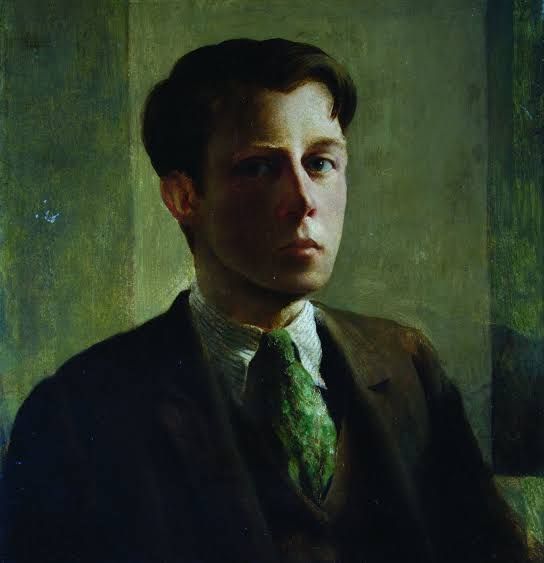
Otto Arpke
Welcome to this episode of our podcast, where we will explore the life and work of Otto Arpke, a notable figure in the German Expressionist movement. Born in 1887 in Breslau (now Wrocław, Poland), Arpke became known for his unique artistic style that combined emotional depth with bold forms and colors, making him a significant contributor to the modern art scene. In this episode, we’ll delve into Arpke’s life, from his early education at the Academy of Fine Arts in Düsseldorf to his involvement in the vibrant art circles of Berlin during the early 20th century. Arpke's work was characterized by an intense exploration of human emotion, often reflected in his portraiture and figurative compositions. He was influenced by various movements, including Fauvism and Cubism, which he integrated into his expressionist style. We will discuss the historical and cultural context of Germany during Arpke's lifetime, particularly the social upheavals and artistic revolutions that shaped his artistic perspective. His paintings often captured the complexities of the human experience, showcasing a mastery of color and form that resonated with the tumultuous spirit of his time. Join us as we highlight some of Arpke’s most significant works, including his expressive portraits and vibrant landscapes that showcase his innovative techniques and emotional depth. We’ll also reflect on his artistic legacy and consider how his contributions continue to inspire contemporary artists and influence the landscape of modern art. Stay tuned for an engaging exploration of the life and art of Otto Arpke!
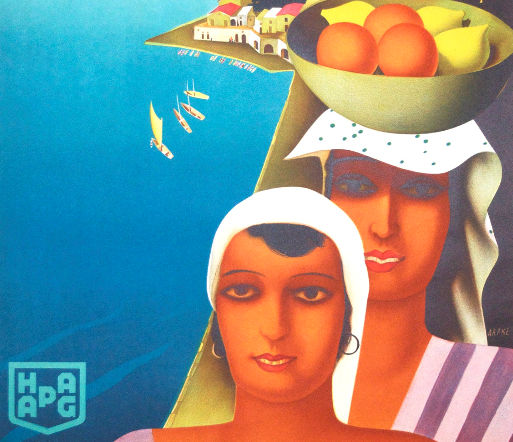
Hugo Scheiber
Welcome to this episode of our podcast, where we will delve into the life and work of Hugo Scheiber, a prominent Hungarian painter known for his vibrant use of color and significant contributions to the modern art movement. Born in 1873 in Budapest, Scheiber's artistic journey took him through various influences, culminating in a unique style that blended elements of Impressionism and Post-Impressionism. In this episode, we’ll explore Scheiber’s life, from his early artistic training to his travels across Europe, where he absorbed the cultural and artistic movements of his time. Scheiber was a member of the Nagybánya artists' colony, where he developed his distinctive style characterized by bold brushwork and a vivid palette that captures the essence of light and atmosphere. We will discuss the historical context of Hungary in the late 19th and early 20th centuries, a period marked by significant political and social changes that influenced many artists, including Scheiber. His works often reflect the landscapes, people, and vibrant life of his surroundings, showcasing his ability to convey emotion through color. Join us as we highlight some of Scheiber’s most significant works, including his landscapes, portraits, and still lifes, which showcase his innovative approach and deep understanding of color theory. We’ll also examine his legacy in the world of art, discussing how he remains an influential figure in Hungarian art history and how his work continues to inspire contemporary artists. Stay tuned for an insightful exploration of the colorful world of Hugo Scheiber!
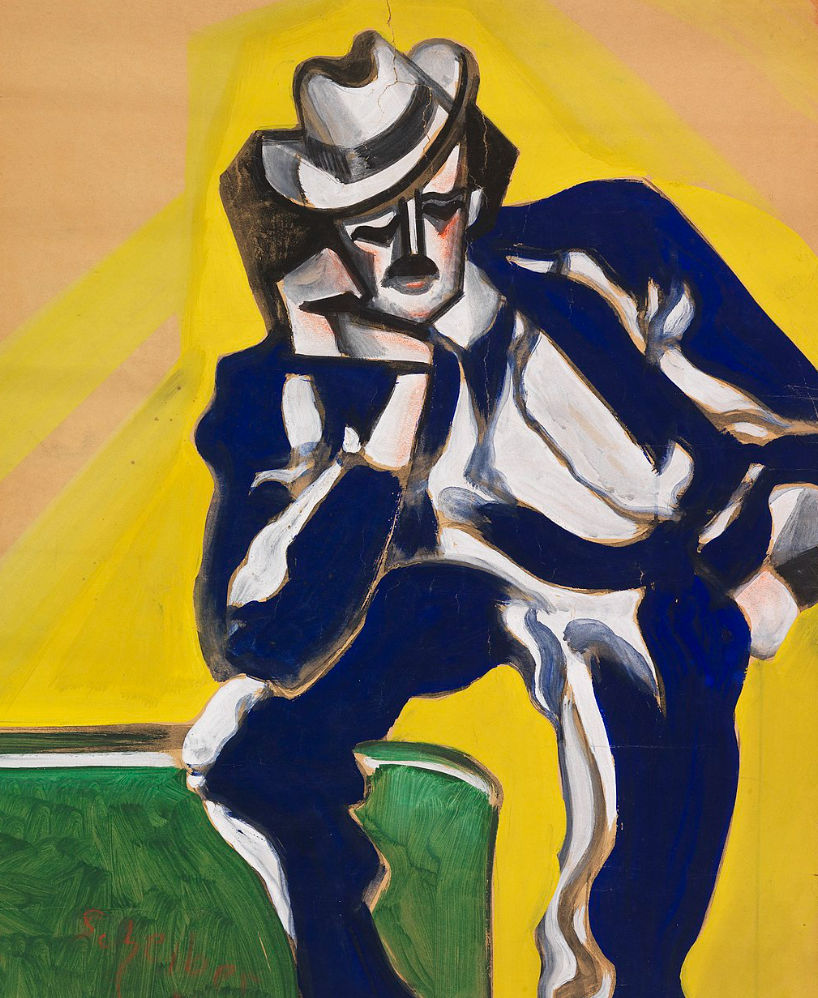
Alexandra Exter
Welcome to this episode of our podcast, where we will explore the extraordinary life and work of Alexandra Exter, a pioneering figure in the Modernist and Cubist movements. Born in 1882 in Ukraine, Exter emerged as one of the most influential artists of her time, known for her innovative approach to painting, theater design, and graphic art. In this episode, we’ll delve into Exter’s life, tracing her journey from her artistic studies in Kiev and Paris to her collaborations with leading avant-garde artists. She became associated with influential groups such as the Bubnovy Valet (Jack of Diamonds) and was a key participant in the 1913 Exposition Internationale des Arts Décoratifs in Paris, which showcased the vibrant new directions of modern art. We will discuss the cultural and historical context of the early 20th century, which significantly shaped Exter’s artistic vision. Her work is characterized by bold colors, dynamic shapes, and a unique synthesis of Cubism and Futurism. Among her most notable pieces are her striking paintings, innovative stage designs for ballet and theater, and her contributions to the Russian avant-garde. Join us as we highlight Exter’s most significant works, including her famous landscapes, portraits, and abstract compositions, and examine her role in redefining the boundaries of art and design. We’ll also consider her legacy, discussing how her vision continues to resonate in contemporary art and why she remains a vital figure in the history of modern art. Stay tuned for an insightful look into the life and art of Alexandra Exter!
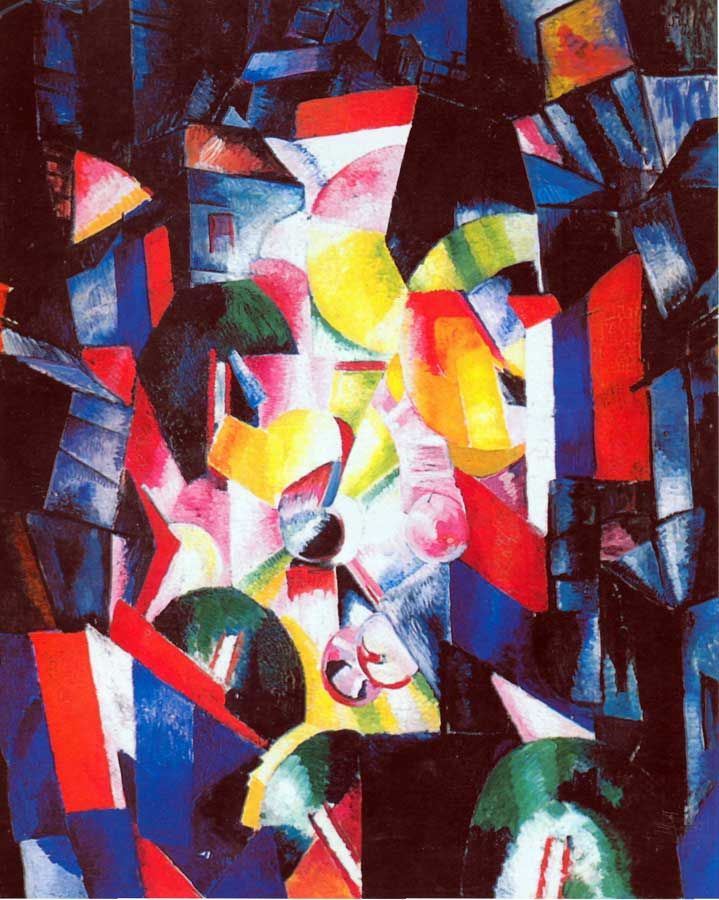
Aleksandra Belcova
Welcome to this episode of our podcast, where we'll be diving into the fascinating life and work of Aleksandra Belcova, a remarkable artist of the Art Deco movement. Born in 1892 in Belarus, Belcova became a key figure in Latvian art and an important representative of interwar modernism. She was closely associated with the Riga Group of Artists, a movement that brought together some of the most innovative thinkers and creatives of the time. In this episode, we’ll explore Belcova’s life, from her artistic studies in St. Petersburg to her travels and eventual settlement in Riga, where she lived and worked until her death in 1981. We will also delve into the cultural and social climate of the early 20th century, a time marked by dramatic political and artistic changes, which deeply influenced Belcova’s style and outlook. Her artistic journey evolved from a classical approach to a more avant-garde style, blending Art Deco influences with elements of Cubism and Futurism. Some of her most notable works, such as her portraits and figurative compositions, are celebrated for their striking elegance, strong geometrical forms, and subtle use of color. Belcova’s paintings, drawings, and illustrations often depict women, sometimes in intimate settings, capturing the spirit and complexity of her time. Join us as we discuss her most significant works, including her portraits of Latvian cultural figures, her experimentation with graphic art, and her contributions to Latvian modernism. We’ll also touch on her legacy, examining how her works have influenced modern Latvian art and why she remains an important figure in the history of 20th-century art. Stay tuned for an insightful look into the life and art of Aleksandra Belcova!
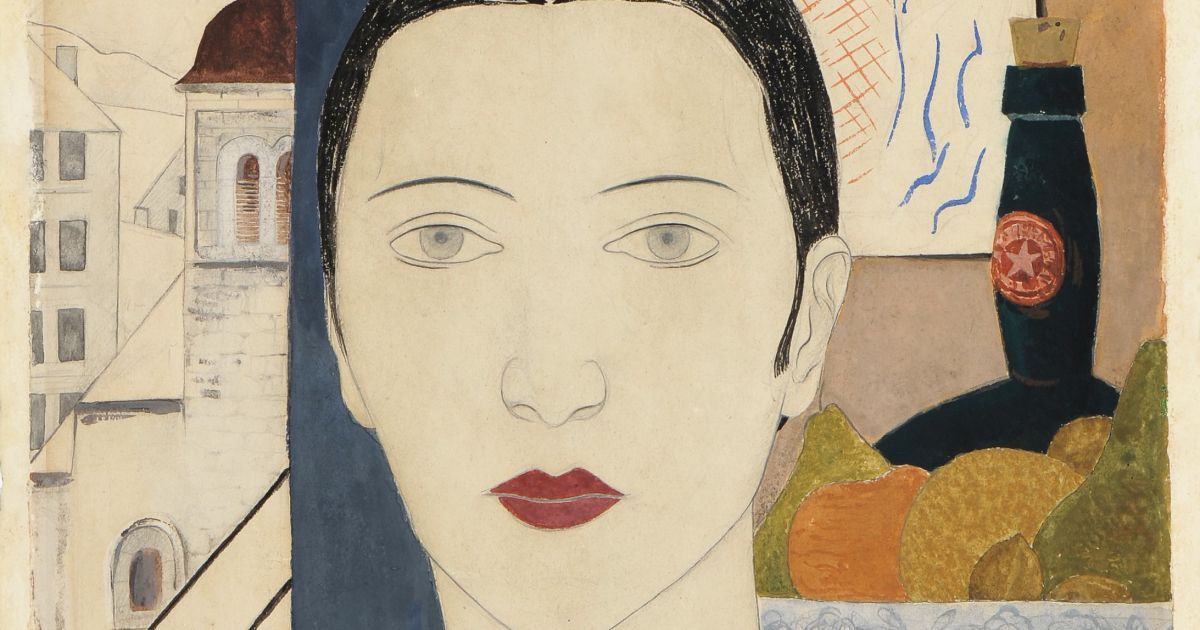
Suzanne Valadon
Suzanne Valadon (1865-1938) was a French artist known for her contributions to the world of visual arts, particularly as a painter and artist's model. She was born on September 23, 1865, in Bessines-sur-Gartempe, France. Suzanne Valadon initially began her career as a circus acrobat but later turned to modeling for various artists in Montmartre, a neighborhood in Paris known for its vibrant art scene. She posed for many prominent painters of her time, including Pierre-Auguste Renoir and Henri de Toulouse-Lautrec. Valadon's work as a model allowed her to observe and learn from these artists, and it ultimately inspired her to become a painter herself. Valadon's own art is characterized by its bold and distinctive style, often featuring nudes, portraits, and scenes of everyday life. She is known for her strong use of color and a frank and honest portrayal of her subjects. Her work was both modern and unconventional for her time, challenging traditional artistic conventions.
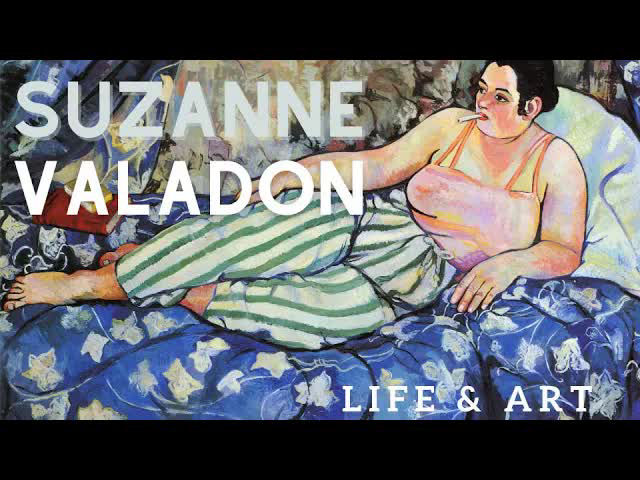
Max Ernst
Max Ernst (1891-1976) was a German-born Surrealist artist who made significant contributions to the development of Surrealism and other modern art movements. He was born on April 2, 1891, in Brühl, Germany, and is known for his innovative and influential works in various artistic mediums, including painting, sculpture, collage, and printmaking. Ernst's art is characterized by its dreamlike and fantastical imagery, often created through techniques such as frottage (rubbing), grattage (scratching), and decalcomania (pressing paint between two surfaces). He played a pivotal role in the Surrealist movement, collaborating with other prominent artists such as André Breton and Salvador Dalí. His works often featured bizarre and metamorphic imagery, combining elements from the unconscious mind with everyday objects.
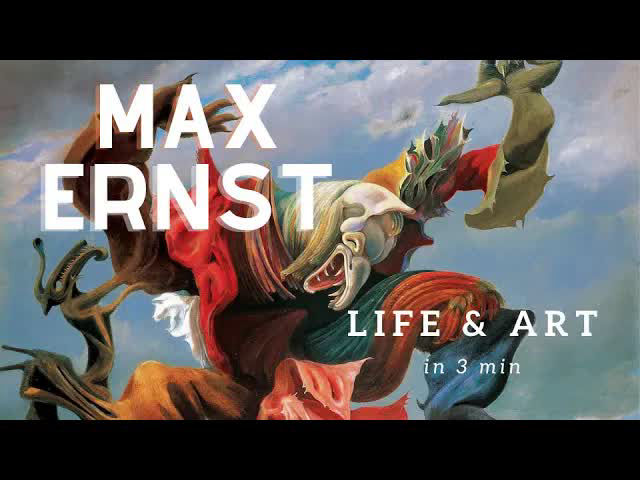
Maud Lewis
Maud Lewis (1903-1970) was a Canadian folk artist known for her charming and distinctive style of painting. She was born in Yarmouth, Nova Scotia, Canada. Despite living a challenging life marked by poverty and physical disability due to severe rheumatoid arthritis, Maud Lewis's artwork has gained international recognition and is celebrated for its simplicity, bright colors, and whimsical depictions of rural life in Nova Scotia. Maud Lewis' work primarily consisted of small, colorful paintings that often featured scenes of nature, animals, landscapes, and everyday life in the maritime provinces of Canada. Her use of vibrant colors and childlike style have endeared her to many art enthusiasts. She painted on various surfaces, including scraps of wood, cardboard, and even her own home, which she transformed into a work of art. She lived in a tiny one-room house without running water or electricity, which she decorated with her paintings.
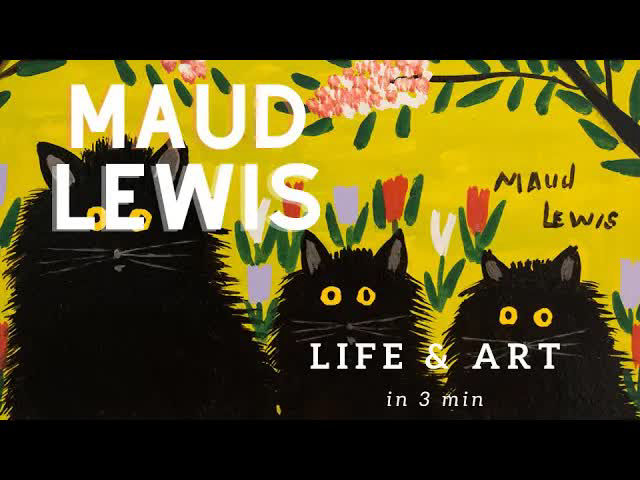
Marcel Duchamp
Marcel Duchamp (1887-1968) was a French-American artist who is widely regarded as one of the most influential figures in the history of modern and contemporary art. He was born on July 28, 1887, in Blainville-Crevon, France. Duchamp was associated with several significant art movements, including Dadaism and Surrealism, and he is perhaps best known for his pioneering contributions to the development of conceptual art.
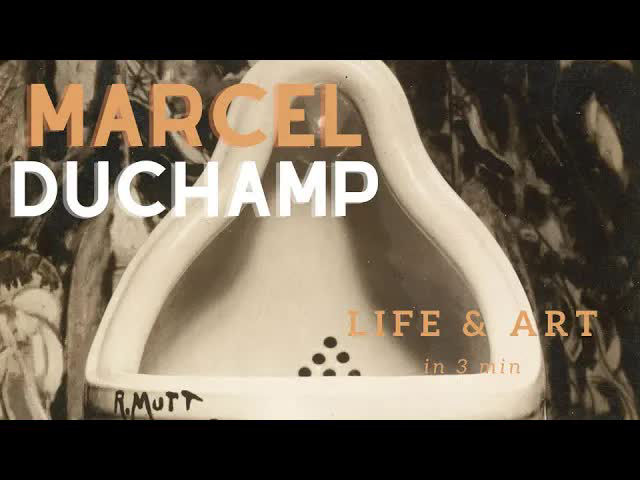
Jenny Holzer
Jenny Holzer is a contemporary American artist known for her thought-provoking and text-based artworks. She was born on July 29, 1950, in Gallipolis, Ohio, USA. Holzer is recognized for her use of language and text as a central element in her art, which she often presents in various public spaces, including LED signs, projections, and more traditional mediums like paintings and sculptures. One of Jenny Holzer's most well-known bodies of work is her "Truisms" series, which features short, concise statements that challenge conventional wisdom and societal norms. These statements are often displayed in public spaces, creating a dialogue and provoking thought among viewers. Holzer's use of language and the public nature of her works have made her a prominent figure in the world of conceptual and text-based art.

Henry Moore
Henry Moore (1898-1986) was a renowned British sculptor best known for his significant contributions to the world of modern sculpture. He was born on July 30, 1898, in Castleford, West Yorkshire, England. Moore's work is characterized by abstract and organic forms, often inspired by natural shapes such as bones, stones, and shells. He was a pioneer in modernist sculpture and is considered one of the most influential sculptors of the 20th century. Some of his most famous sculptures include reclining figures, family groups, and abstract forms, which can be found in public spaces, museums, and private collections worldwide. Moore's sculptures are known for their smooth, curvaceous surfaces and their ability to convey a sense of human and natural forms. Moore's career and artistic output spanned several decades, and his work went through various stylistic phases. He gained international recognition for his sculptures and was the recipient of numerous awards and honors, including a knighthood in 1952. Henry Moore's influence on the world of sculpture is profound, and his legacy continues to inspire contemporary artists. His sculptures can be seen in many museums, parks, and public spaces, and his contributions to the field of modern art are celebrated globally.

Eileen Agar
Eileen Agar (1904-1991) was a British artist associated with the Surrealist movement. She was born on December 1, 1904, in Buenos Aires, Argentina, to a Scottish father and American mother but spent most of her life in England. Agar is known for her contributions to various artistic mediums, including painting, sculpture, and collage. Eileen Agar's work often combined elements of surrealism and abstraction, and she was known for her experimental and innovative approach to art. She was associated with the Surrealist movement in England and counted other prominent artists like André Breton and Salvador Dali among her acquaintances. Agar's art explored themes related to the subconscious, dreams, and the juxtaposition of disparate elements. She often incorporated found objects and materials into her work, creating striking and thought-provoking compositions. Her artistic output was diverse, and she continued to evolve her style throughout her career. Eileen Agar's work has been exhibited in various galleries and museums, and she is considered an important figure in the history of 20th-century British art, particularly for her contributions to Surrealism and avant-garde movements. Her artistic legacy continues to influence contemporary artists interested in the exploration of the subconscious and the boundaries of traditional artistic mediums.
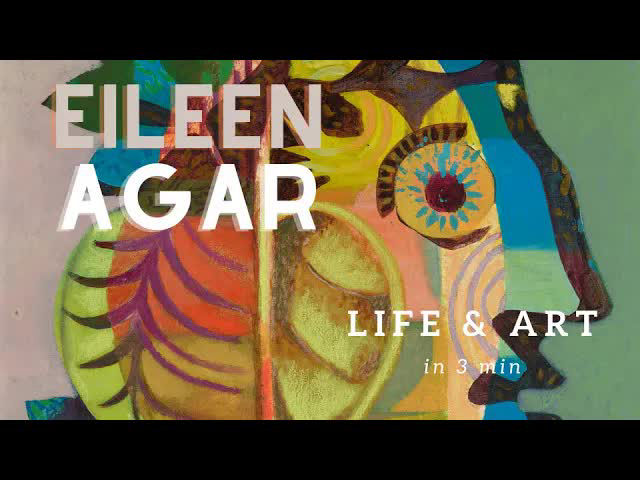
Eiichirō Oda
Eiichiro Oda is a highly acclaimed Japanese manga artist known for creating the popular and long-running manga series "One Piece." He was born on January 1, 1975, in Kumamoto, Japan. "One Piece" is one of the most successful and well-loved manga and anime series in the world. Eiichiro Oda's "One Piece" manga, which began serialization in 1997 in Shueisha's Weekly Shonen Jump magazine, has gained a massive global following. The story follows Monkey D. Luffy and his crew of pirates as they search for the legendary treasure known as the "One Piece" in a vast and adventurous world filled with unique characters, islands, and powerful enemies.

Dorothea Tanning
Dorothea Tanning was born and raised in Galesburg, Illinois. She was the second of three daughters to Andrew Peter Tanning (born Andreas Peter Georg Thaning; 1875–1943) and Amanda Marie Hansen (1879–1967), who named her for her maternal grandmother. After graduating from Galesburg Public High School in 1926, Tanning worked in the Galesburg Public Library (1927) and attended Knox College (1928–30). After two years of college she quit to pursue an artistic career, moving first to Chicago in 1930 and then to New York in 1935, where she supported herself as a commercial artist while working on her own painting. Tanning was married briefly to the writer Homer Shannon in 1941, after an eight-year relationship.
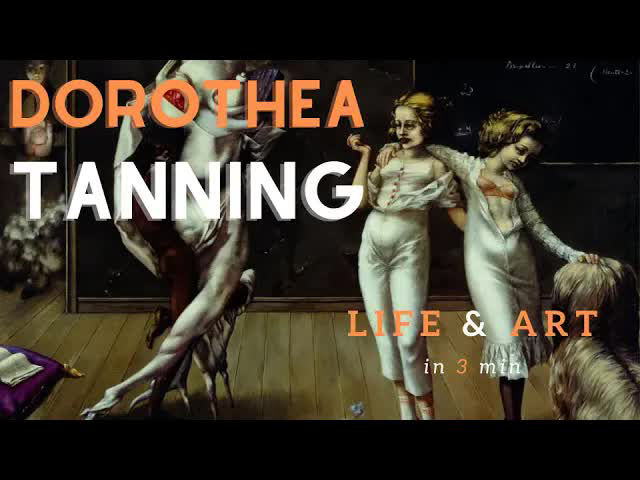
Diego Rivera
Between 1922 and 1953, Rivera painted murals in, among other places, Mexico City, Chapingo, and Cuernavaca, Mexico; and San Francisco, Detroit, and New York City, United States. In 1931, a retrospective exhibition of his works was held at the Museum of Modern Art in New York; this was before he completed his 27-mural series known as Detroit Industry Murals.
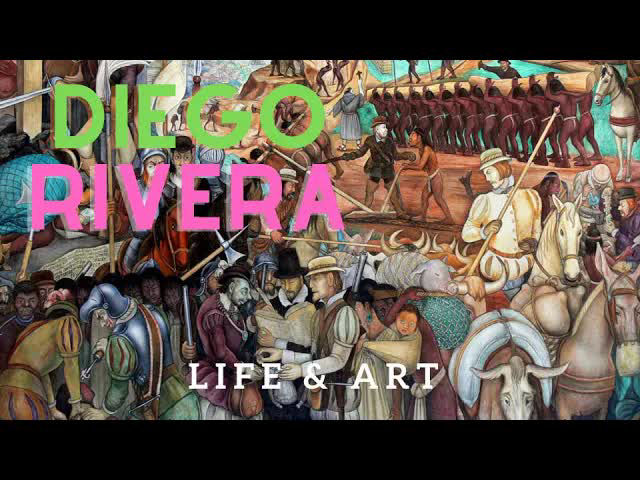
Auguste Rodin
Auguste Rodin (1840-1917) was a French sculptor widely regarded as one of the most important and influential artists in the history of modern sculpture. He is best known for his innovative and expressive approach to sculpting the human form. Rodin's work is often associated with the Impressionist and Symbolist movements in art.

Akira Toriyama
Akira Toriyama is a renowned Japanese manga artist and illustrator. He was born on April 5, 1955, in Nagoya, Japan. Toriyama is best known for creating some of the most iconic and popular manga and anime series in the world. His most famous work is the manga and anime series "Dragon Ball," which has become a global phenomenon and a significant part of popular culture. "Dragon Ball" began as a manga series in 1984 and was later adapted into several successful anime series, including "Dragon Ball," "Dragon Ball Z," "Dragon Ball GT," and "Dragon Ball Super." The story follows the adventures of Son Goku as he explores the world, battles powerful foes, and searches for the Dragon Balls, which can grant wishes. Toriyama's distinctive art style and his ability to create compelling characters and engaging storylines have made him a beloved figure in the world of manga and anime. Apart from "Dragon Ball," he has also worked on other notable manga series like "Dr. Slump" and "Blue Dragon." His contributions to the world of manga and anime have had a significant and lasting impact on the industry and have garnered a massive fan base worldwide.

Alice Aycock
Alice Aycock (born November 20, 1946) is an American sculptor and installation artist. She was an early artist in the land art movement in the 1970s, and has created many large-scale metal sculptures around the world. Aycock's drawings and sculptures of architectural and mechanical fantasies combine logic, imagination, magical thinking and science.

Akira Toriyama
Akira Toriyama (Japanese: 鳥山 明, Hepburn: Toriyama Akira, born April 5, 1955) is a Japanese manga artist and character designer. He first achieved mainstream recognition for his highly successful manga series Dr. Slump, before going on to create Dragon Ball (his best-known work) and acting as a character designer for several popular video games such as the Dragon Quest series, Chrono Trigger, and Blue Dragon. Toriyama is regarded as one of the authors who changed the history of manga, as his works are highly influential and popular, particularly Dragon Ball, which many manga artists cite as a source of inspiration. He earned the 1981 Shogakukan Manga Award for best shōnen manga with Dr. Slump, and it went on to sell over 35 million copies in Japan. It was adapted into a successful anime series, with a second anime created in 1997, 13 years after the manga ended. His next series, Dragon Ball, would become one of the most popular and successful manga in the world. Having sold 300 million copies worldwide, it is one of the best-selling manga series of all time and is considered to be one of the main reasons for the period when manga circulation was at its highest in the mid-1980s and mid-1990s. Overseas, Dragon Ball's anime adaptations have been more successful than the manga and are credited with boosting anime's popularity in the Western world. In 2019, Toriyama was decorated a Chevalier of the French Ordre des Arts et des Lettres for his contributions to the arts.

Alma W. Thomas
Alma Woodsey Thomas (September 22, 1891 – February 24, 1978) was an African-American artist and teacher who lived and worked in Washington, D.C., and is now recognized as a major American painter of the 20th century. Thomas is best known for the "exuberant", colorful, abstract paintings that she created after her retirement from a 35-year career teaching art at Washington's Shaw Junior High School. Thomas, who is often considered a member of the Washington Color School art movement but alternatively classified by some as an Expressionist, earned her teaching degree from University of the District of Columbia (known as Miner Normal School at the time). She was the first graduate of Howard University's art department, and maintained connections to that university through her life. She achieved success as an African-American female artist despite the segregation and prejudice of her time. Thomas's reputation has continued to grow since her death. Her paintings are displayed in notable museums and collections, and they have been the subject of several books and solo museum exhibitions. In 2021, a museum sold Thomas's painting Alma's Flower Garden in a private transaction for $2.8 million.
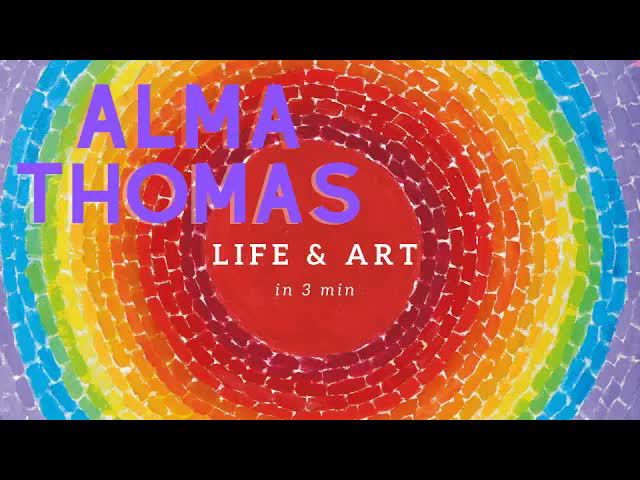
Auguste Rodin
François Auguste René Rodin (12 November 1840 – 17 November 1917) was a French sculptor,[1] generally considered the founder of modern sculpture.[2] He was schooled traditionally and took a craftsman-like approach to his work. Rodin possessed a unique ability to model a complex, turbulent, and deeply pocketed surface in clay. He is known for such sculptures as The Thinker, Monument to Balzac, The Kiss, The Burghers of Calais, and The Gates of Hell.

Alice Bailly
Alice Bailly, a Swiss painter and textile artist, was born in Geneva in 1872. She was a trailblazer in the field of modern art, known for her vibrant and eclectic works that combined various artistic styles and techniques. Bailly began her artistic training at a young age, studying at the School of Decorative Arts in Geneva. She later traveled to Munich, Germany, where she attended the Academy of Fine Arts. During her time in Munich, Bailly was exposed to the works of the German Expressionists and the avant-garde movements of the early 20th century, which greatly influenced her artistic development. Bailly's art defied traditional categorizations, as she seamlessly blended elements of Fauvism, Cubism, and Futurism, among other styles. Her paintings were characterized by their bold use of color, dynamic compositions, and a sense of movement. She often depicted everyday subjects, such as still lifes, landscapes, and portraits, infusing them with a vibrant energy and a sense of modernity. One of Bailly's notable contributions to the art world was her use of collage and mixed media. She incorporated various materials into her works, including newspaper clippings, fabric, and wallpaper, adding texture and depth to her compositions. By incorporating these elements, Bailly challenged the traditional boundaries of painting and embraced the idea of art as a multidimensional and sensory experience. Bailly's art was also deeply influenced by her feminist beliefs and her commitment to social and political issues of her time. She actively participated in the women's suffrage movement, using her art as a means of expressing her political views. Her works often depicted strong, independent women, and she championed themes of gender equality and social justice. Throughout her career, Bailly exhibited extensively, both in Switzerland and internationally. Her art received critical acclaim and was recognized for its originality and innovative approach. However, despite her achievements, Bailly's work was often overlooked in art history narratives, and she did not receive the same level of recognition as her male counterparts. In recent years, there has been a renewed interest in Bailly's art, and her contributions to modernism are being reassessed. Her ability to combine different artistic styles, her exploration of collage and mixed media, and her dedication to feminist and social issues have made her an important figure in the development of modern art. Alice Bailly's legacy as an artist is one of creativity, experimentation, and social consciousness. Her willingness to defy artistic conventions and her commitment to expressing her beliefs through art have inspired subsequent generations of artists. Bailly's art continues to captivate viewers with its vibrant colors, dynamic compositions, and its ability to transcend traditional boundaries. Her contributions to the art world are a testament to the power of individuality and the importance of embracing diversity within artistic expression.
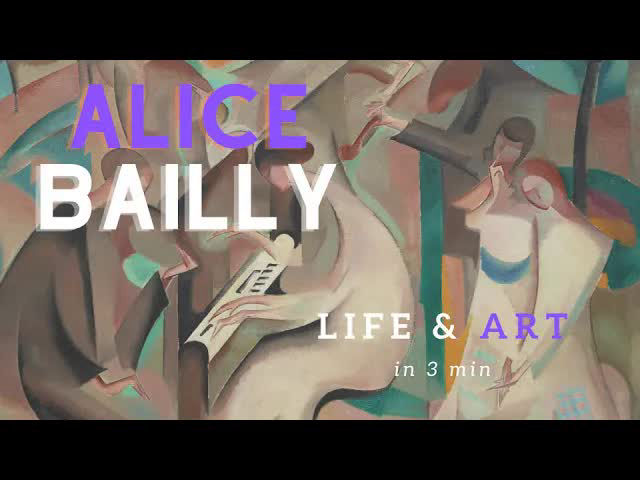
James Rosenquist
Art in 5 - James Rosenquist James Rosenquist was an American painter who played a significant role in the Pop Art movement of the 1960s. He was born on November 29, 1933, in Grand Forks, North Dakota, and grew up in Minneapolis. He was known for his monumental Pop Art paintings that often incorporated fragmented images from advertising and popular culture. He was born in Grand Forks, North Dakota, and spent much of his childhood moving around the Midwest due to his father's job as an airplane mechanic. Rosenquist studied art at the University of Minnesota before moving to New York City in the late 1950s to pursue a career as an artist. He began his career as a commercial painter, creating billboards and advertisements for various companies. This experience would later influence his art, as he began incorporating images from advertising and mass media into his paintings. In the early 1960s, Rosenquist became associated with the Pop Art movement, which was characterized by its use of popular imagery and bright, bold colors. He gained critical acclaim for his large-scale paintings, which often featured fragments of images from advertising and popular culture arranged in surreal and unexpected ways. Some of his most famous works include "F-111" (1965), a monumental painting that measures 86 feet long, and "Marilyn Monroe I" (1962), a portrait of the famous actress created from fragments of images from magazines and advertisements. Rosenquist was also known for his printmaking, creating numerous lithographs and screenprints throughout his career. He collaborated with several famous printmakers, including Gemini G.E.L. and ULAE, to create innovative and technically complex prints. Throughout his career, Rosenquist remained politically engaged and committed to social justice issues. He was a vocal critic of the Vietnam War and created several works that addressed political and social issues, including "The Fireman's Coat" (1983), a painting that critiques the Reagan administration's policies towards nuclear war. Rosenquist continued to work as an artist until his death in 2017. His work remains influential and continues to be celebrated for its innovative use of popular imagery and its commentary on the mass media and consumer culture
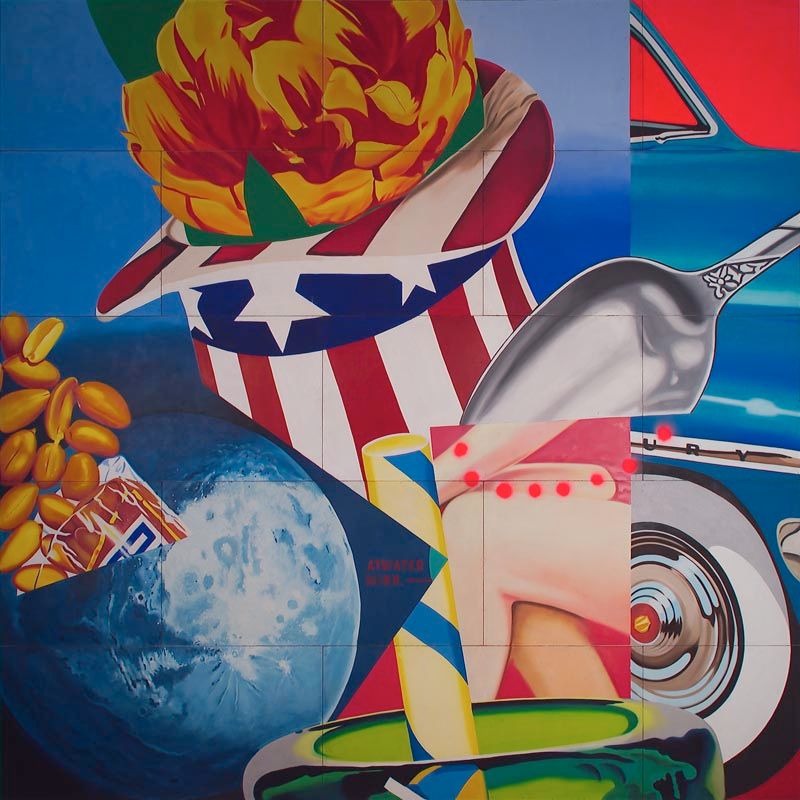
Mary Cassatt
Discover the world of art and expand your knowledge with Art in 5 Art in 5 - Mary Cassatt Mary Cassatt was an American painter and printmaker who is known for her portraits and depictions of everyday life, particularly of women and children. She was born in 1844 in Allegheny City, Pennsylvania, to a well-to-do family, and spent much of her early life in Europe, studying art in Paris and Rome. Cassatt began her artistic career studying under various masters in Europe, including Jean-Léon Gérôme and Thomas Couture. She eventually settled in Paris, where she was exposed to the Impressionist movement and its emphasis on capturing the effects of light and color in outdoor settings. Cassatt was especially interested in depicting women and children, and her works often feature intimate scenes of mothers and their children. She used bold, vibrant colors and quick brushstrokes to create a sense of spontaneity and immediacy in her paintings. In 1877, Cassatt was invited to join the Impressionists, becoming one of the few women to be included in their ranks. She exhibited her work alongside other prominent Impressionist painters, such as Edgar Degas, Claude Monet, and Pierre-Auguste Renoir. Cassatt's work was highly regarded by her peers, and she was known for her innovative use of color and composition. She also experimented with printmaking, producing a series of highly sought-after etchings and drypoints that depicted the everyday lives of women and children. One of Cassatt's most famous paintings is "The Child's Bath," which shows a mother and child in a private moment. The painting captures the intimacy and tenderness of the moment, with the mother carefully washing her child's feet while the child looks up at her with trust and affection. Cassatt continued to paint and exhibit her work throughout her life, and she became a highly respected figure in the art world. She also played an important role in introducing French Impressionist art to American audiences, helping to establish a market for modern art in the United States. Today, Cassatt's work is recognized as a significant contribution to the Impressionist movement, and her paintings and prints are highly valued by collectors and museums around the world. Her unique perspective on the lives of women and children has influenced countless artists, and her legacy continues to inspire new generations of painters and printmakers.
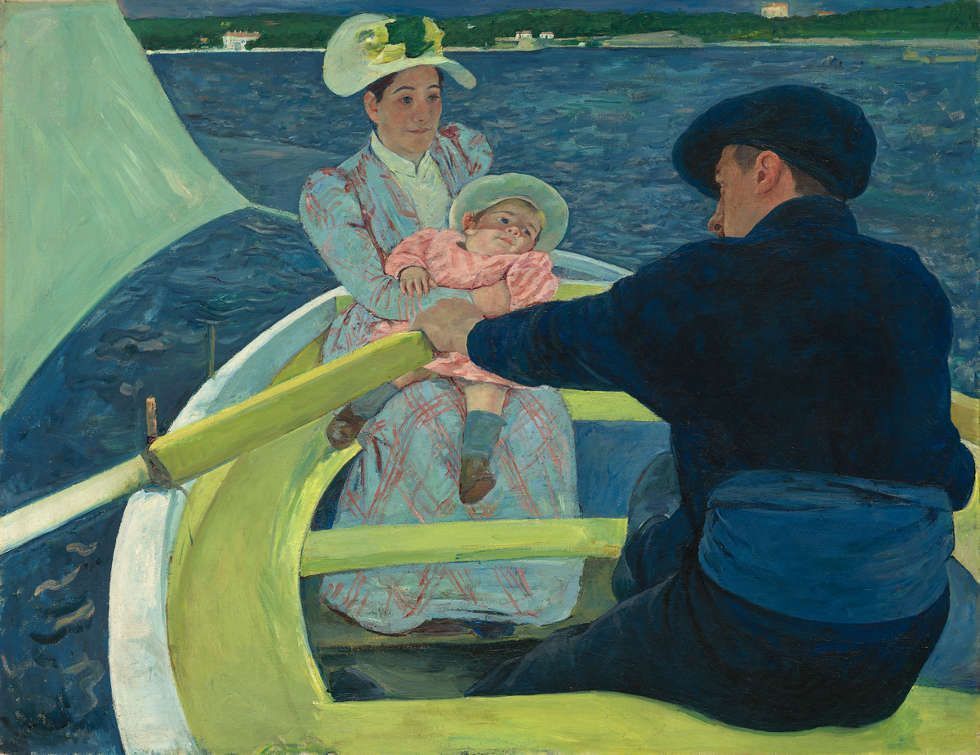
Sol LeWitt
Discover the world of art and expand your knowledge with Art in 5 Art in 5 - Sol LeWitt Sol LeWitt was a renowned American artist known for his contributions to the Conceptual Art movement. He was born in 1928 in Hartford, Connecticut, and grew up in New Britain. LeWitt studied at Syracuse University, where he earned a Bachelor of Fine Arts degree in 1949. LeWitt began his career as an artist in the 1960s, a time when the art world was undergoing significant changes. It was during this period that Conceptual Art emerged as a major new movement, challenging traditional notions of art and creativity. LeWitt quickly became a leading figure in this movement, and his work would go on to have a profound influence on the course of contemporary art. One of LeWitt's most significant contributions to Conceptual Art was his embrace of the idea that the concept or idea behind a work of art was more important than the final product itself. This idea became a cornerstone of Conceptual Art and set it apart from traditional art forms, which focused more on the physical creation of objects. LeWitt's work was characterized by its simplicity and geometric forms. He used basic shapes such as squares, circles, and triangles, arranging them in patterns that were often repeated throughout his work. He also explored the use of color, using bright, bold hues to create a sense of energy and movement in his pieces. One of LeWitt's most famous series of works is his "Wall Drawings," which he began creating in the 1960s. These pieces were large-scale, site-specific installations that covered entire walls with geometric shapes and patterns. Each piece was unique, designed specifically for the space in which it was created. LeWitt created hundreds of Wall Drawings throughout his career, and they remain some of his most significant and influential works. LeWitt's work was not only influential within the art world but also had a significant impact on design and architecture. He was commissioned to create many public artworks, including murals, sculptures, and installations, which are still on display in cities around the world. In addition to his art, LeWitt was also a prolific writer and thinker on the subject of art and creativity. He wrote extensively about his own work and the work of others, contributing to the ongoing conversation about the nature and purpose of art. LeWitt continued to create art until his death in 2007, leaving behind a legacy that continues to inspire and influence artists and thinkers around the world. His emphasis on the importance of concept and his use of simple geometric forms have had a lasting impact on the art world, challenging traditional notions of what art can be and inspiring new generations of artists to push the boundaries of creativity.
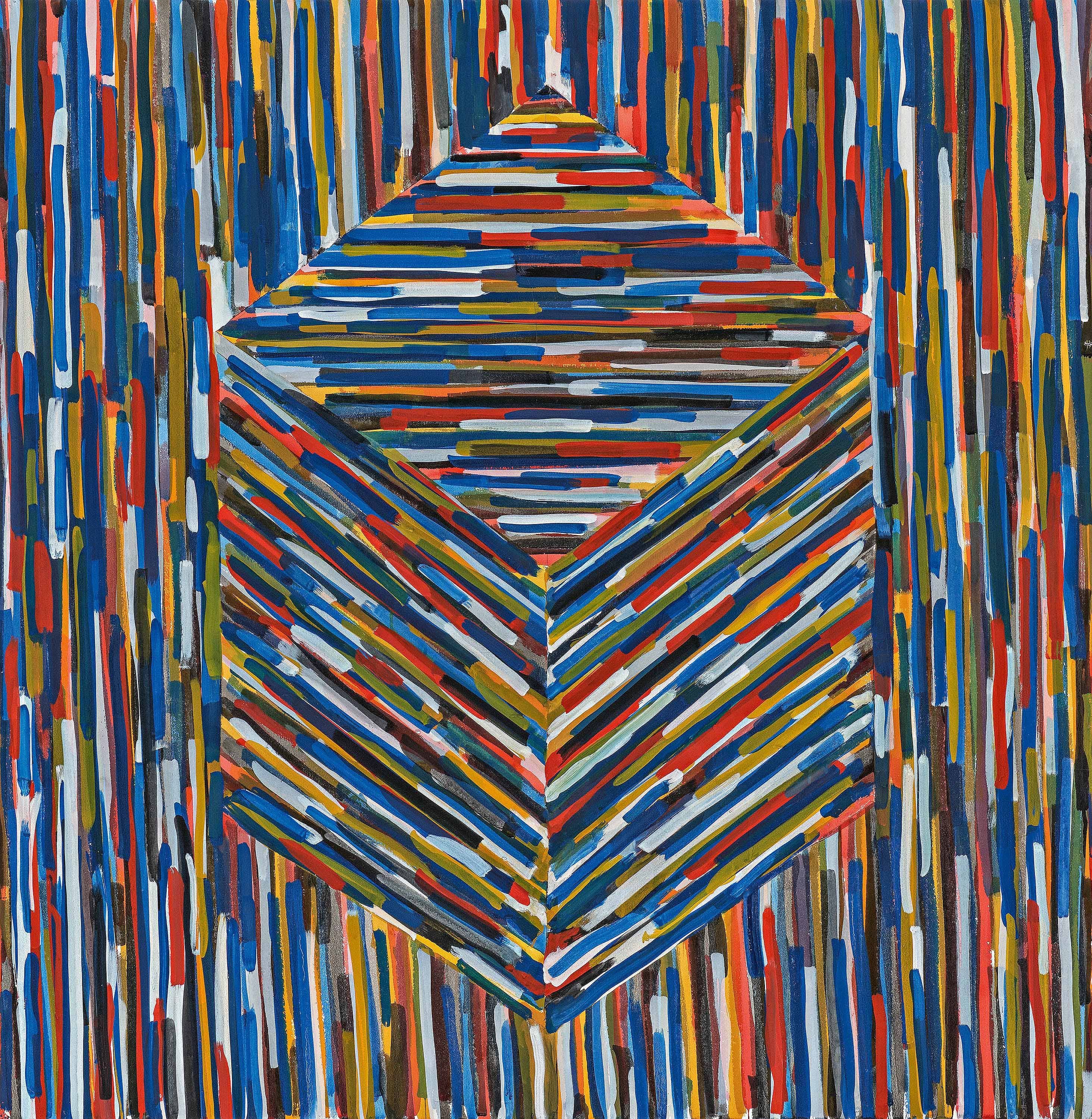
Sonia Delaunay
Art in 5 - Sonia Delaunay Sonia Delaunay was a Russian-born artist and designer who played a key role in the development of the avant-garde movement in Europe in the early 20th century. She was born Sarah Stern in 1885 in Ukraine, but later changed her name to Sonia Terk when she moved to Paris in 1905 to study art. There, she met her future husband, the painter Robert Delaunay, with whom she would collaborate on many of her most famous works. Together, Sonia and Robert developed a style of painting that they called Simultaneism, which emphasized the use of bright colors and geometric shapes to create dynamic, multi-layered compositions. They were inspired by the new technologies of the time, such as electricity and telegraphy, which they saw as emblematic of the modern era. Sonia's work was particularly innovative in its use of color. She was one of the first artists to recognize the expressive potential of color, using it not just as a means of representation, but as an independent element of design. She created vibrant, abstract compositions that explored the interplay of color, shape, and light. In addition to her work as a painter, Sonia was also an accomplished designer. She applied the same principles of color and geometric abstraction to textiles, fashion, and home decor, creating bold, modern designs that were unlike anything that had been seen before. She collaborated with many major fashion houses, including Liberty of London and Jacques Heim, and her designs were worn by some of the most fashionable women of the day. Sonia's work was celebrated in her lifetime, and she was one of the few women artists to achieve significant recognition and success during the early 20th century. She exhibited her work in major galleries and museums throughout Europe and the United States, and her designs were widely admired and imitated. Despite her achievements, Sonia faced significant challenges as a female artist and designer in a male-dominated field. She had to fight against the prevailing attitudes of the time, which saw women as inferior and incapable of producing serious art. But she refused to be discouraged, and continued to push the boundaries of what was possible in art and design. Sonia's legacy continues to inspire and influence artists and designers today. Her innovative use of color and geometric abstraction paved the way for many of the artistic movements that followed, including Abstract Expressionism and Op Art. Her designs are still admired for their bold, modern aesthetic, and her pioneering spirit continues to serve as a model for women in the arts and beyond.
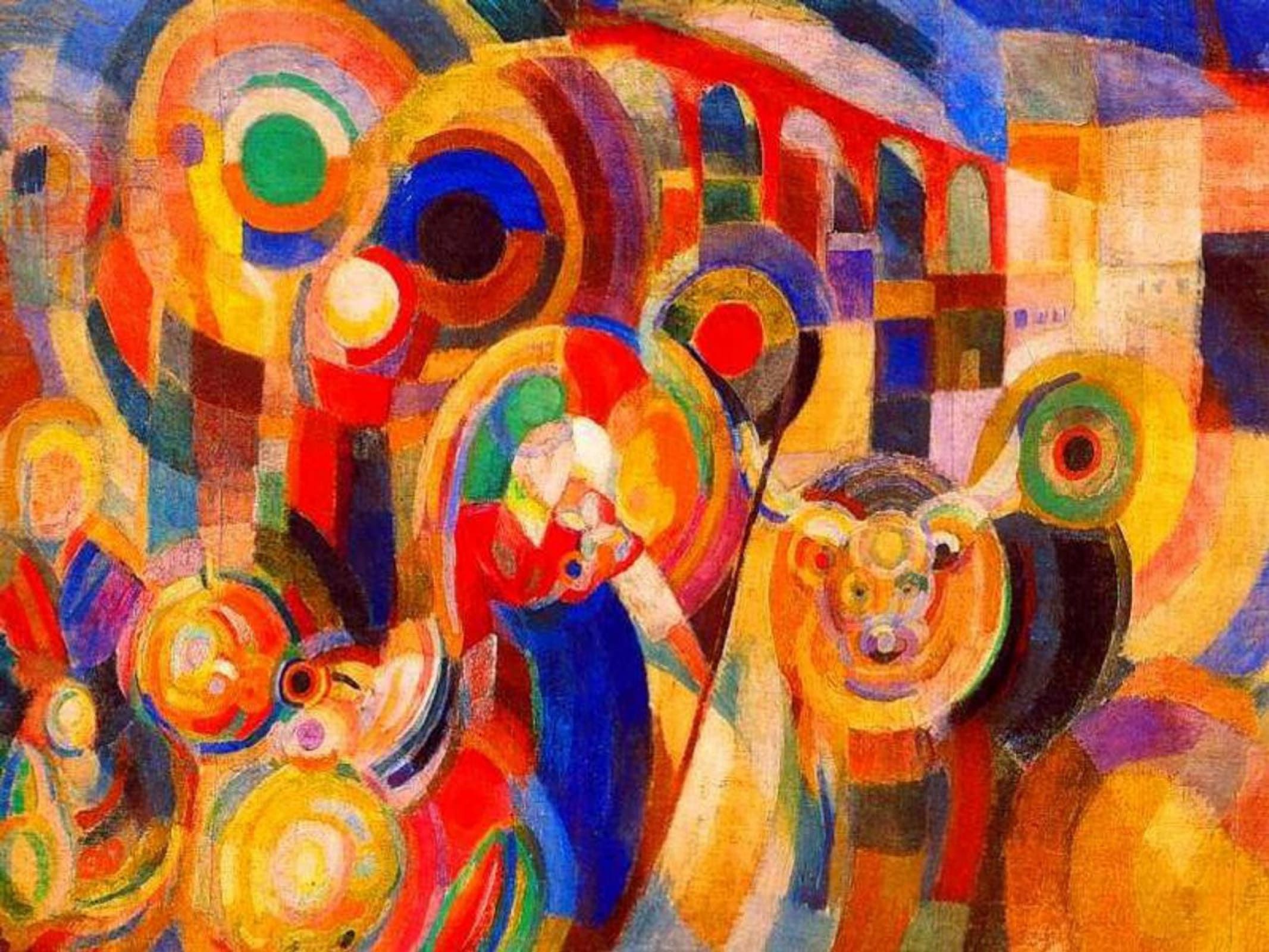
Yayoi Kusama
Art in 5 - Yayoi Kusama Yayoi Kusama is a Japanese artist who was born in Matsumoto, Nagano, Japan, in 1929. Her life and work have been shaped by her experiences growing up in Japan during World War II and her subsequent move to the United States in the late 1950s. Kusama is best known for her avant-garde sculptures, installations, and paintings, which are characterized by their bold use of color, repetitive patterns, and immersive environments. Her work often explores themes of infinity, self-obliteration, and the relationship between the individual and the collective. Kusama began making art at a young age, and she showed an early aptitude for painting and drawing. However, her family was not supportive of her artistic aspirations, and they often discouraged her from pursuing her passions. Despite these obstacles, Kusama continued to create art and eventually moved to Tokyo to study painting at the Kyoto School of Arts and Crafts. In the late 1950s, Kusama moved to the United States, where she quickly became a fixture of the New York avant-garde scene. She befriended artists such as Donald Judd, Andy Warhol, and Claes Oldenburg, and she quickly gained a reputation for her groundbreaking work in sculpture and installation art. Kusama's work during this period was characterized by its use of repetitive patterns, bright colors, and the incorporation of everyday objects. One of Kusama's most famous works from this period is "Infinity Mirror Room - Phalli's Field," which she created in 1965. The installation consisted of a room filled with hundreds of phallic-shaped soft sculptures, which were arranged on the floor and hanging from the ceiling. The walls of the room were covered in mirrors, creating the illusion of an infinite field of phalluses. The work was a critical success and helped to establish Kusama as one of the most innovative and daring artists of her time. Throughout the 1960s, Kusama continued to push the boundaries of art and explore new mediums and techniques. She created sculptures made from fiberglass and other synthetic materials, and she experimented with performance art and happenings. Her work during this period was often influenced by her interest in politics and social issues, and she was a vocal advocate for women's rights and anti-war activism. In the 1970s, Kusama returned to Japan, where she continued to create art and explore new mediums. She began to work more with painting and drawing, and her work during this period often featured large-scale canvases covered in polka dots and other repeating patterns. She also began to incorporate elements of traditional Japanese art into her work, such as calligraphy and woodblock prints. In the decades that followed, Kusama continued to create innovative and groundbreaking work. She returned to sculpture in the 1990s, creating large-scale installations that explored themes of love, sexuality, and mortality. She also continued to work with painting and drawing, and her work during this period often featured her signature polka dots and bold use of color. Today, Kusama is one of the most celebrated and influential artists of her generation. Her work has been exhibited in major museums and galleries around the world, and she has been the subject of numerous books, documentaries, and exhibitions. Her legacy continues to inspire and captivate audiences, and she remains an icon of the contemporary art world.
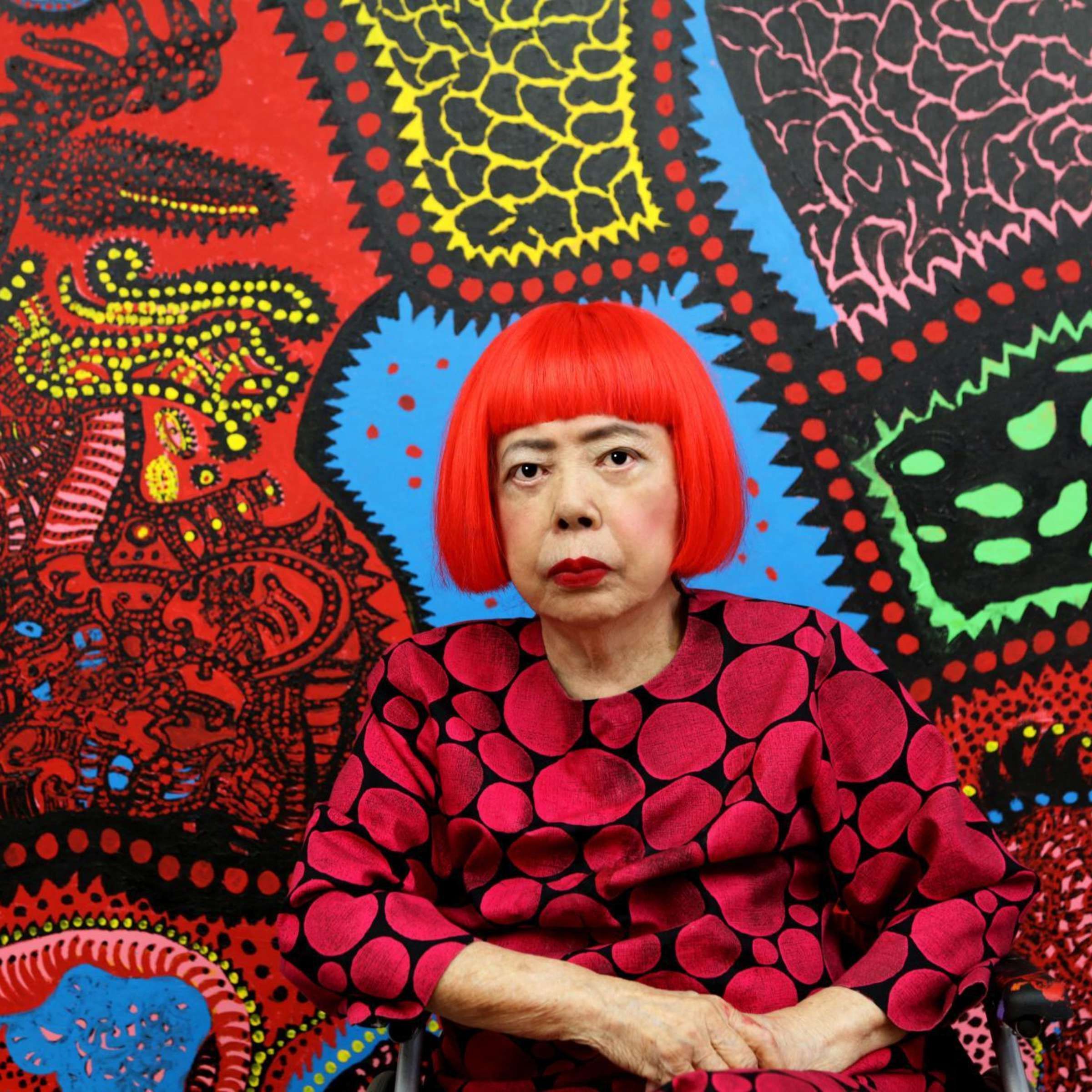
Kara Walker
Art in 5 - Kara Walker Kara Walker is one of the most prominent contemporary artists of our time. Born in Stockton, California in 1969, Walker rose to fame in the 1990s with her powerful and provocative works that explored issues of race, gender, and power. Walker's signature medium is cut-paper silhouettes, which she uses to create intricate and detailed scenes that are at once beautiful and disturbing. Her works often depict scenes of slavery and racial violence, challenging viewers to confront the dark and painful history of the United States. One of Walker's most famous works is "Gone: An Historical Romance of a Civil War as It Occurred Between the Dusky Thighs of One Young Negress and Her Heart," a large-scale installation that was first exhibited in 1994. The work features a series of life-size cut-paper silhouettes arranged in a circular formation, depicting a grotesque and violent scene of slavery and sexual violence. The installation was highly controversial, with some critics accusing Walker of promoting racist stereotypes and exploiting the history of slavery for shock value. Others praised the work for its powerful critique of the legacy of slavery and its lasting impact on American society. Walker has continued to create innovative and thought-provoking works throughout her career. In 2014, she was commissioned to create a massive public sculpture for the Domino Sugar Factory in Brooklyn, New York. The sculpture, titled "A Subtlety, or the Marvelous Sugar Baby," featured a gigantic sphinx-like figure covered in sugar, surrounded by smaller sculptures of slave children. The installation was a massive success, drawing thousands of visitors to the site and sparking a national conversation about the legacy of slavery and the ongoing struggles for racial justice in the United States. Walker's works have been exhibited in museums and galleries around the world, and she has won numerous awards and accolades for her contributions to contemporary art. Her legacy continues to inspire and challenge viewers to confront the difficult truths of our history and work towards a more just and equitable future.
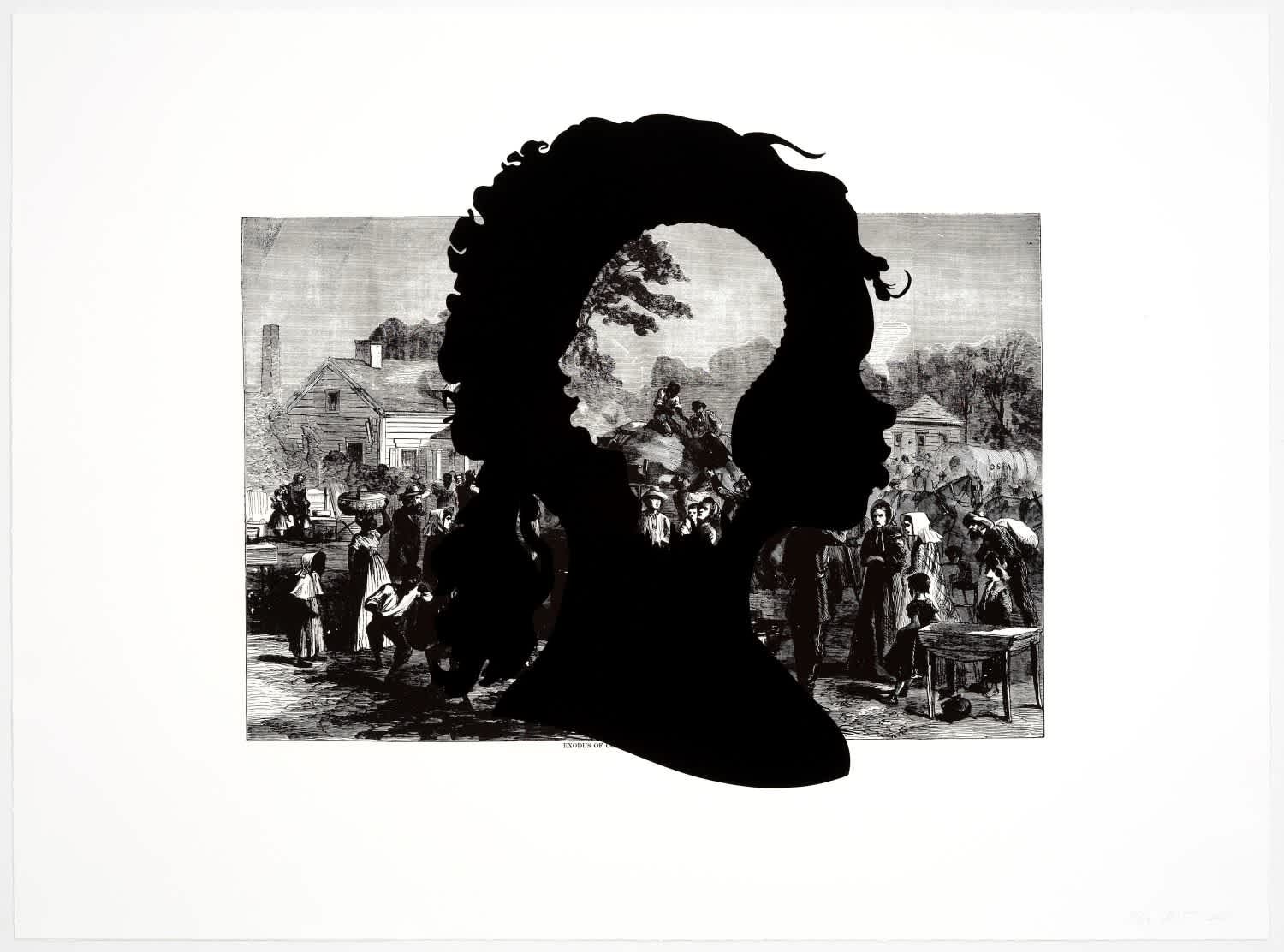
Marlene Dumas
Art in 5 - Marlene Dumas Marlene Dumas is a renowned artist born in South Africa in 1953. She is known for her emotionally charged and thought-provoking works, which often explore themes of identity, gender, race, and sexuality. Dumas grew up during the apartheid era, and her experiences of living in a segregated society have greatly influenced her art. Dumas began her artistic career studying at the University of Cape Town, where she developed her skills as a painter. She later moved to the Netherlands, where she became a Dutch citizen and continued to develop her unique style. Her early works often featured haunting portraits of women and children, which were marked by their striking use of color and shadow. One of Dumas' most well-known works is "The White Disease," a series of paintings that explore the impact of the AIDS epidemic on society. The series features a collection of portraits of people suffering from the disease, and it has been praised for its powerful commentary on the stigma and discrimination faced by those living with AIDS. Another notable work by Dumas is "The Image as Burden," a retrospective exhibition that was held at the Tate Modern in London in 2015. The exhibition showcased Dumas' most iconic works from her career, and it was widely regarded as a testament to her status as one of the most important contemporary artists of our time. Dumas' works often challenge traditional notions of beauty and perfection, and they are known for their raw, emotional power. Her portraits are characterized by their loose, fluid brushstrokes, which give them a sense of movement and dynamism. Her use of color is also notable, with many of her works featuring a subdued palette that emphasizes the mood and atmosphere of the piece. Throughout her career, Dumas has been the recipient of numerous awards and honors. In 2011, she was awarded the prestigious Johannes Vermeer Award, which is given annually to a Dutch artist or designer who has made a significant contribution to the arts. She has also been honored with exhibitions at some of the world's most prestigious museums, including the Museum of Modern Art in New York and the Stedelijk Museum in Amsterdam. Dumas' influence on the art world is significant, and her works continue to inspire and challenge artists and audiences alike. Her willingness to tackle difficult and often taboo subjects has helped to pave the way for a new generation of artists, who are eager to explore the complexities of the human experience through their work. In conclusion, Marlene Dumas is a visionary artist who has made a profound impact on the art world. Her powerful, emotionally charged works have challenged and inspired audiences for decades, and her legacy as a trailblazer and iconoclast will continue to resonate for years to come.

Gustav Klimt
In this episode of Art in 5, we will delve into the fascinating world of Austrian painter Gustav Klimt. Klimt was a prominent member of the Vienna Secession movement, a group of artists who rebelled against the academic tradition in favor of more experimental and avant-garde styles.
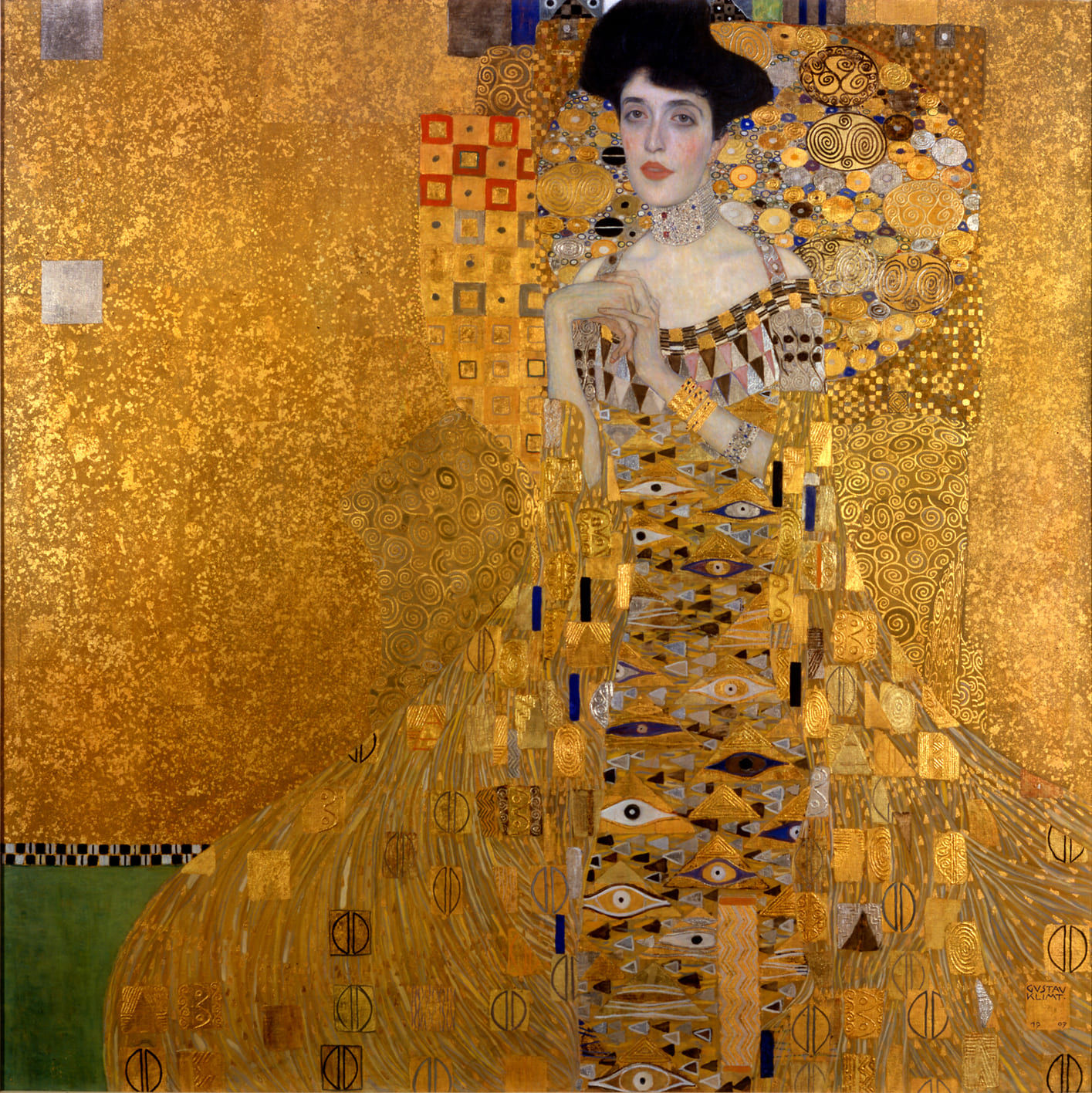
Trailer - Art in 5
Welcome to "Art in 5", the podcast that gives you bite-sized insights into some of the most iconic artists and art movements in history. In each episode, we'll explore a different topic, ranging from the groundbreaking works of Renaissance masters to the vibrant expressionism of the 20th century. The best part? Our episodes are never longer than 5 minutes, so you can fit them into your busy schedule and expand your knowledge on the go. Whether you're an art enthusiast or just looking to learn something new, "Art in 5" is the perfect podcast for you. So sit back, relax, and let's dive into the fascinating world of art!
